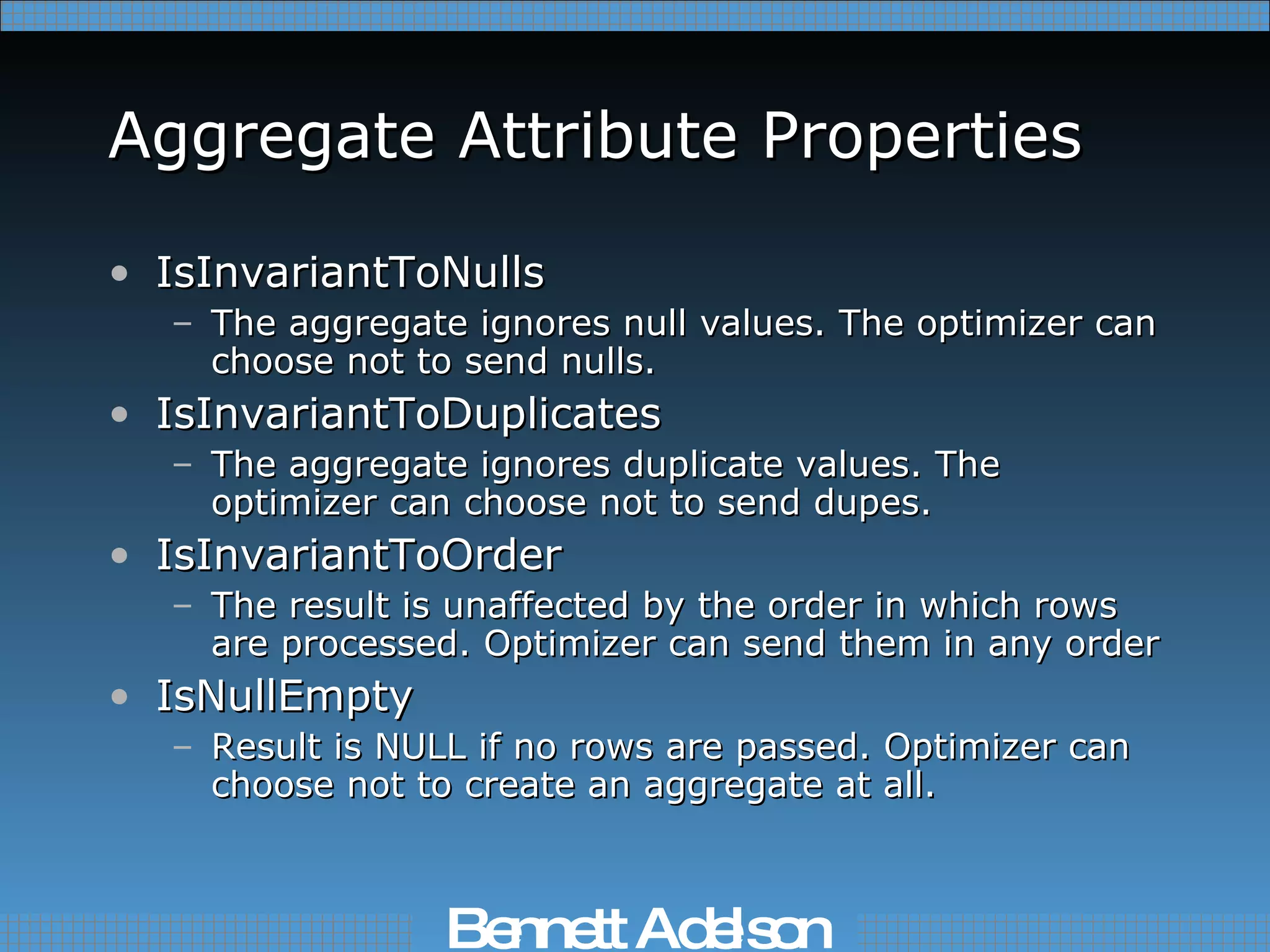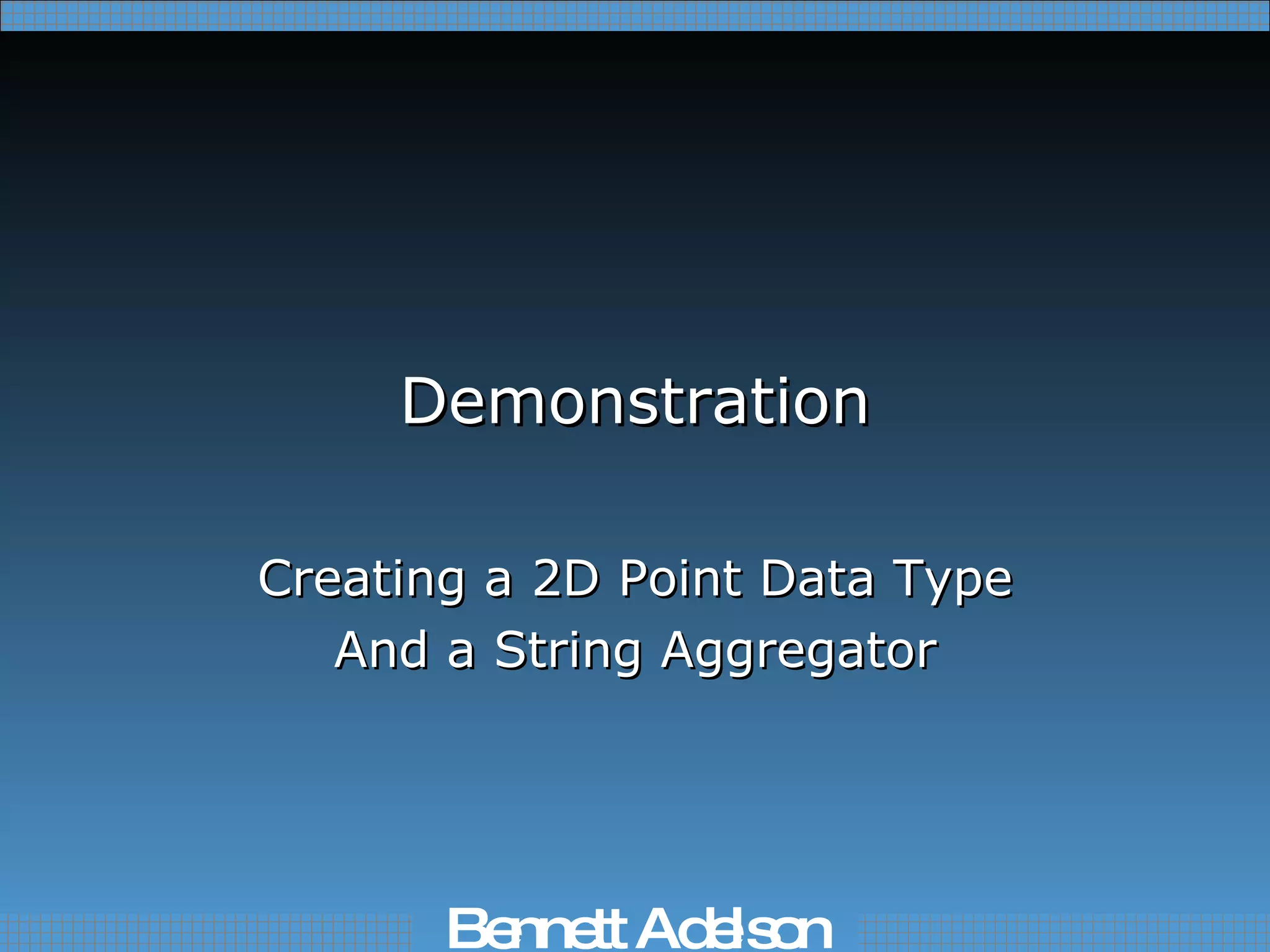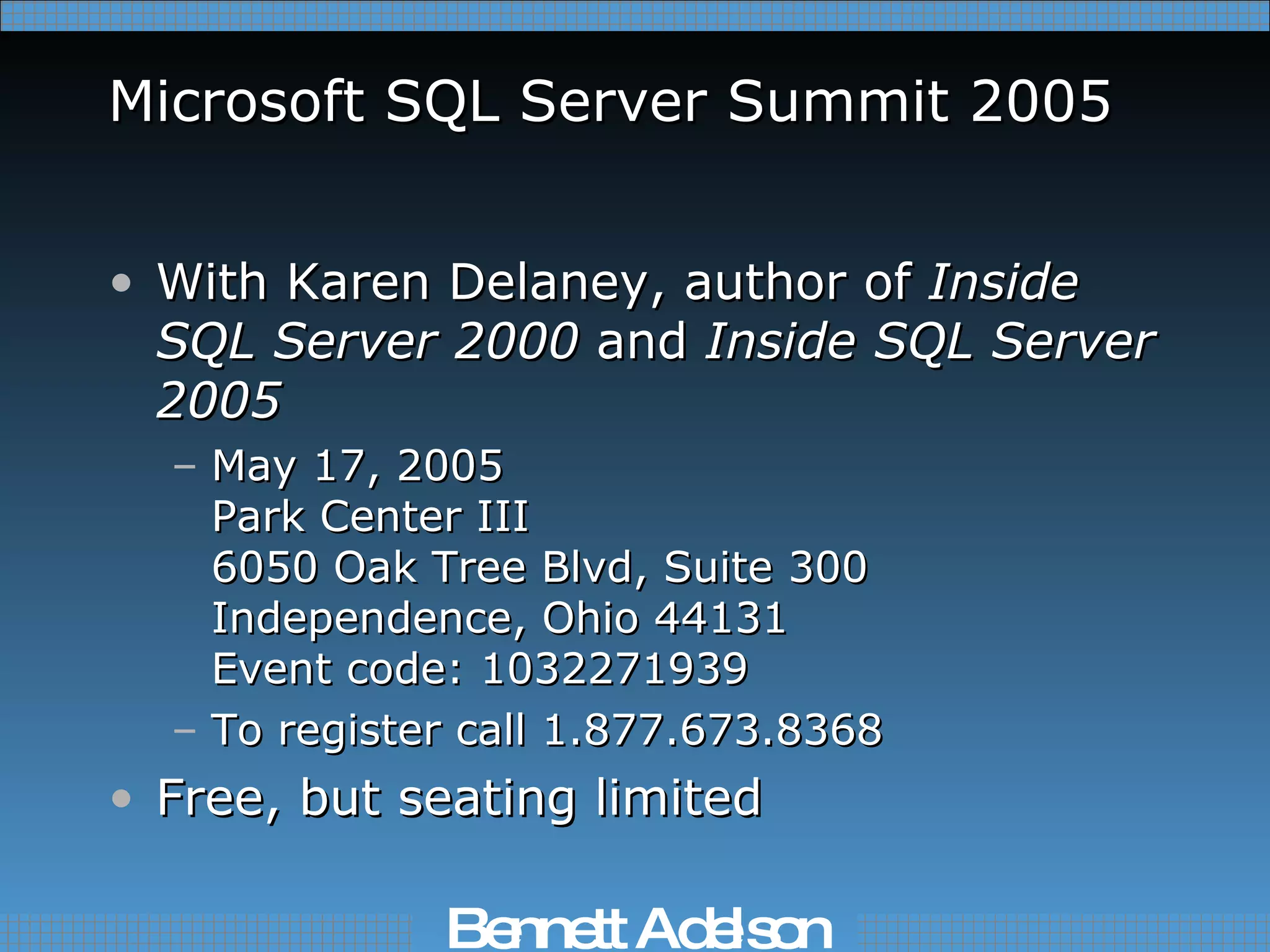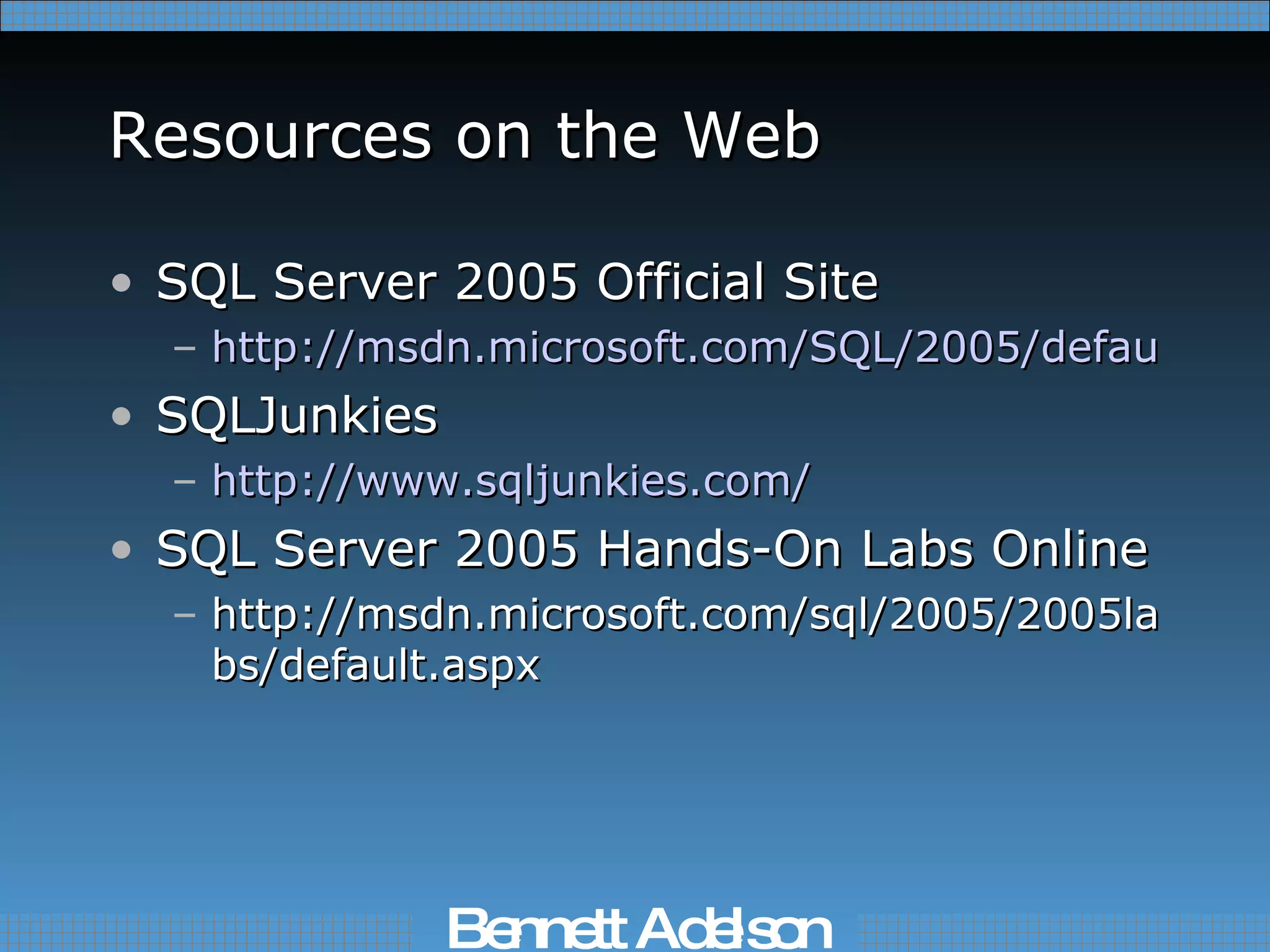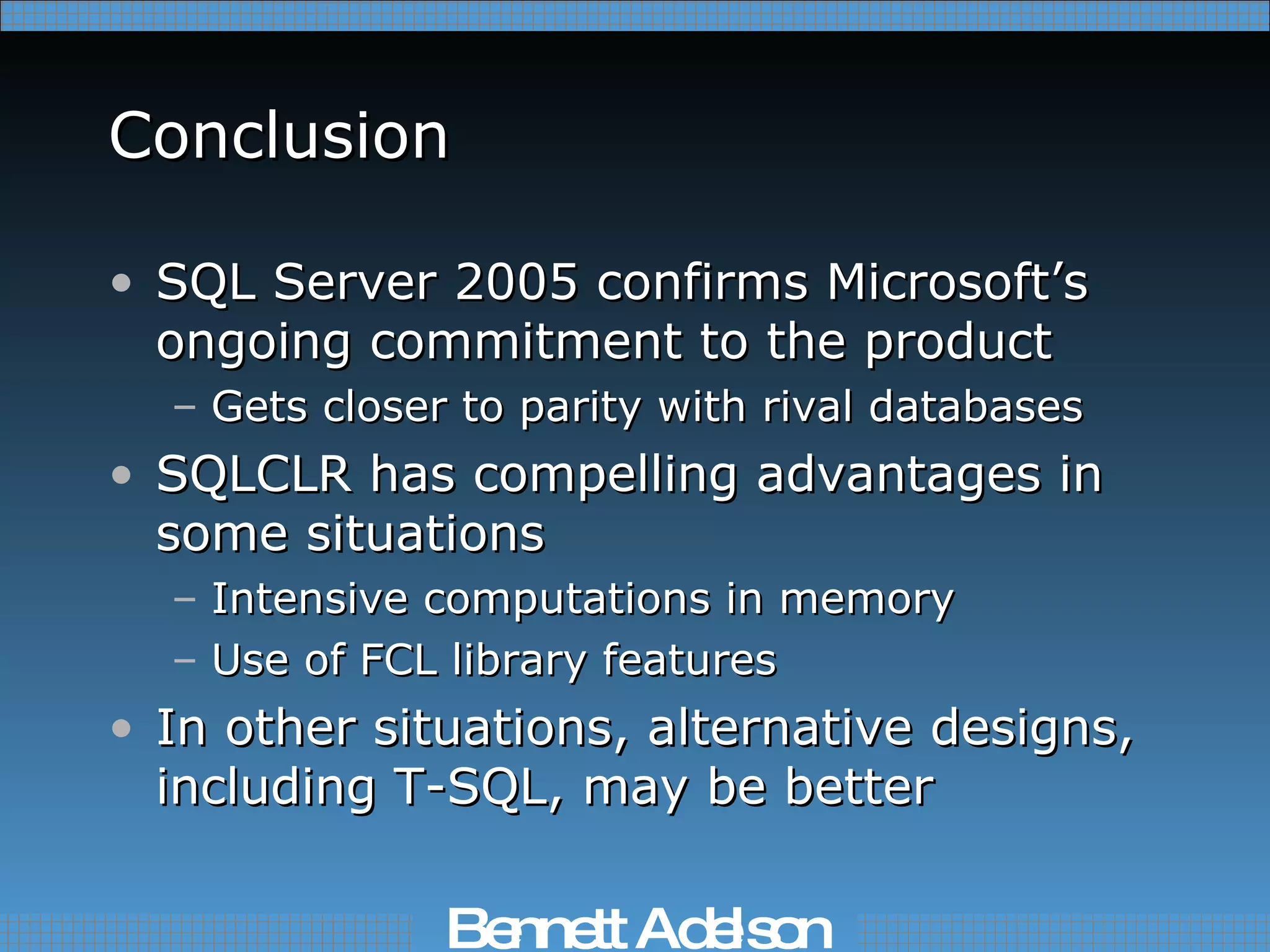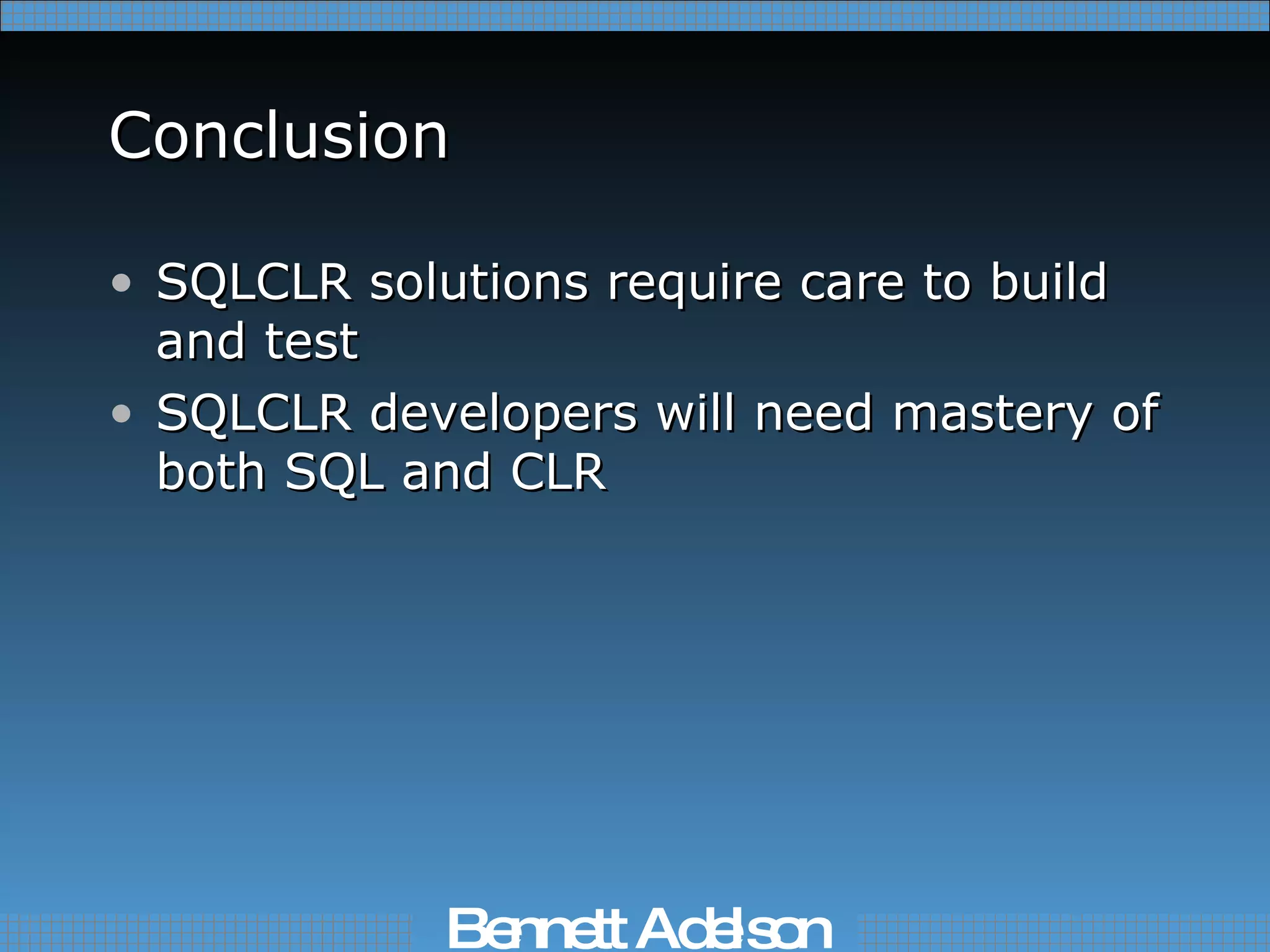This document provides an overview of new features in SQL Server 2005, including SQLCLR which allows writing functions, procedures and triggers in .NET languages. It discusses how to install and debug SQLCLR assemblies, and create user-defined data types and aggregates that can extend the functionality of SQL Server. Key enhancements to T-SQL are also summarized, such as common table expressions, ranking commands, and exception handling.
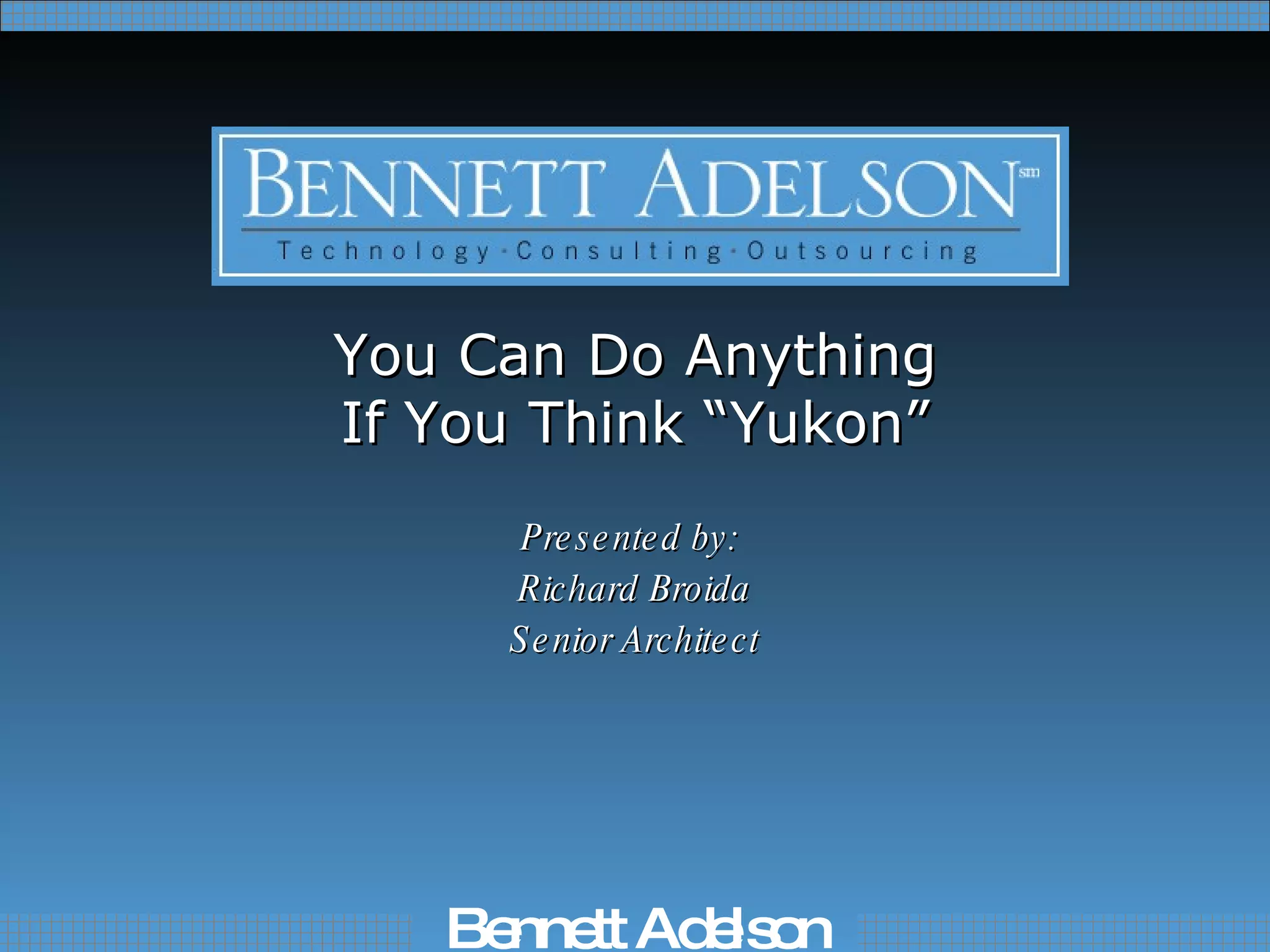
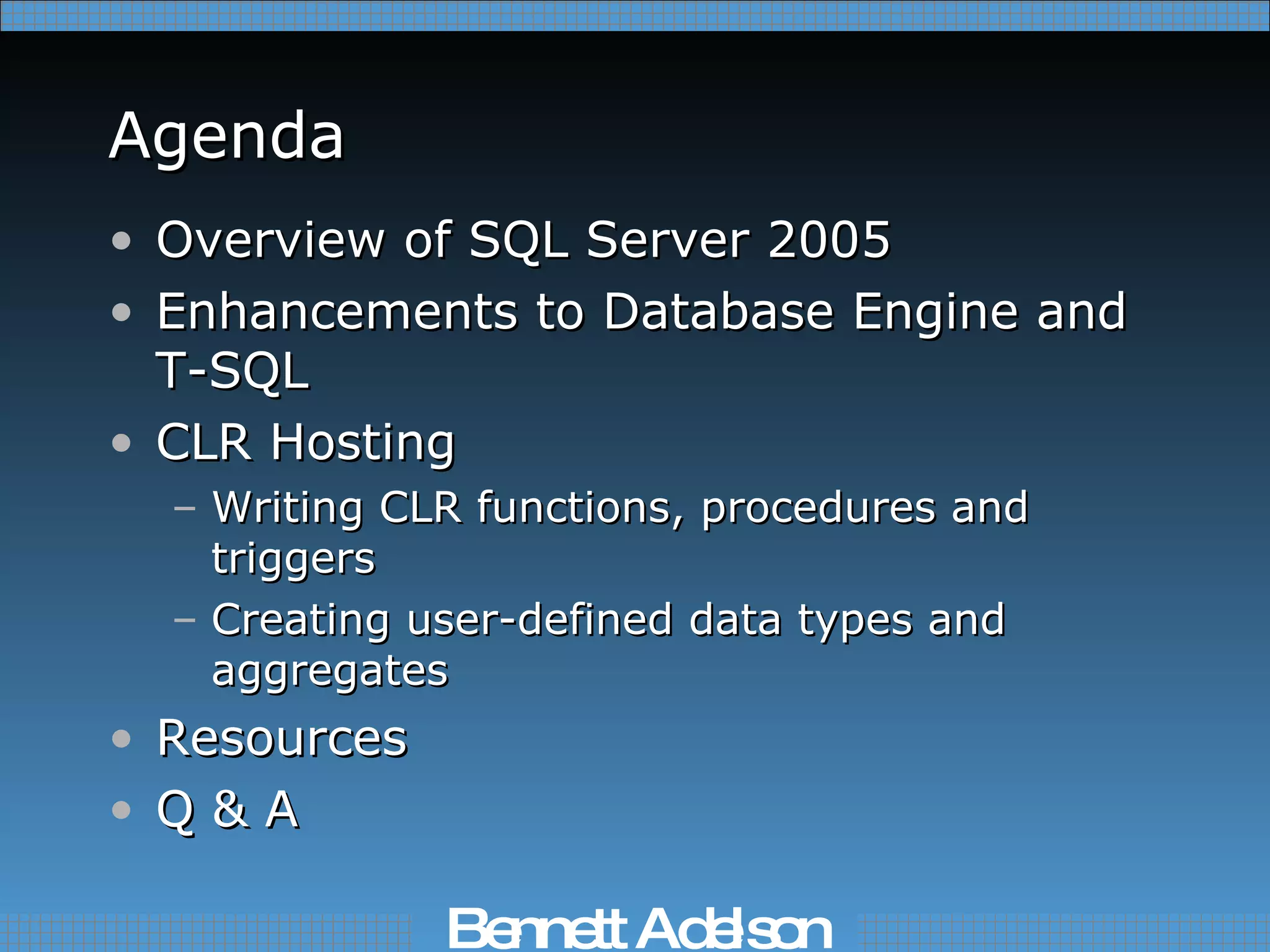
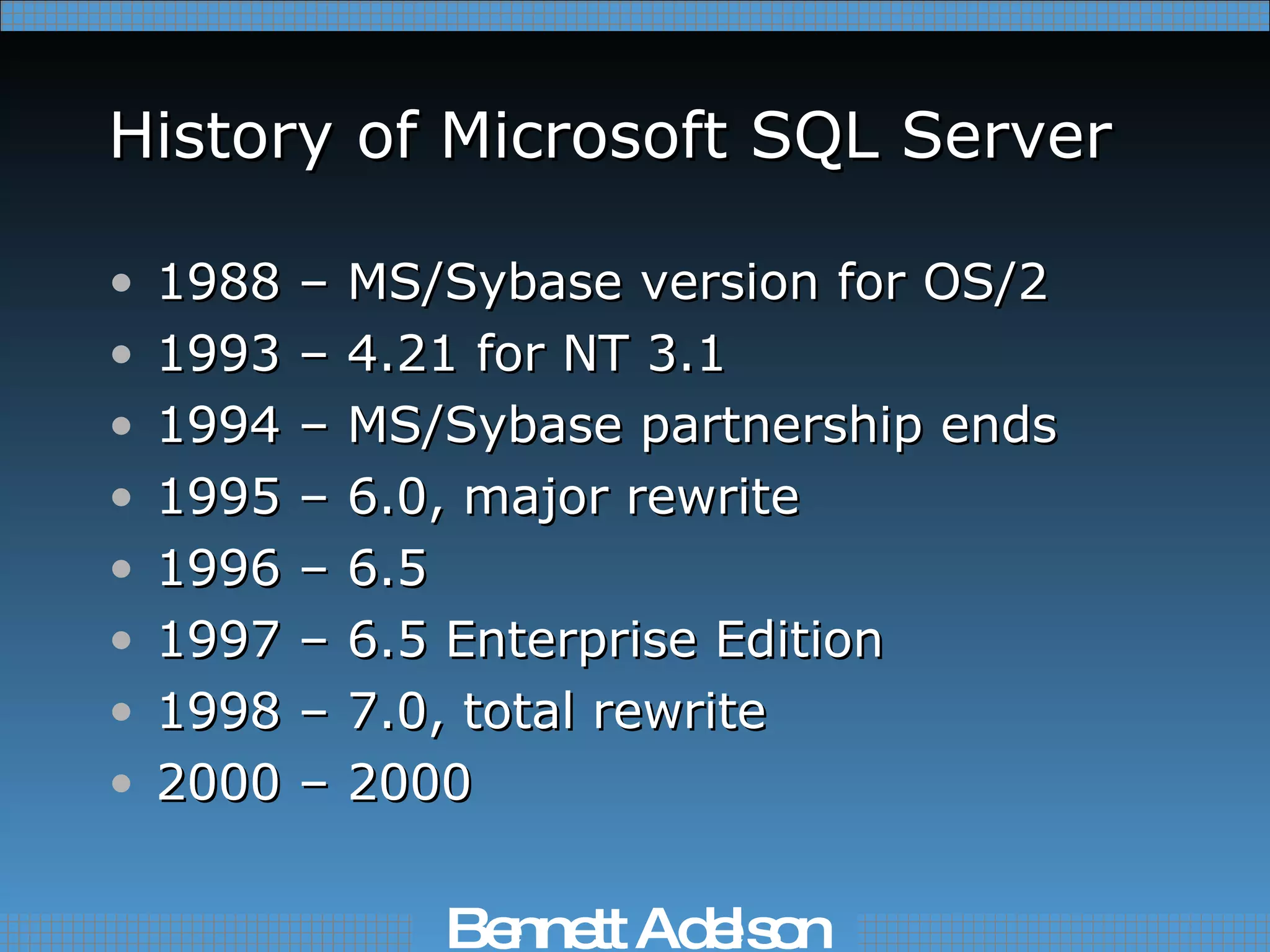
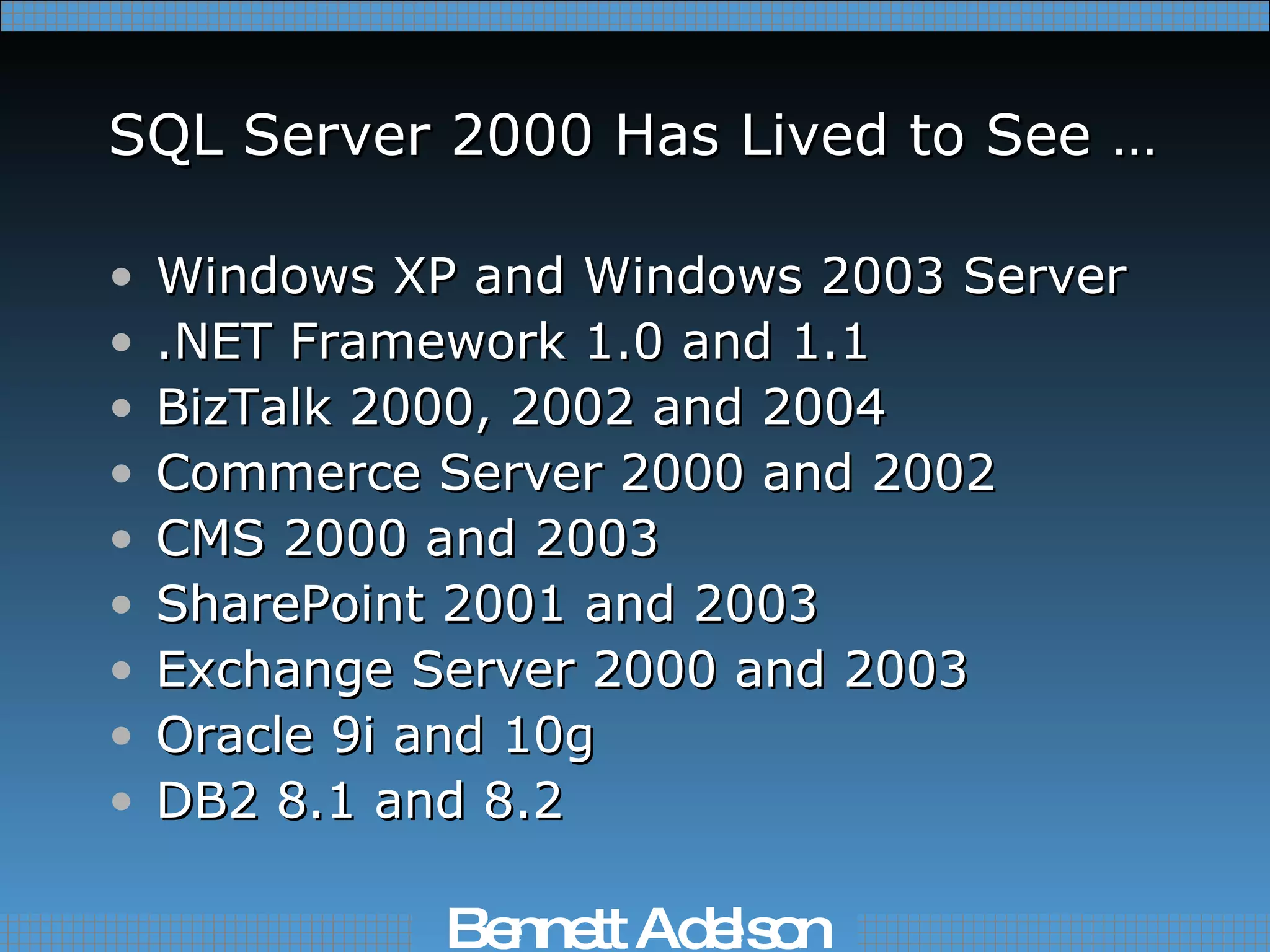
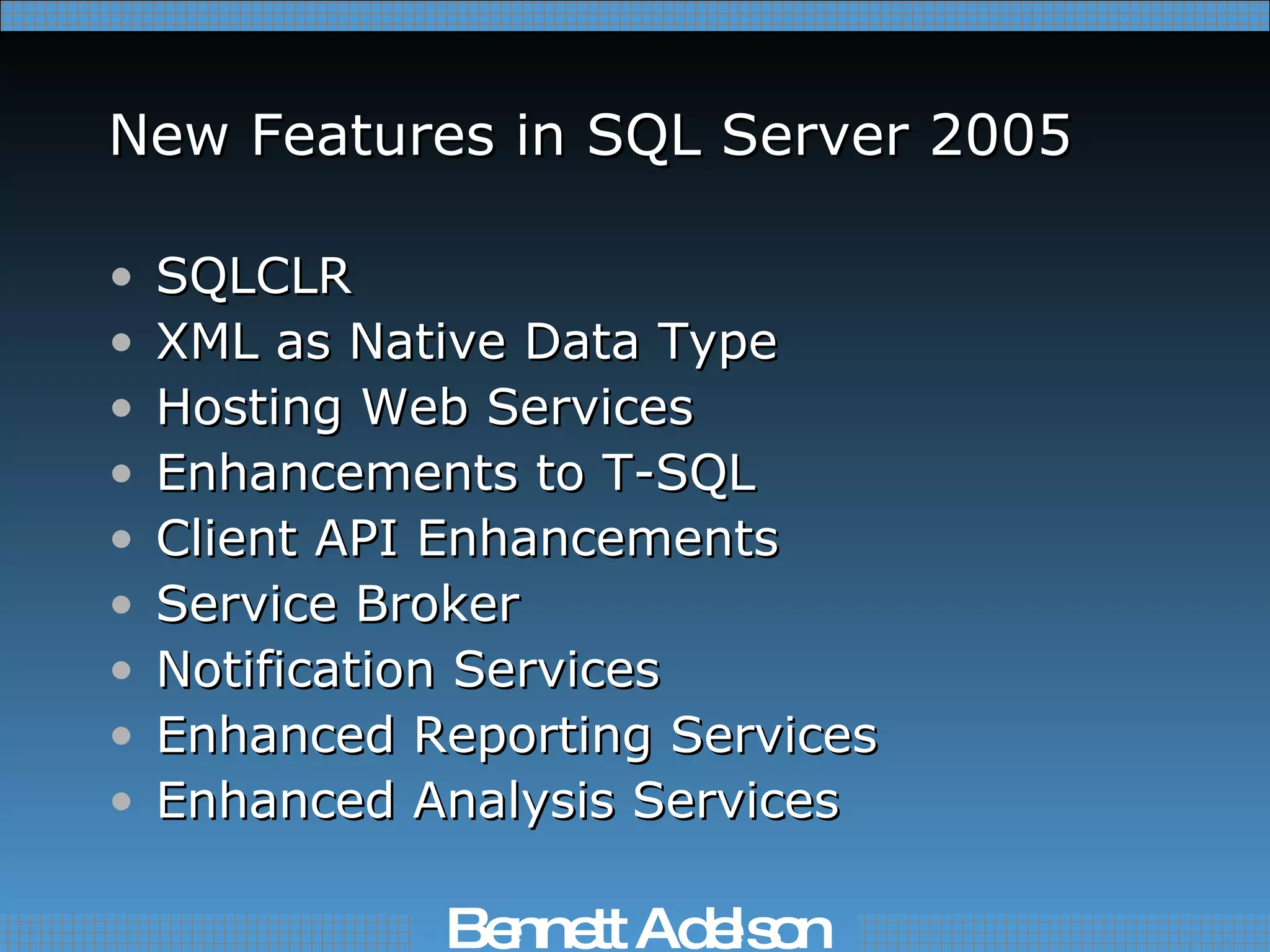
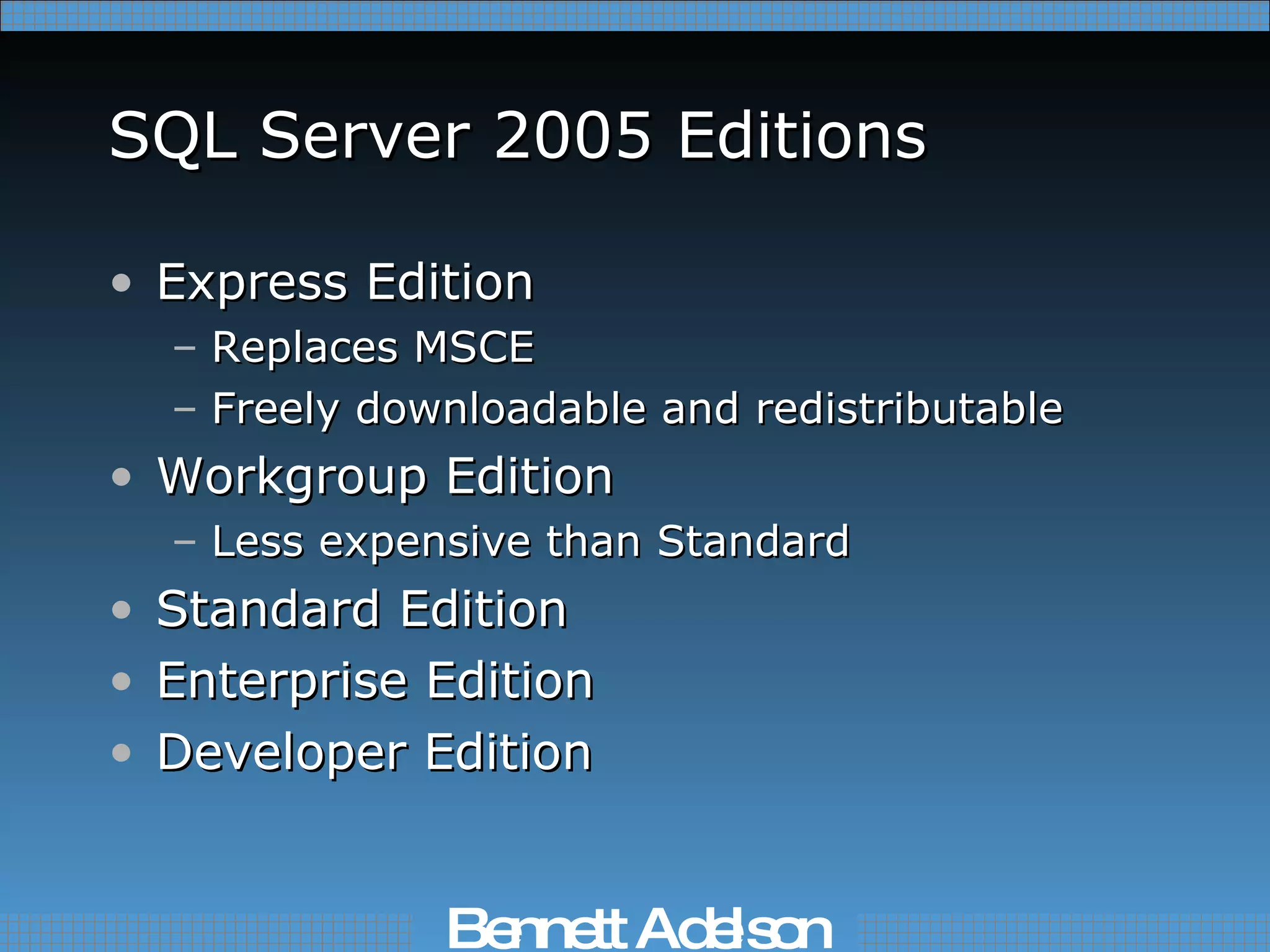
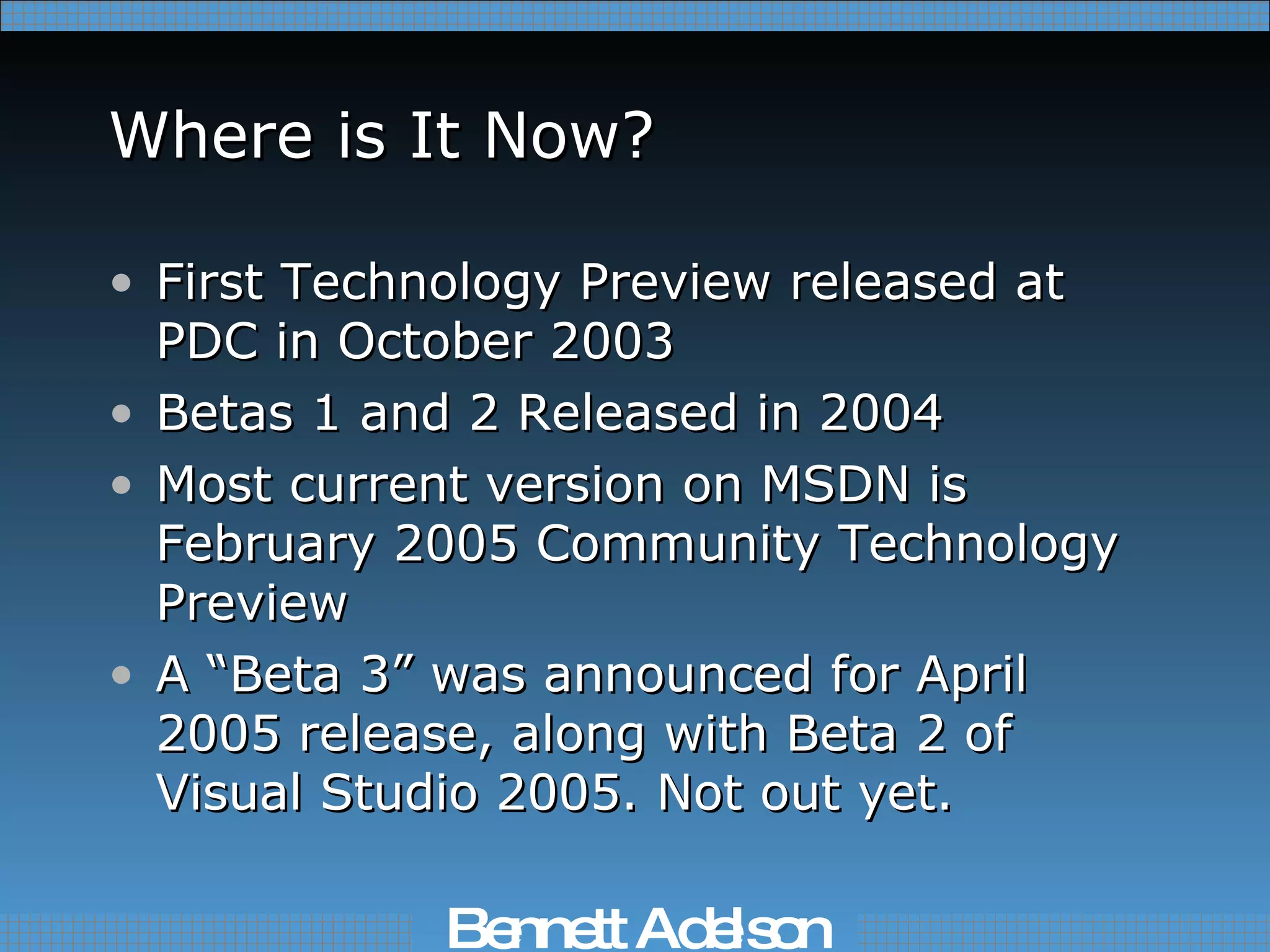
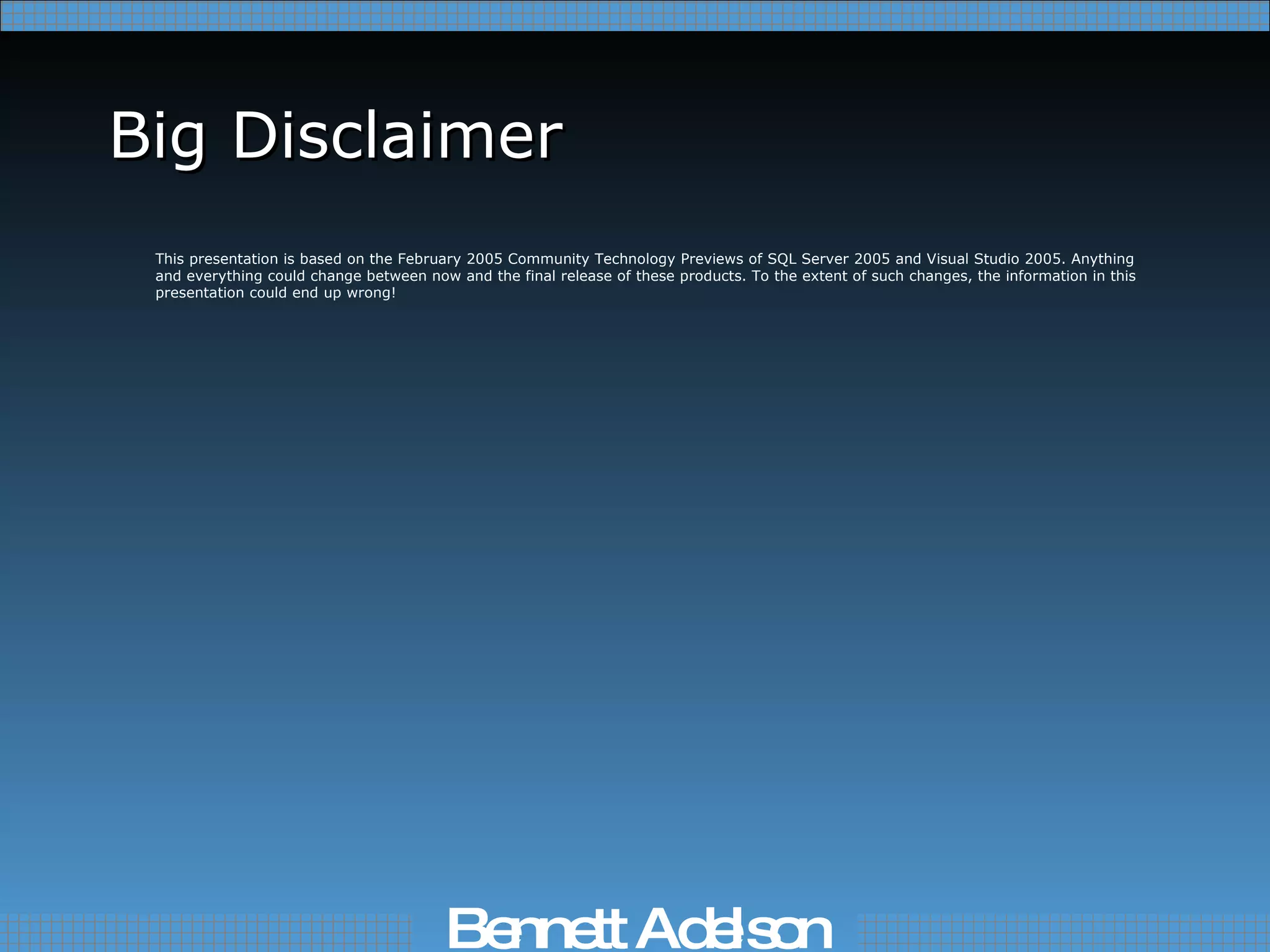
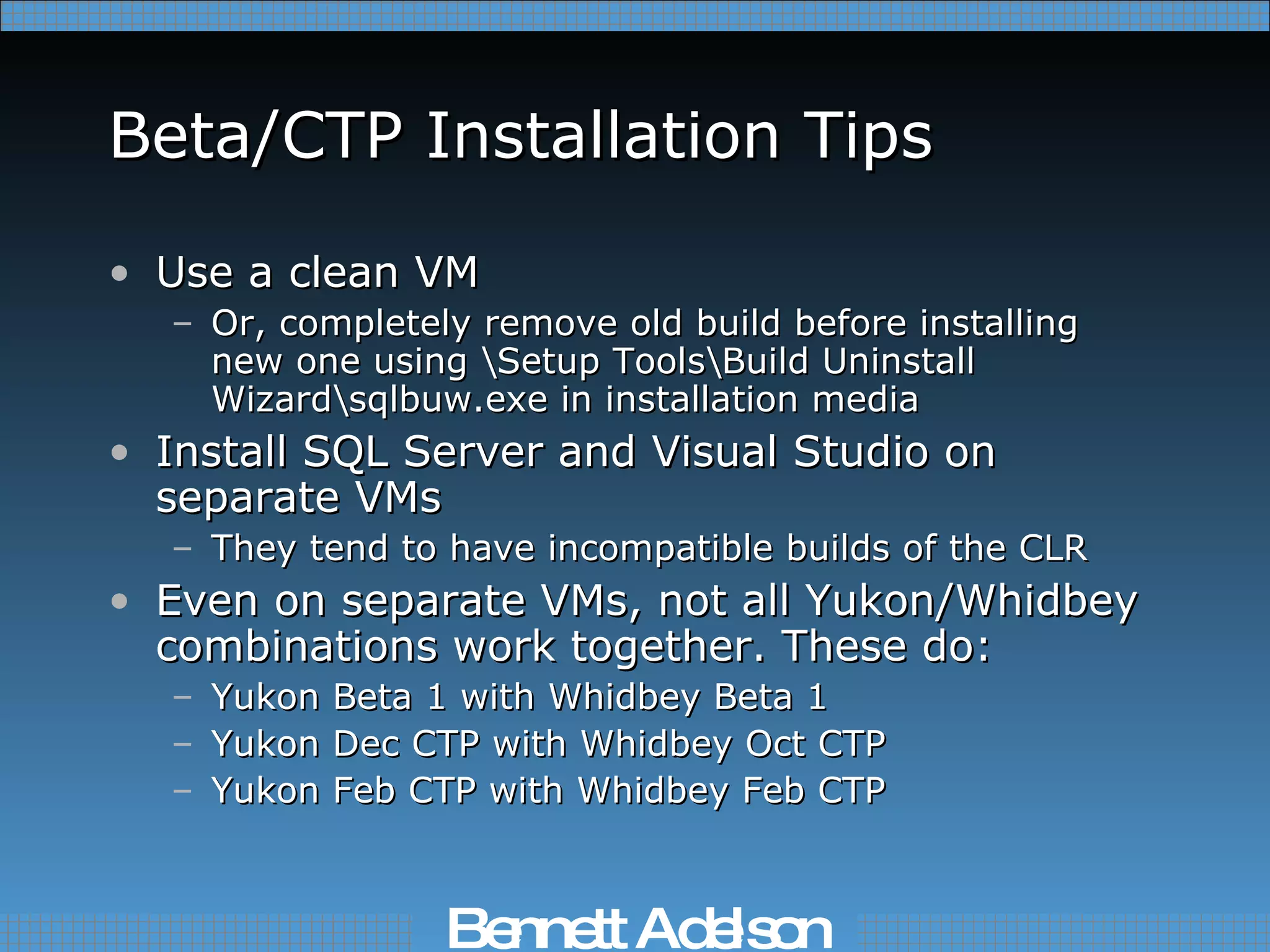
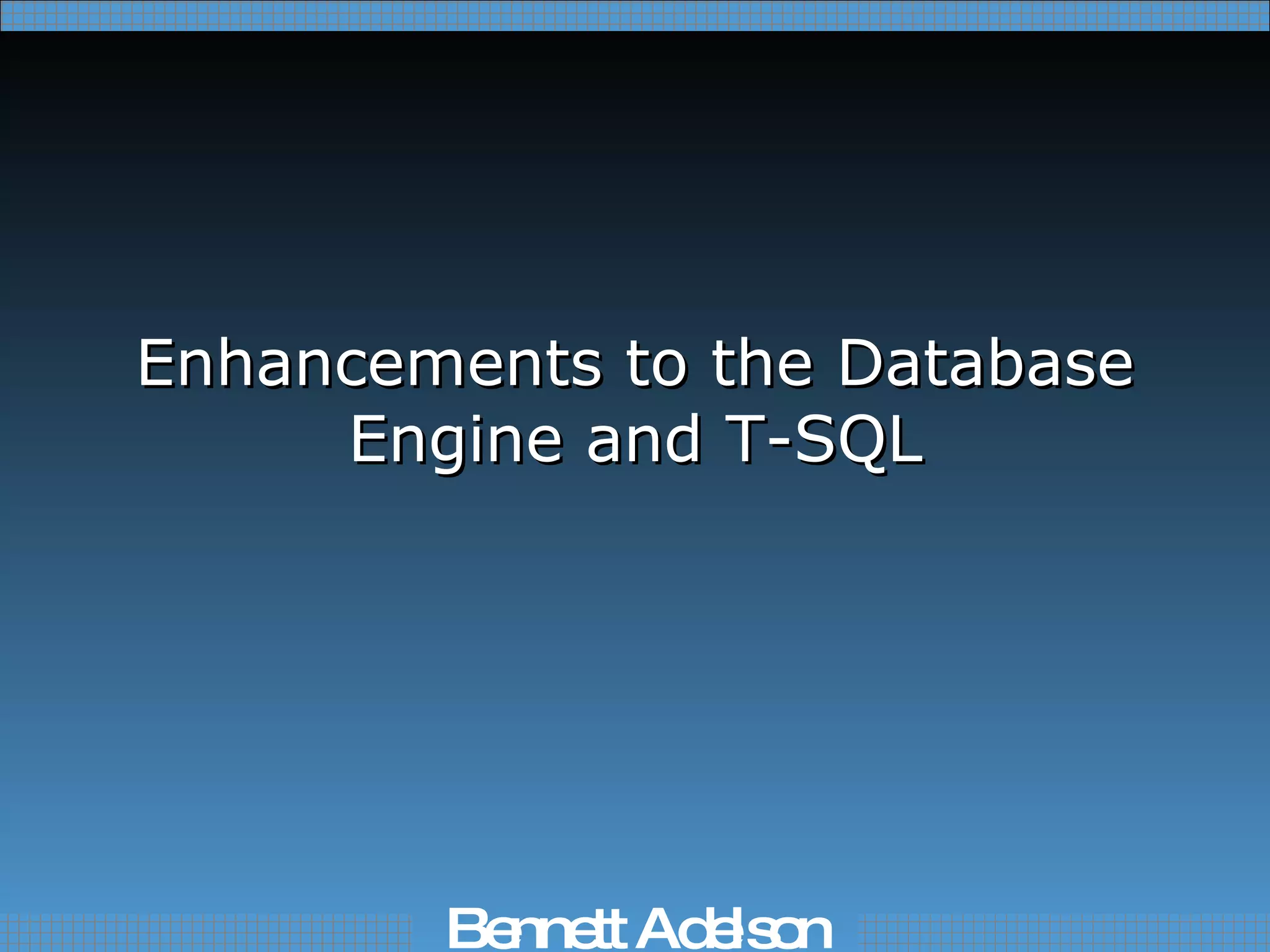
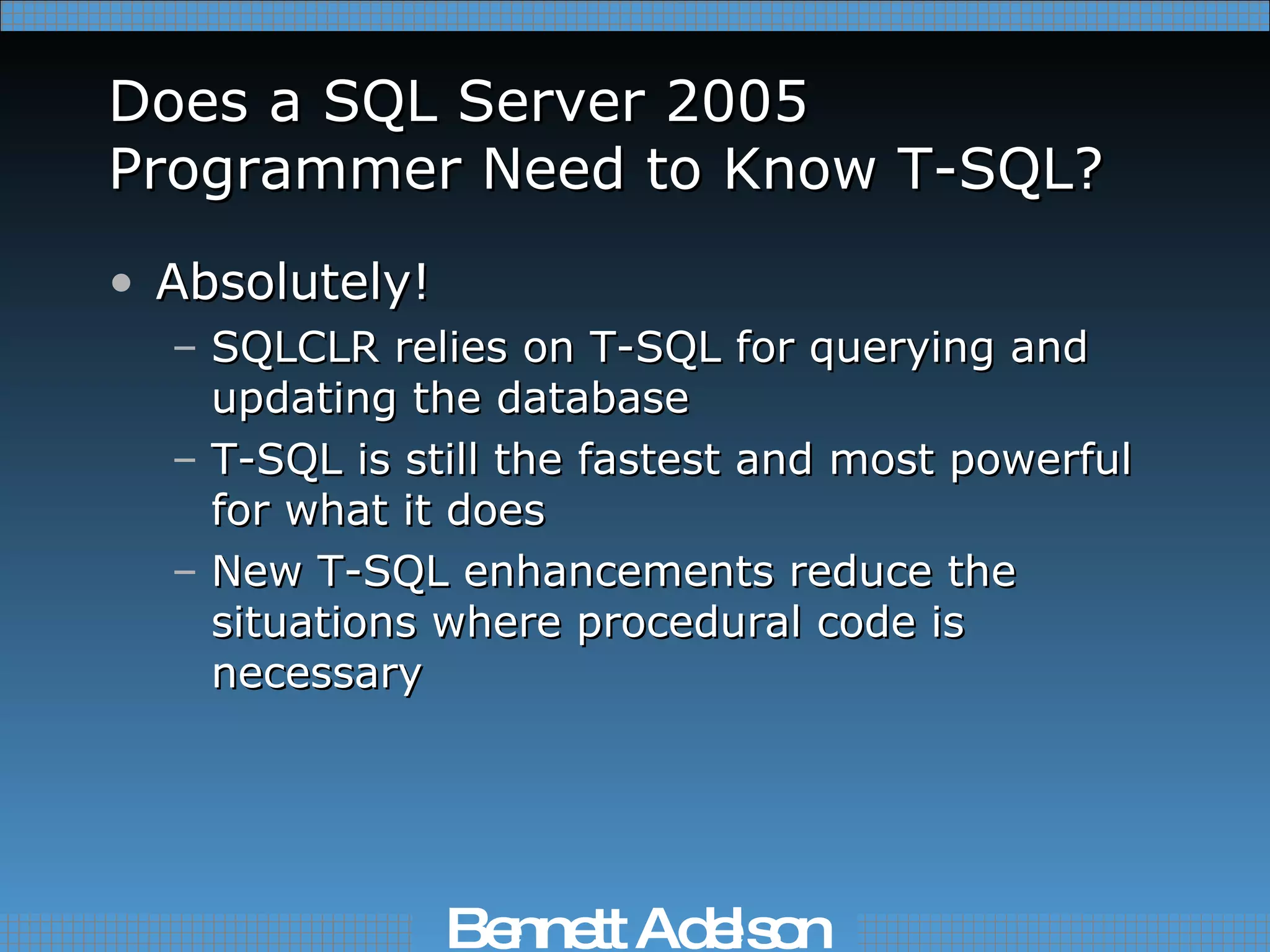
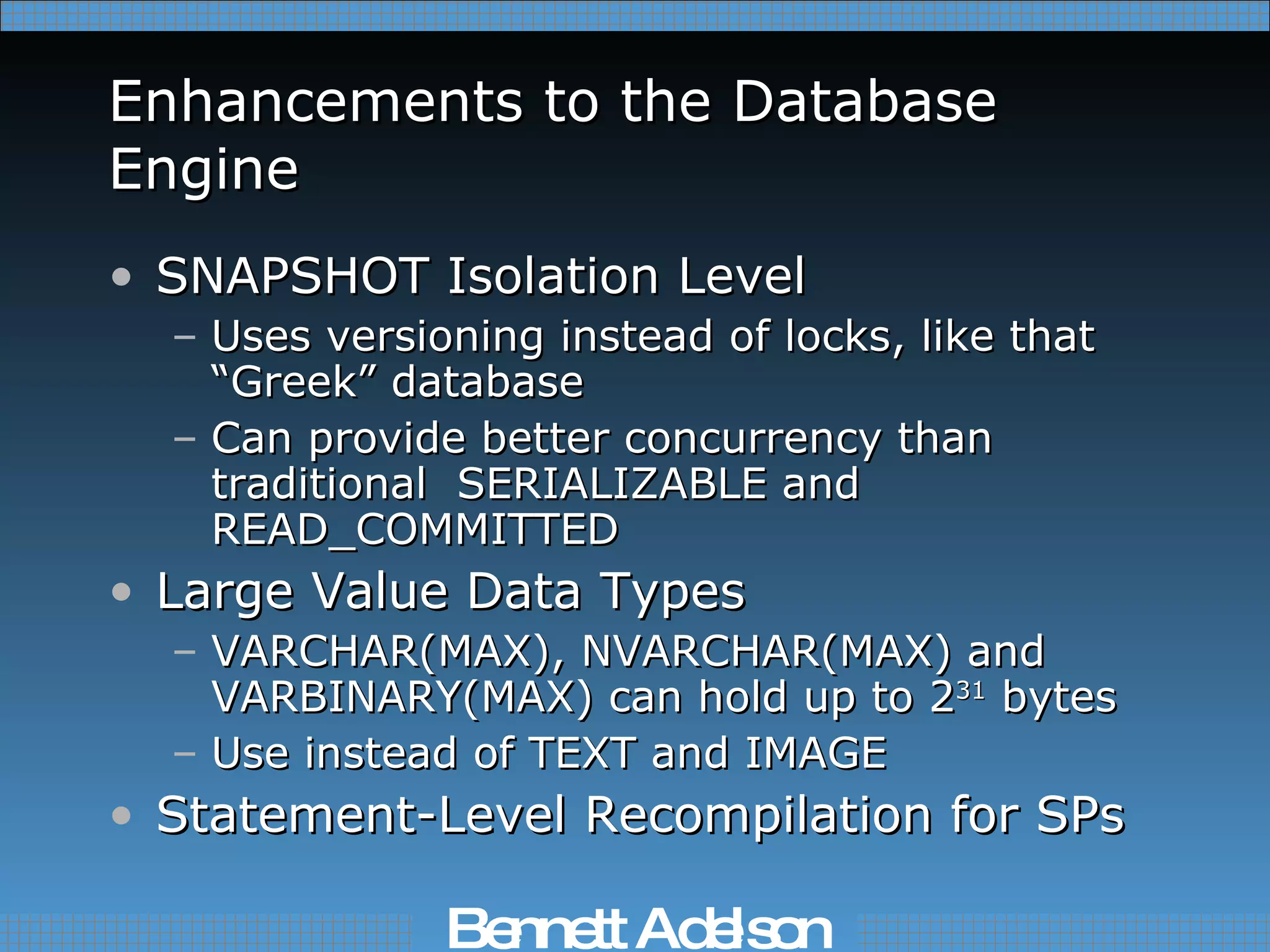
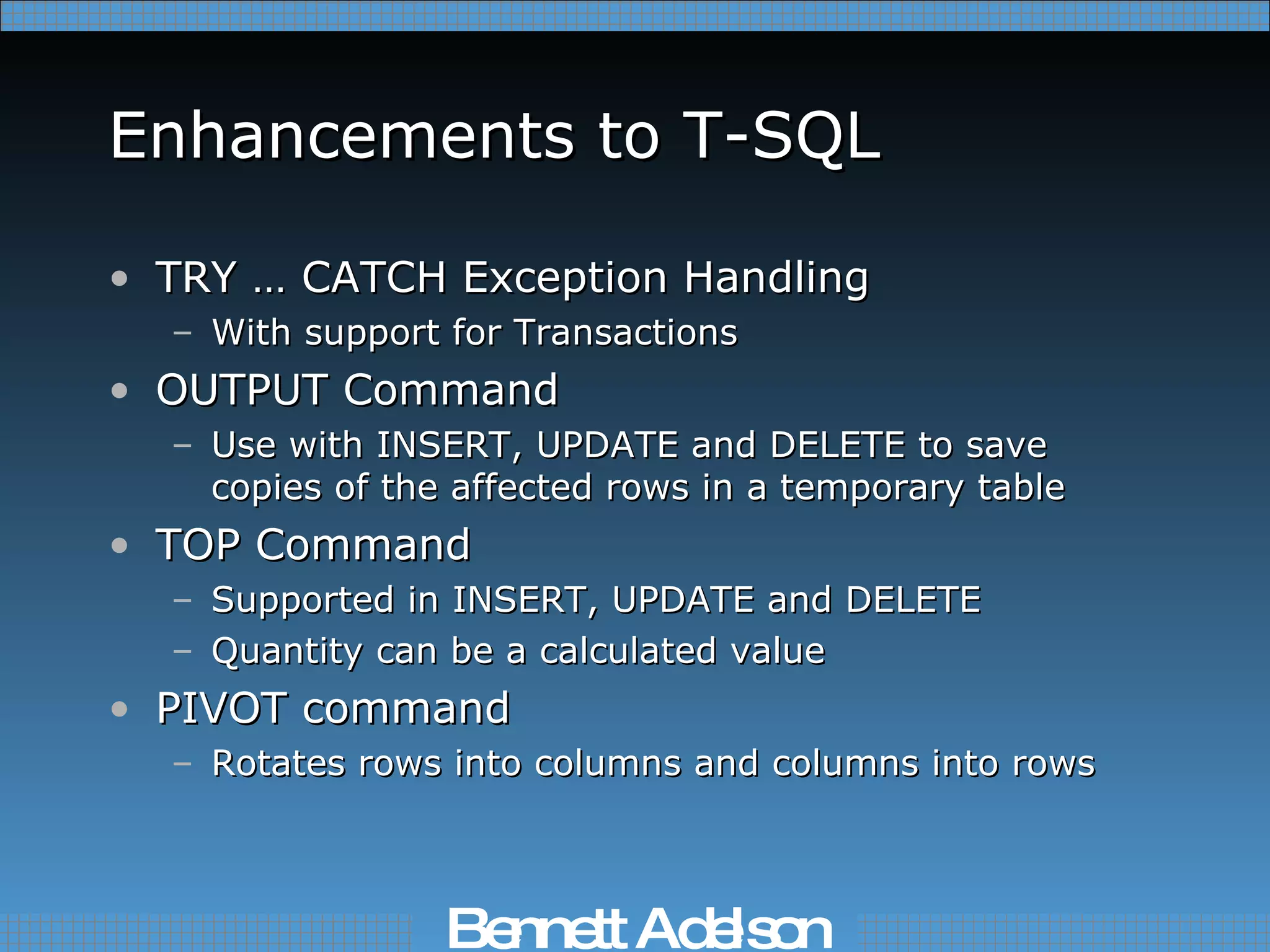
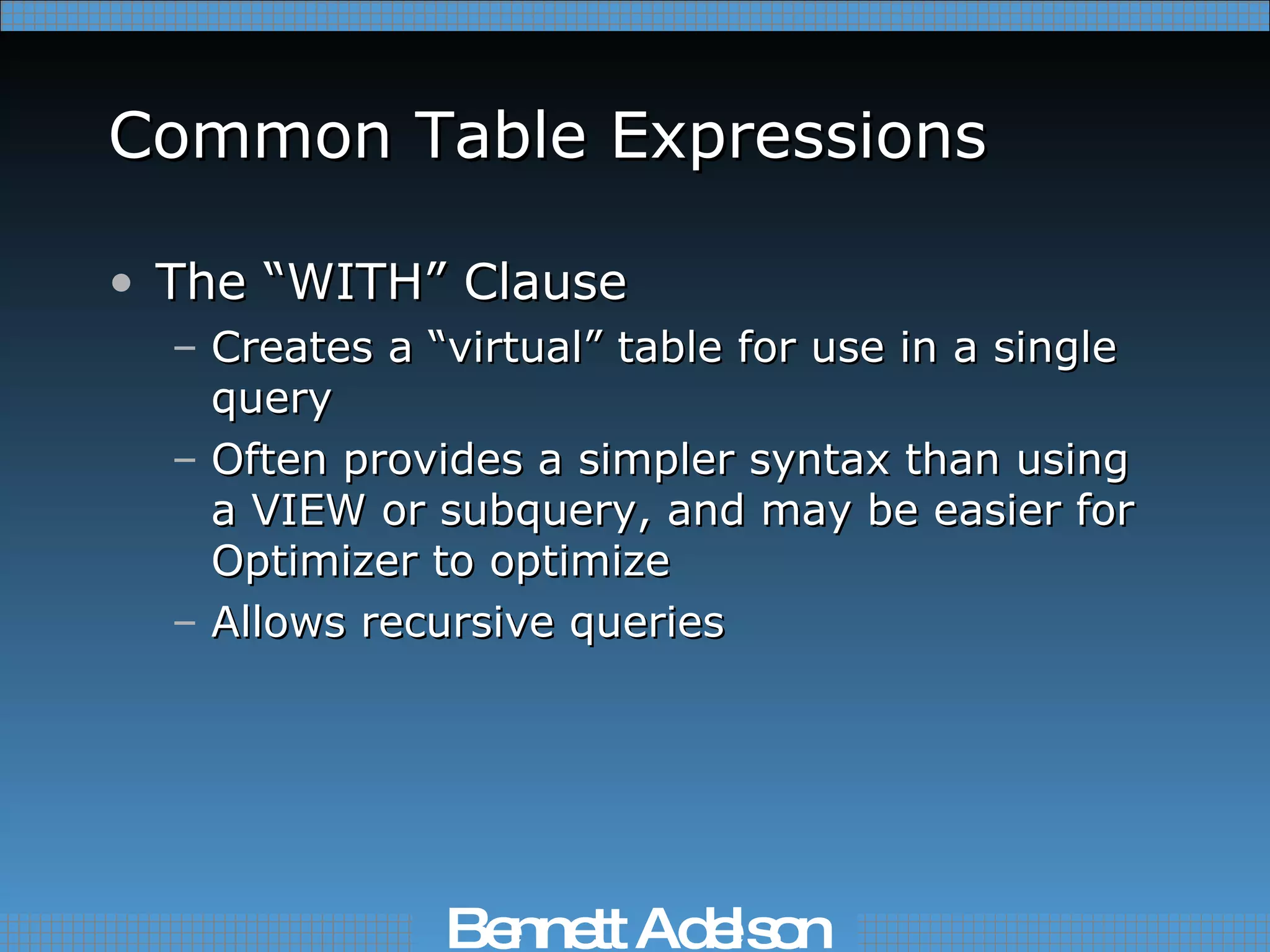
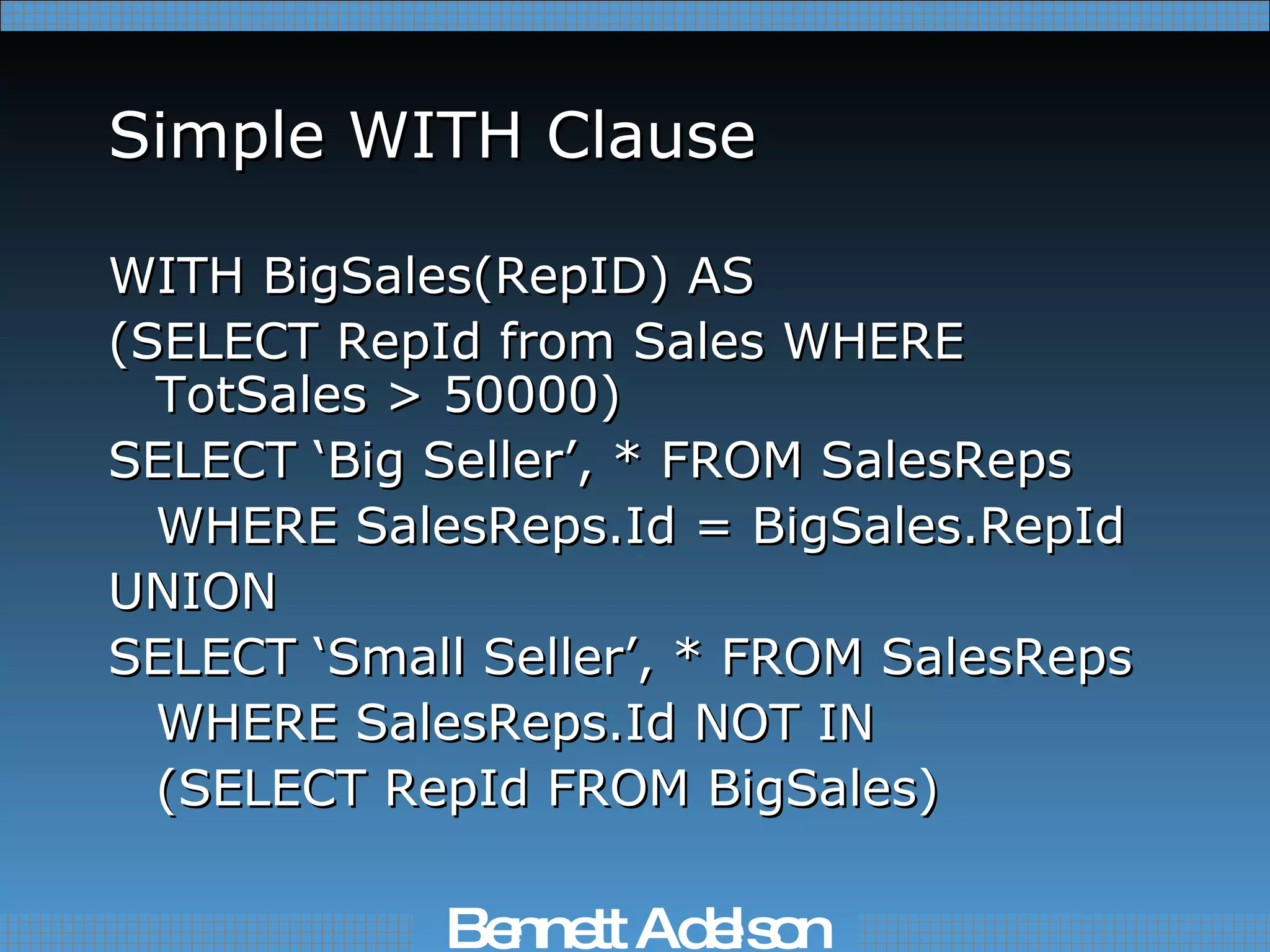
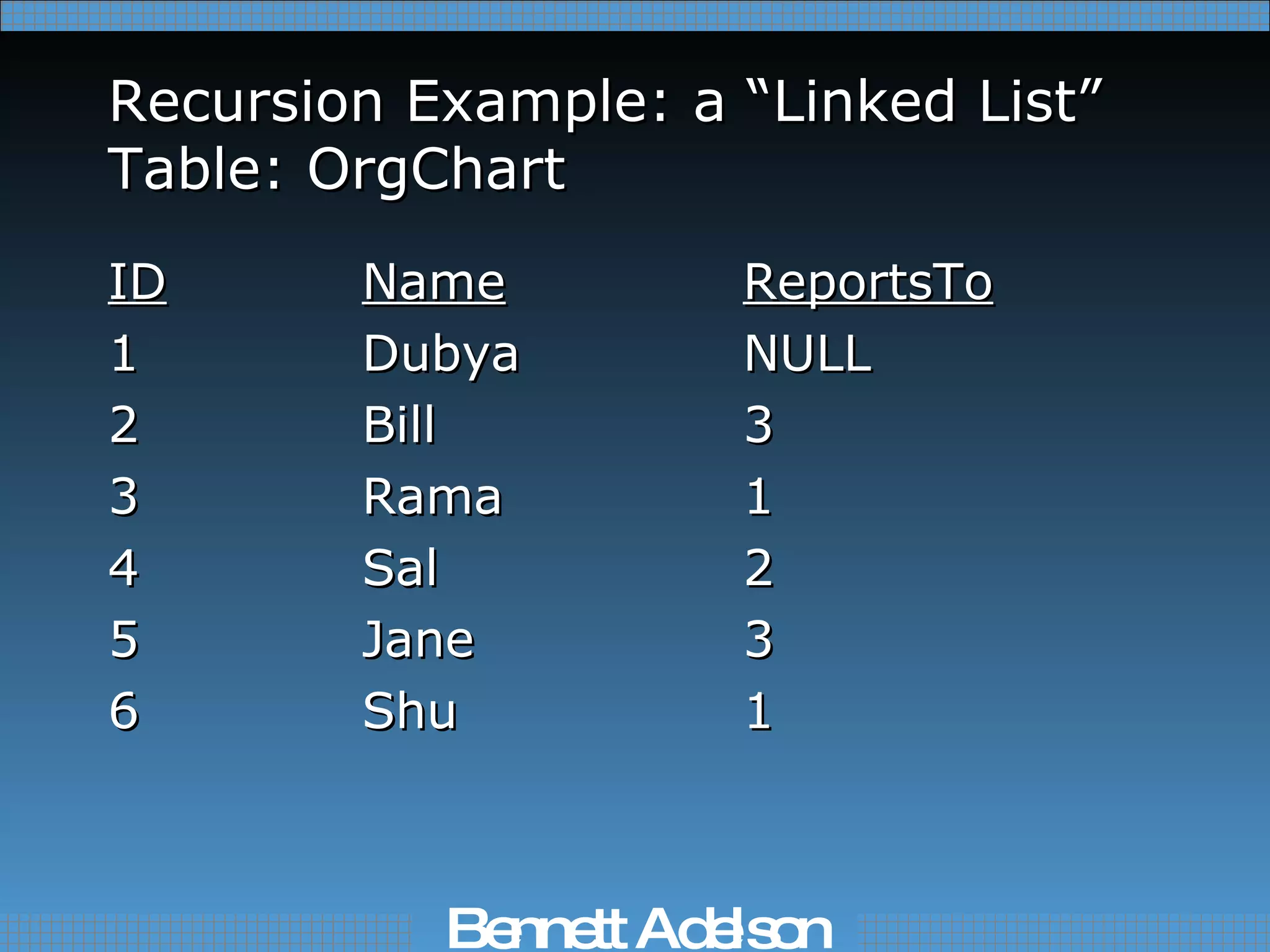
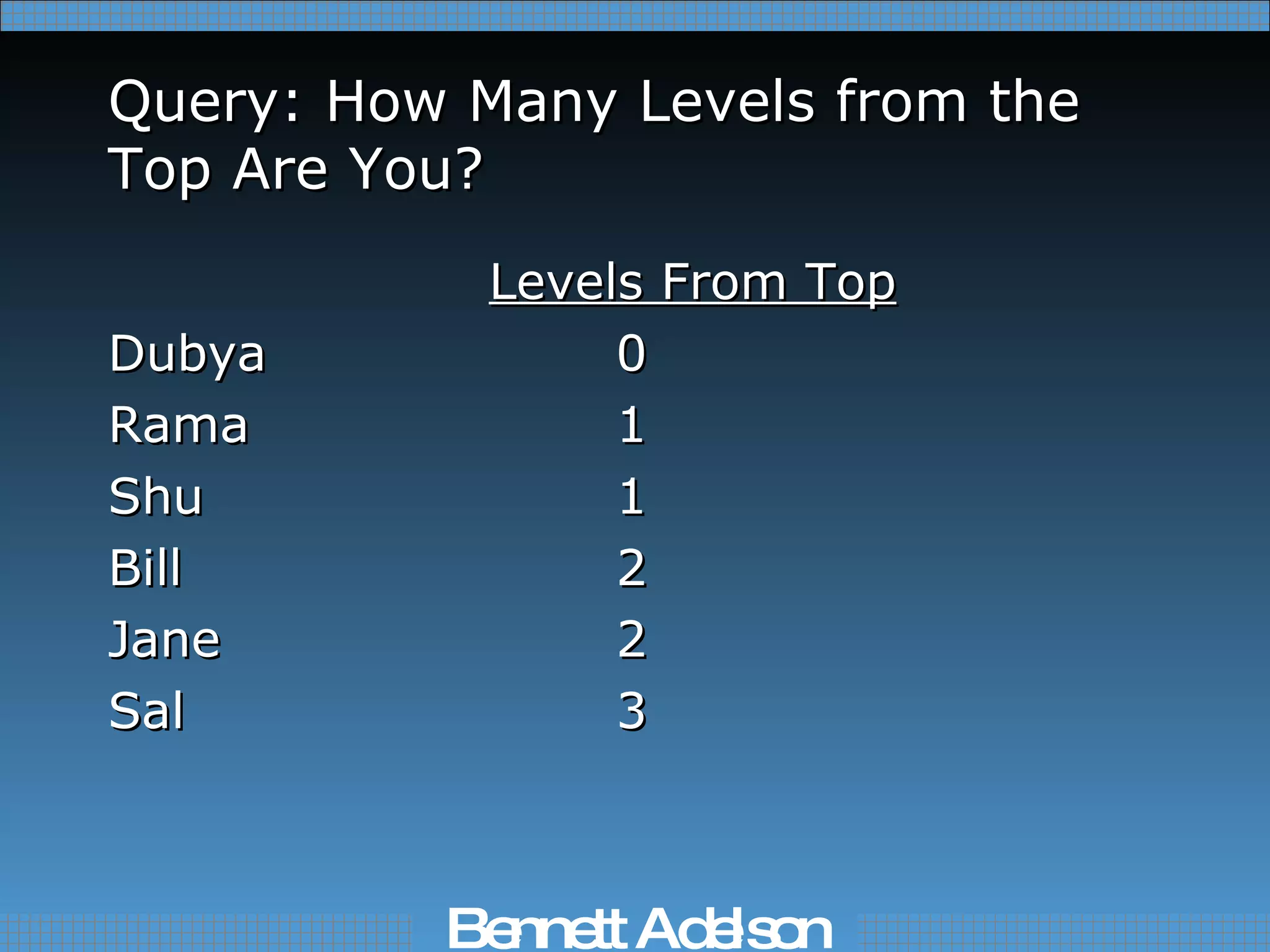
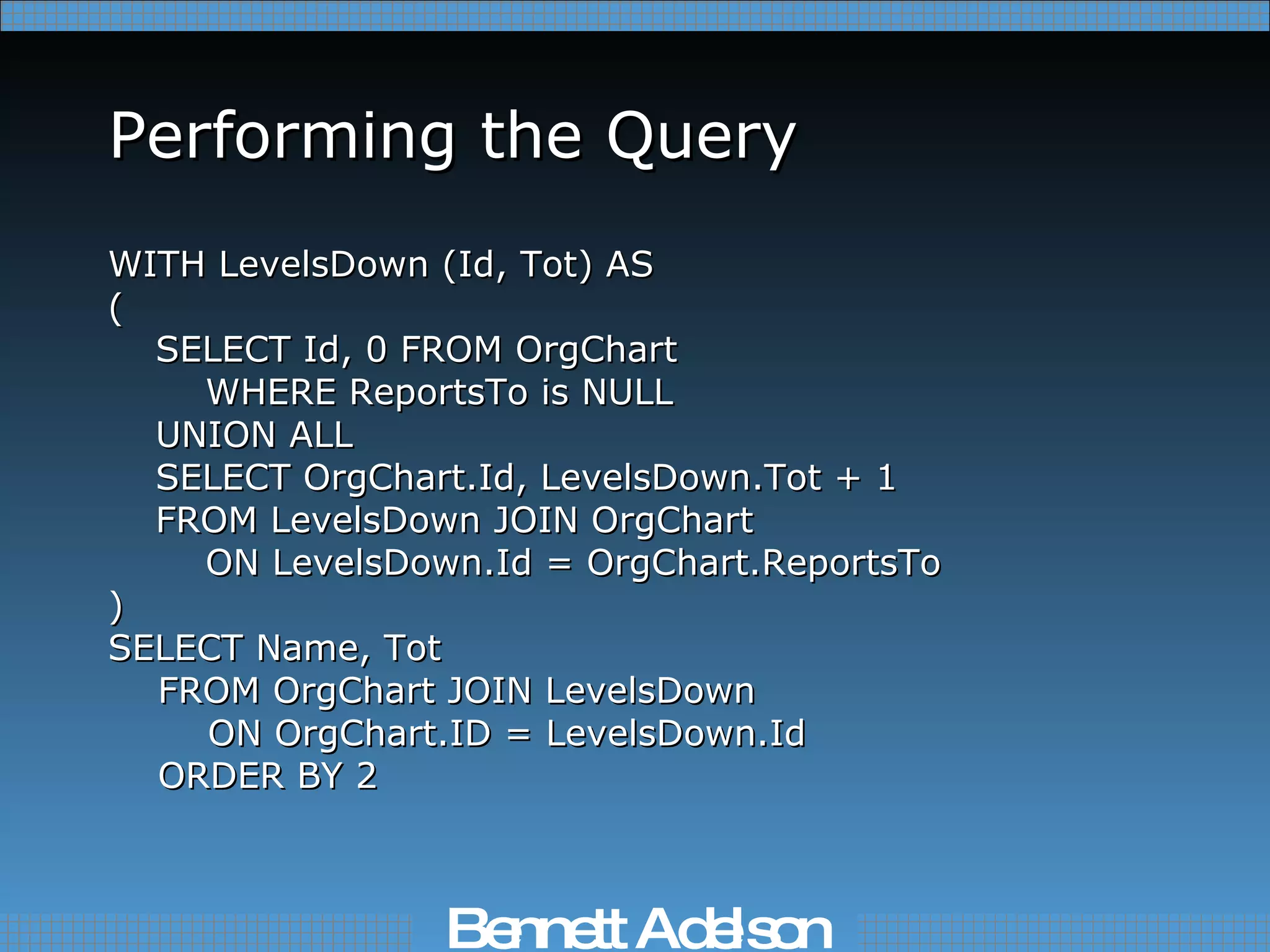
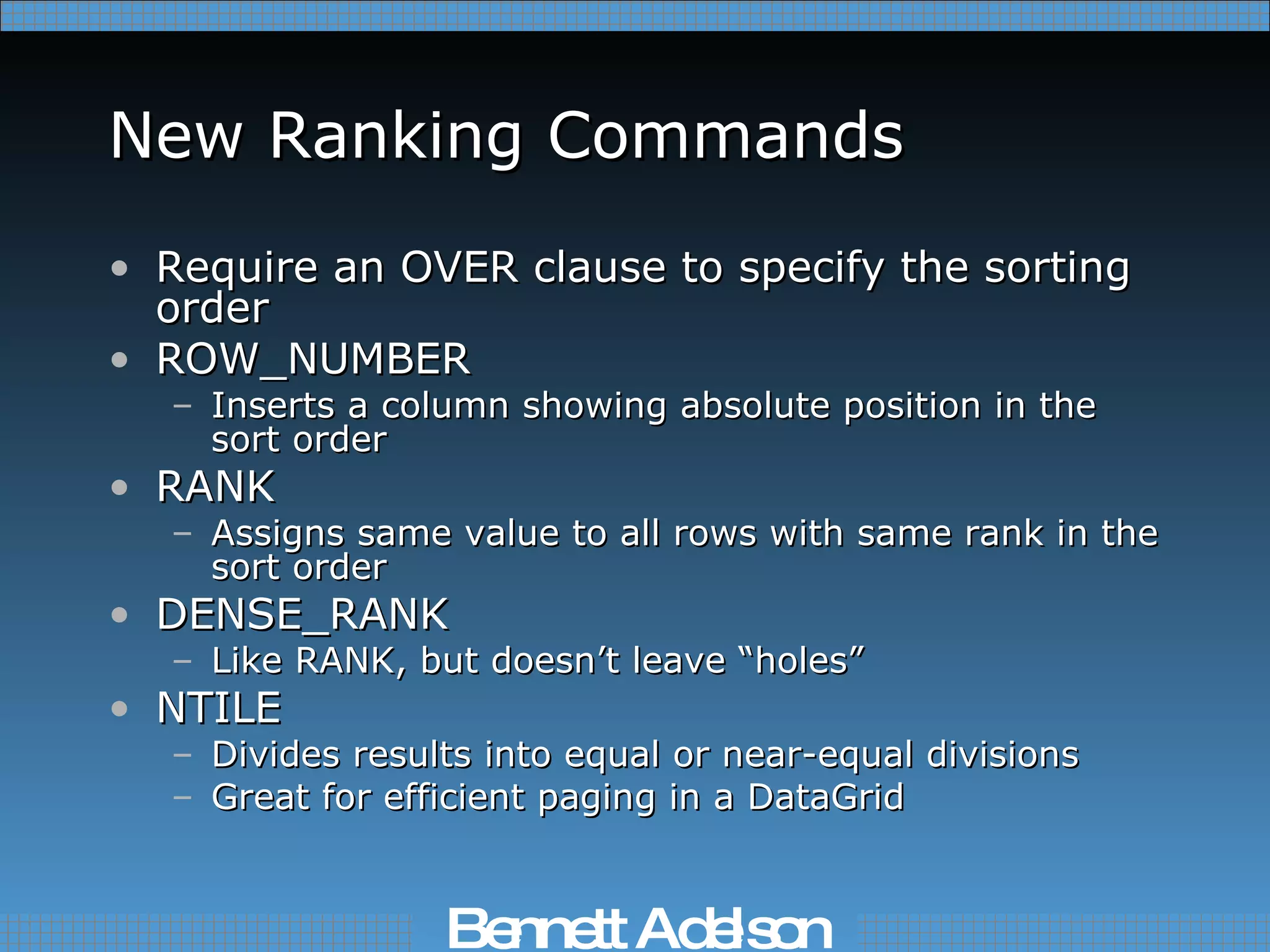
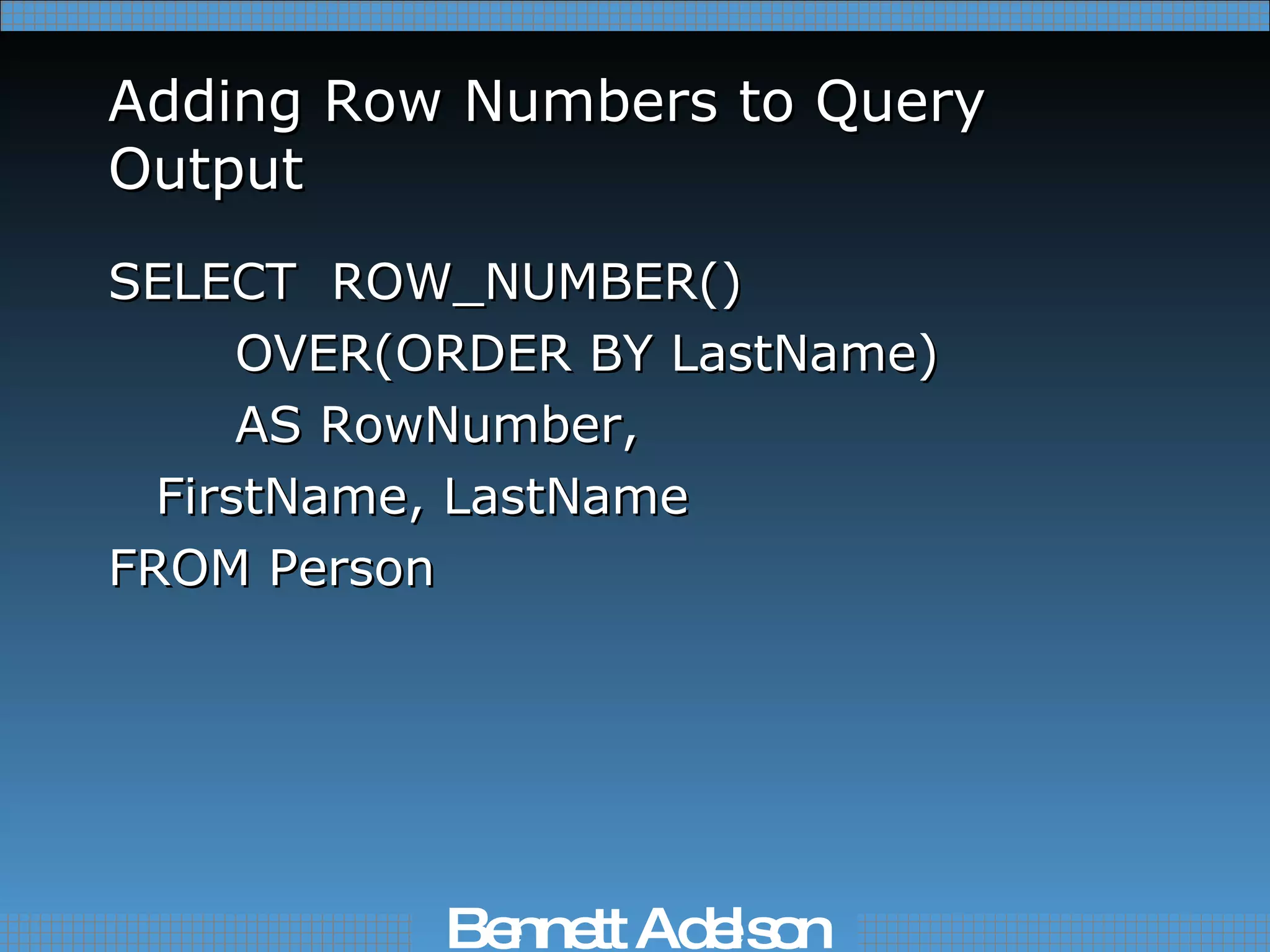
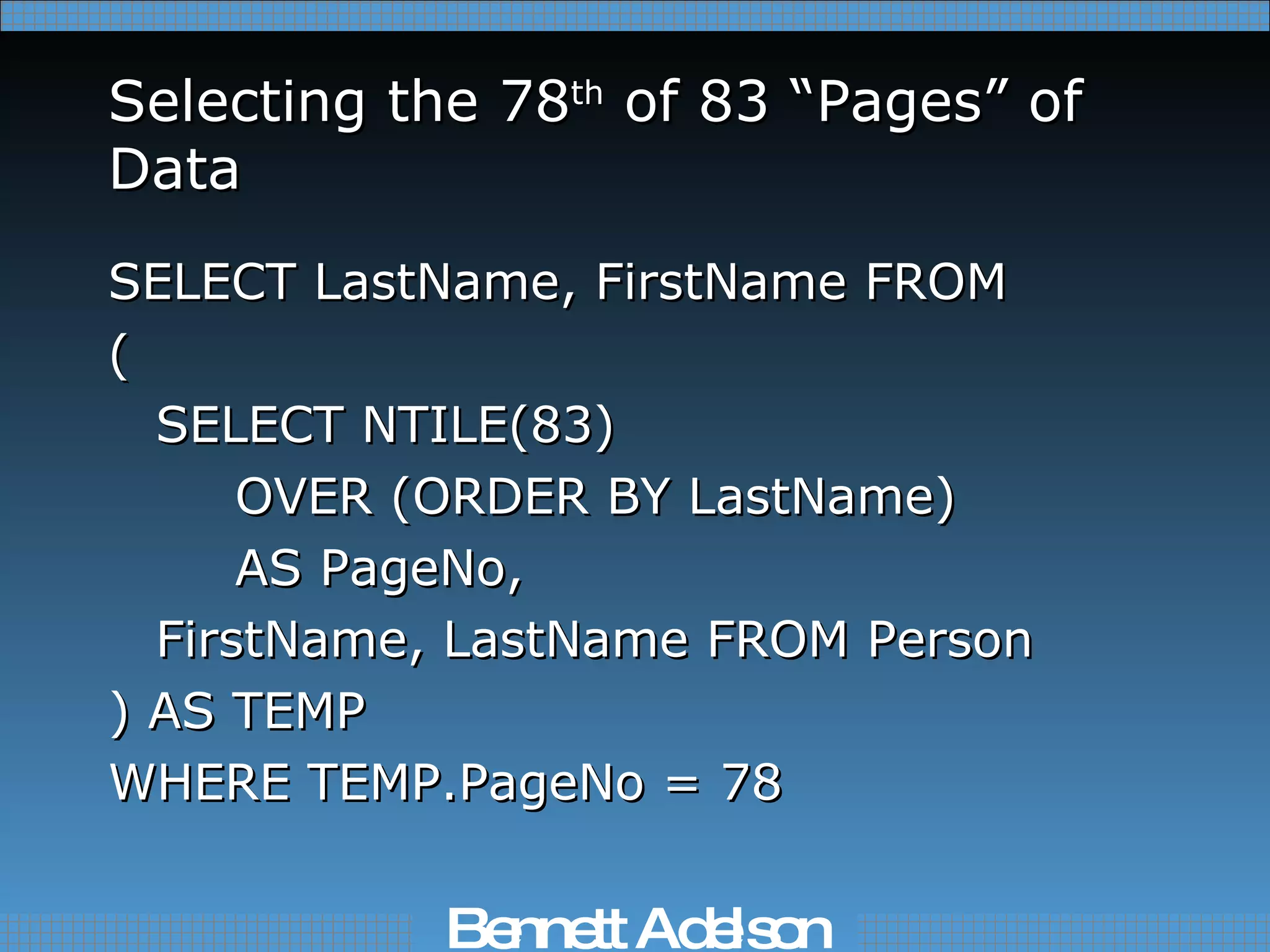
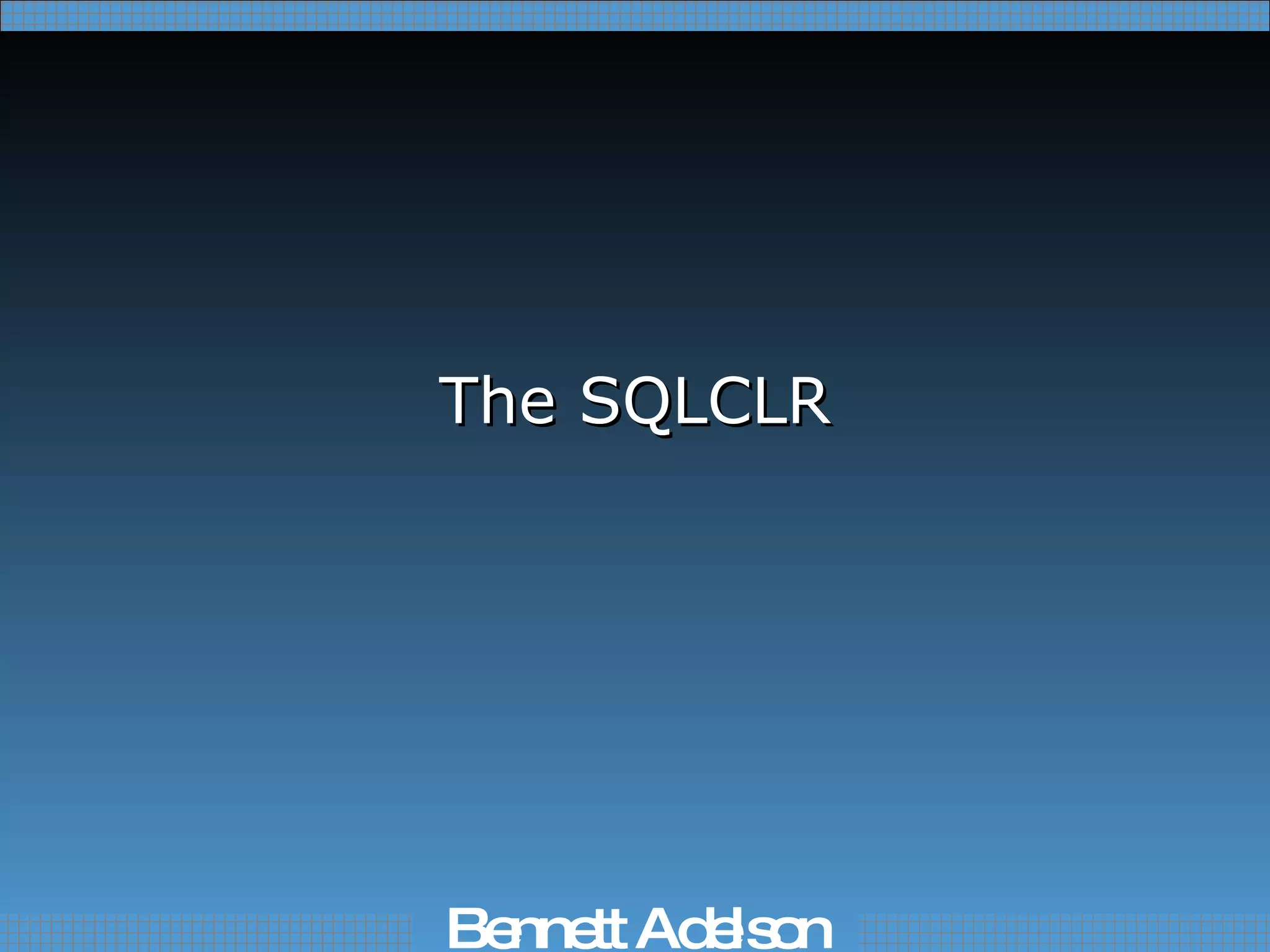
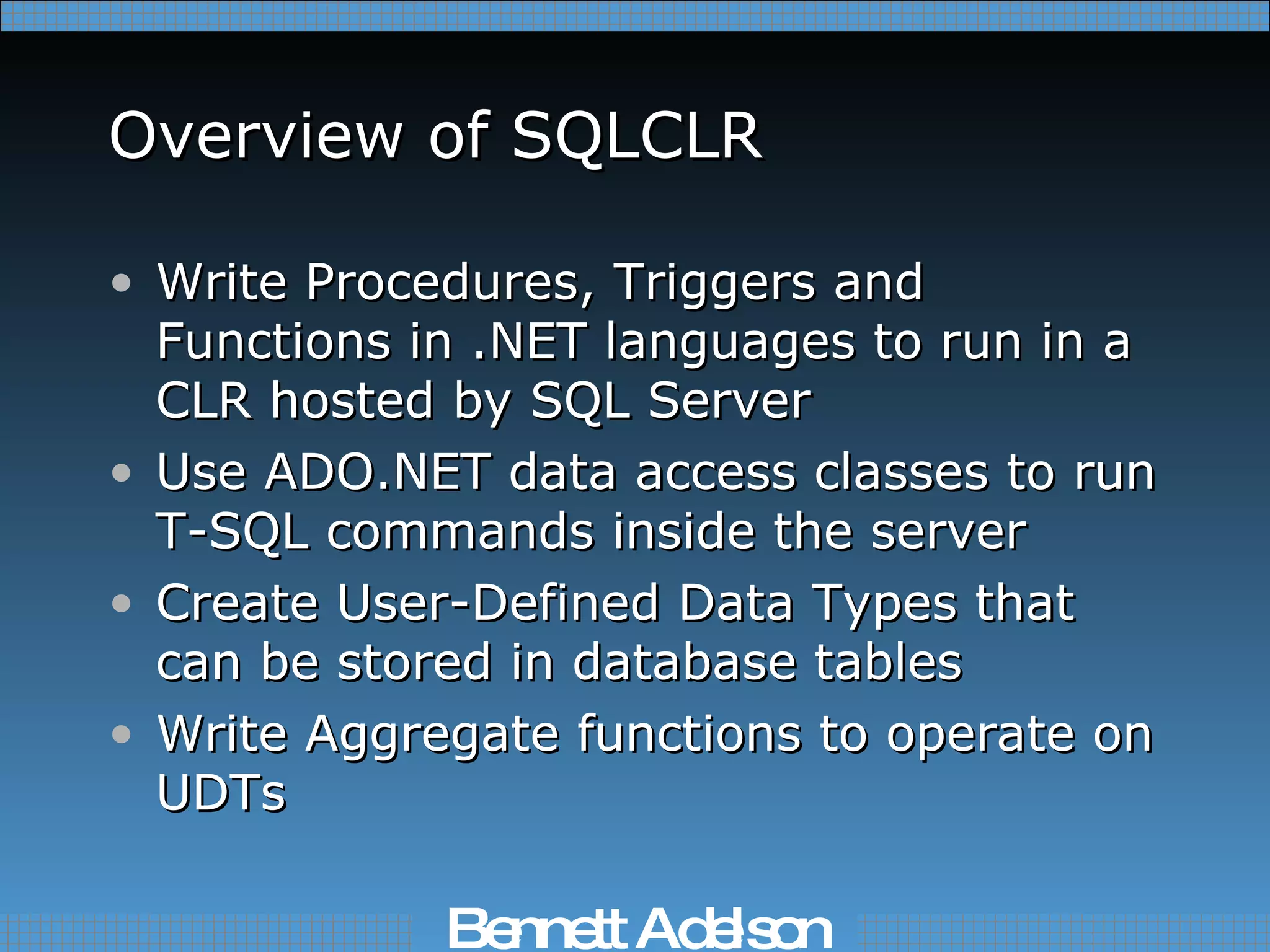
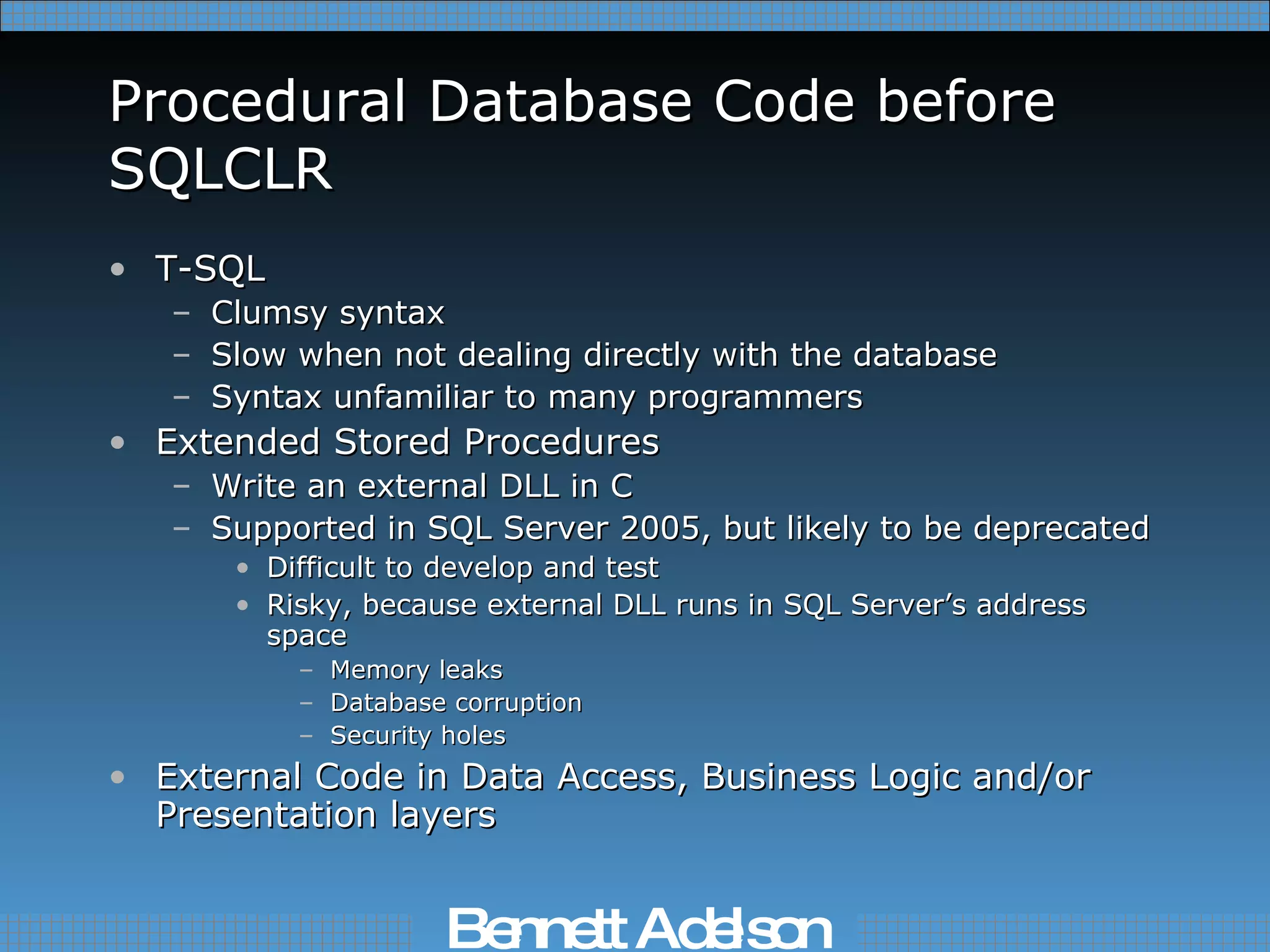
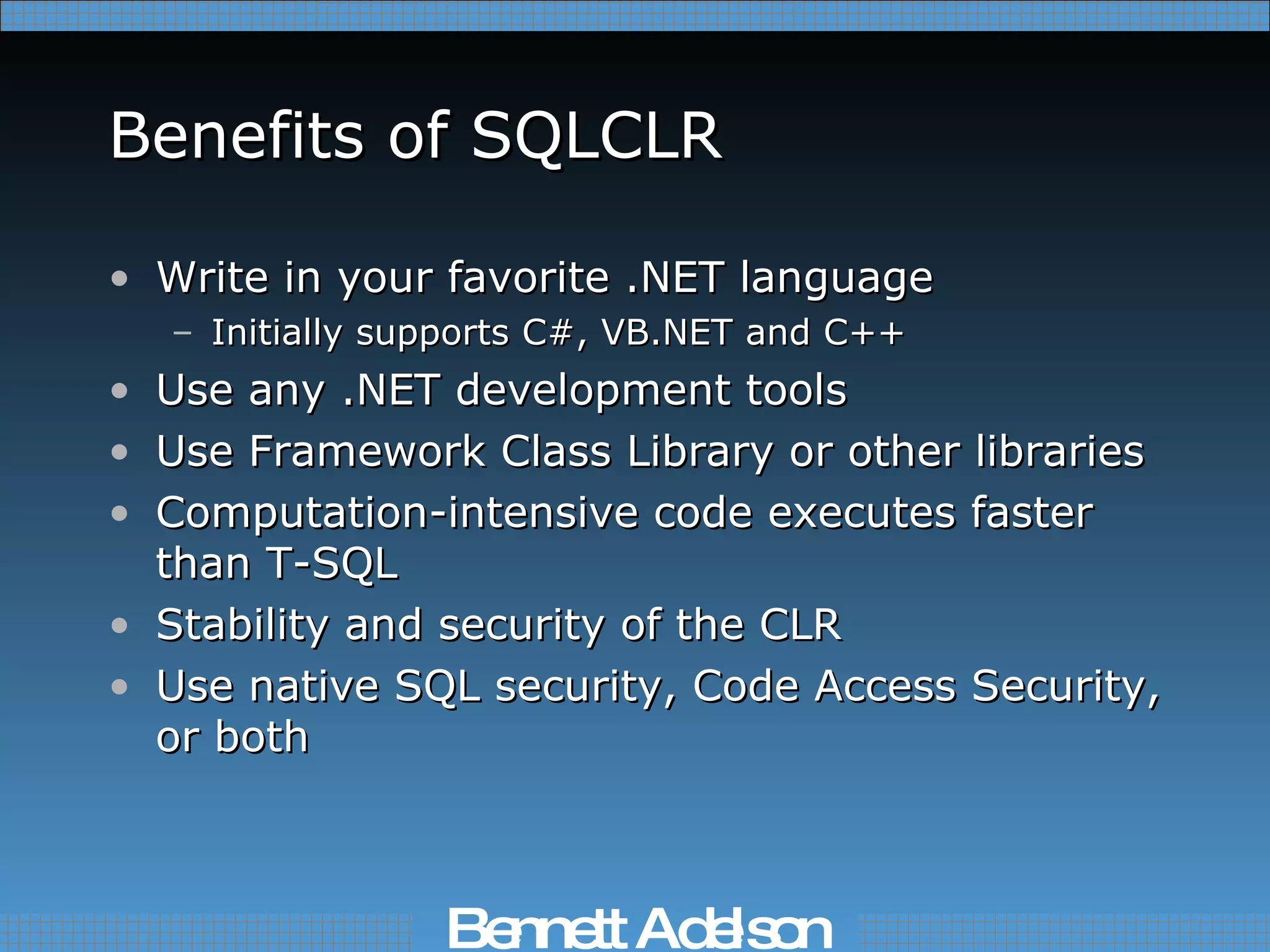
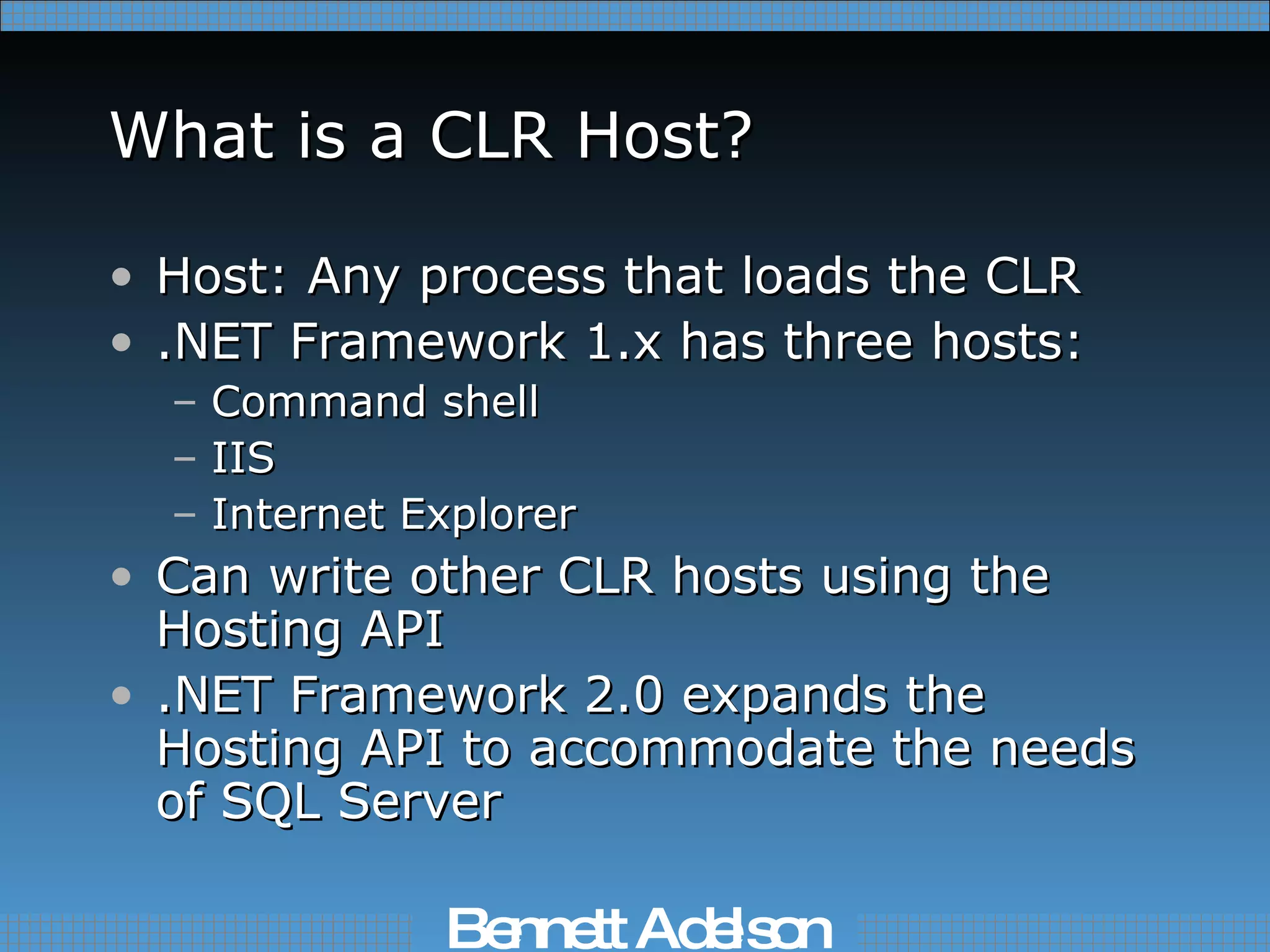
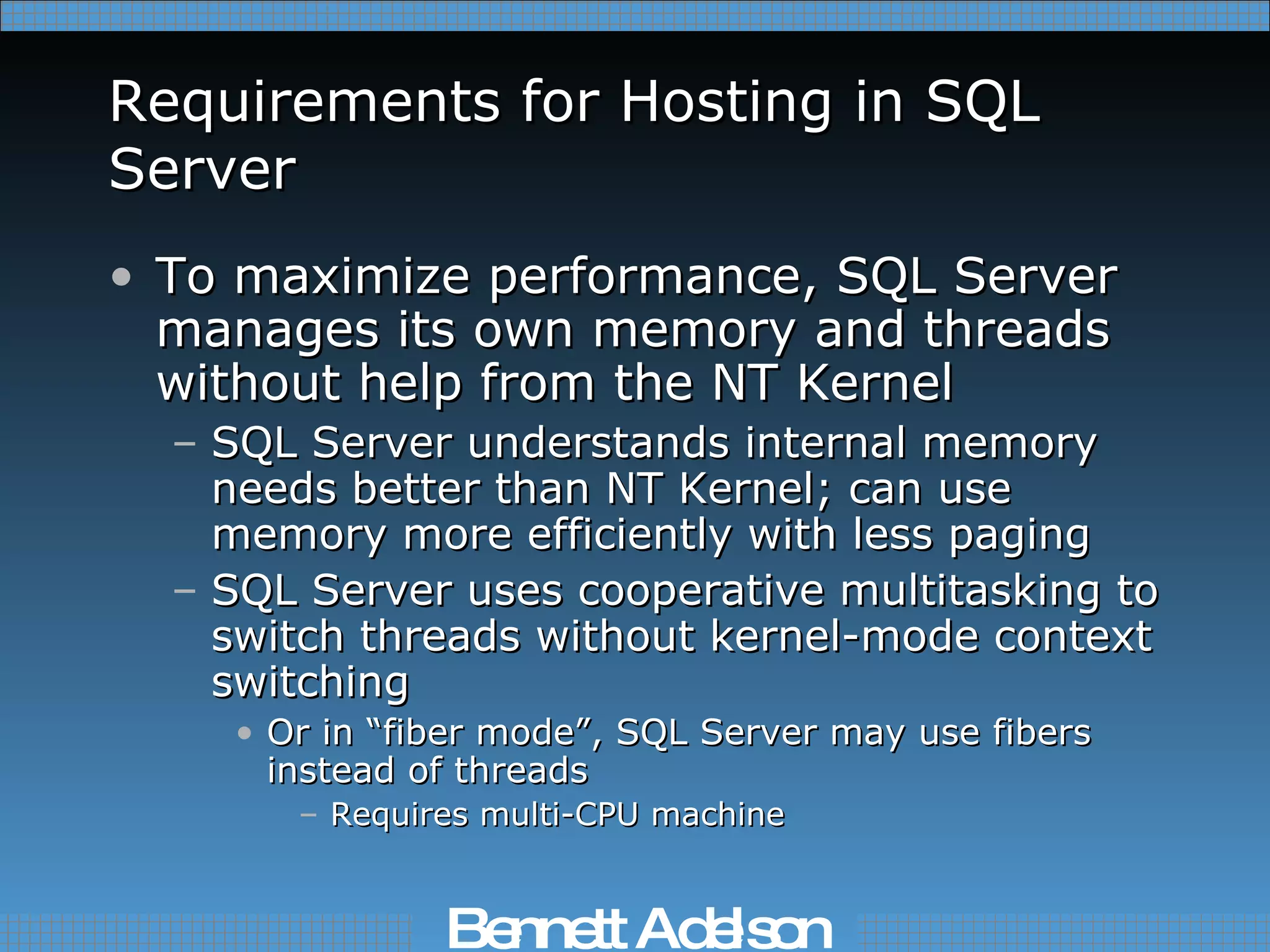
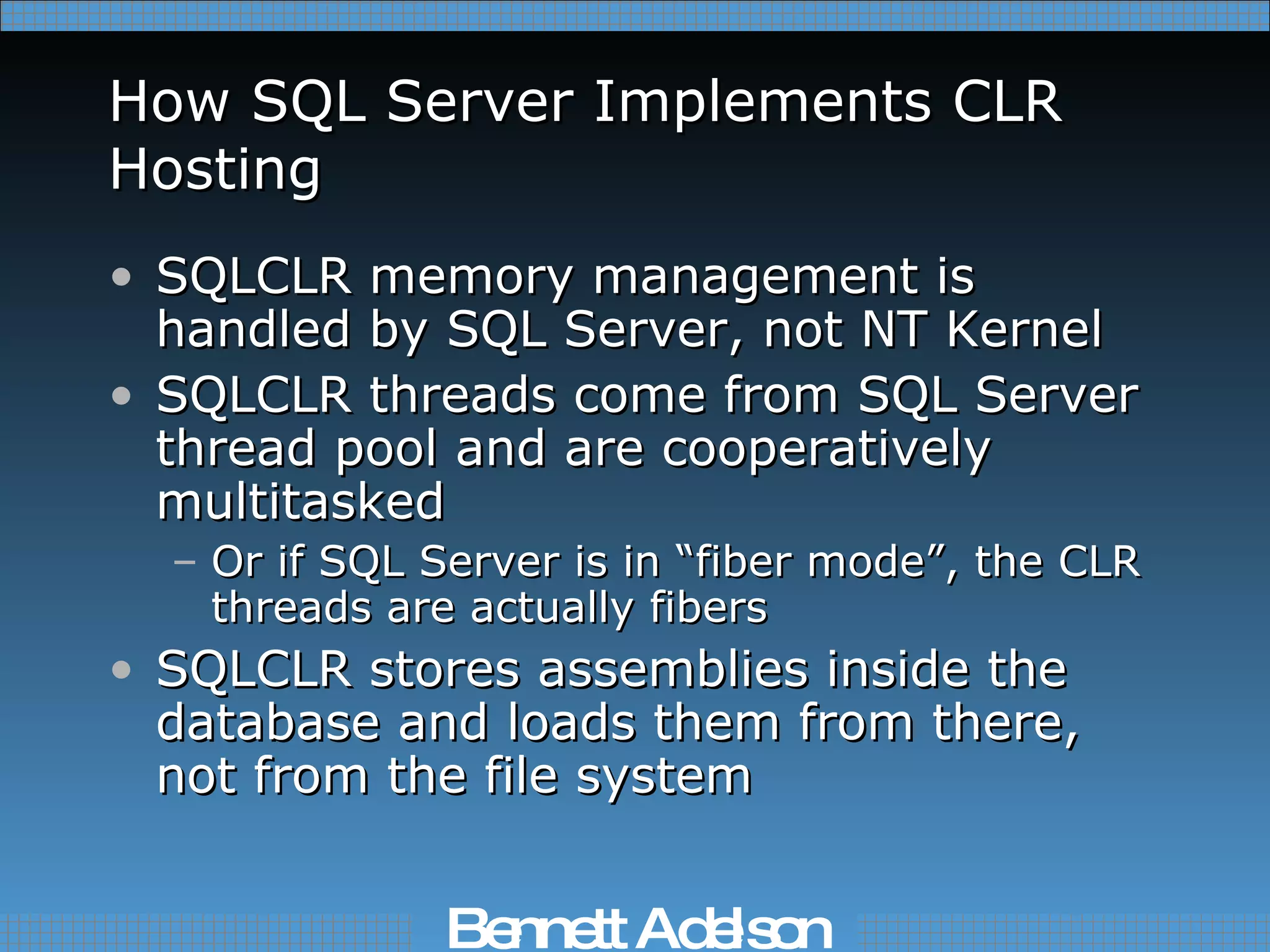
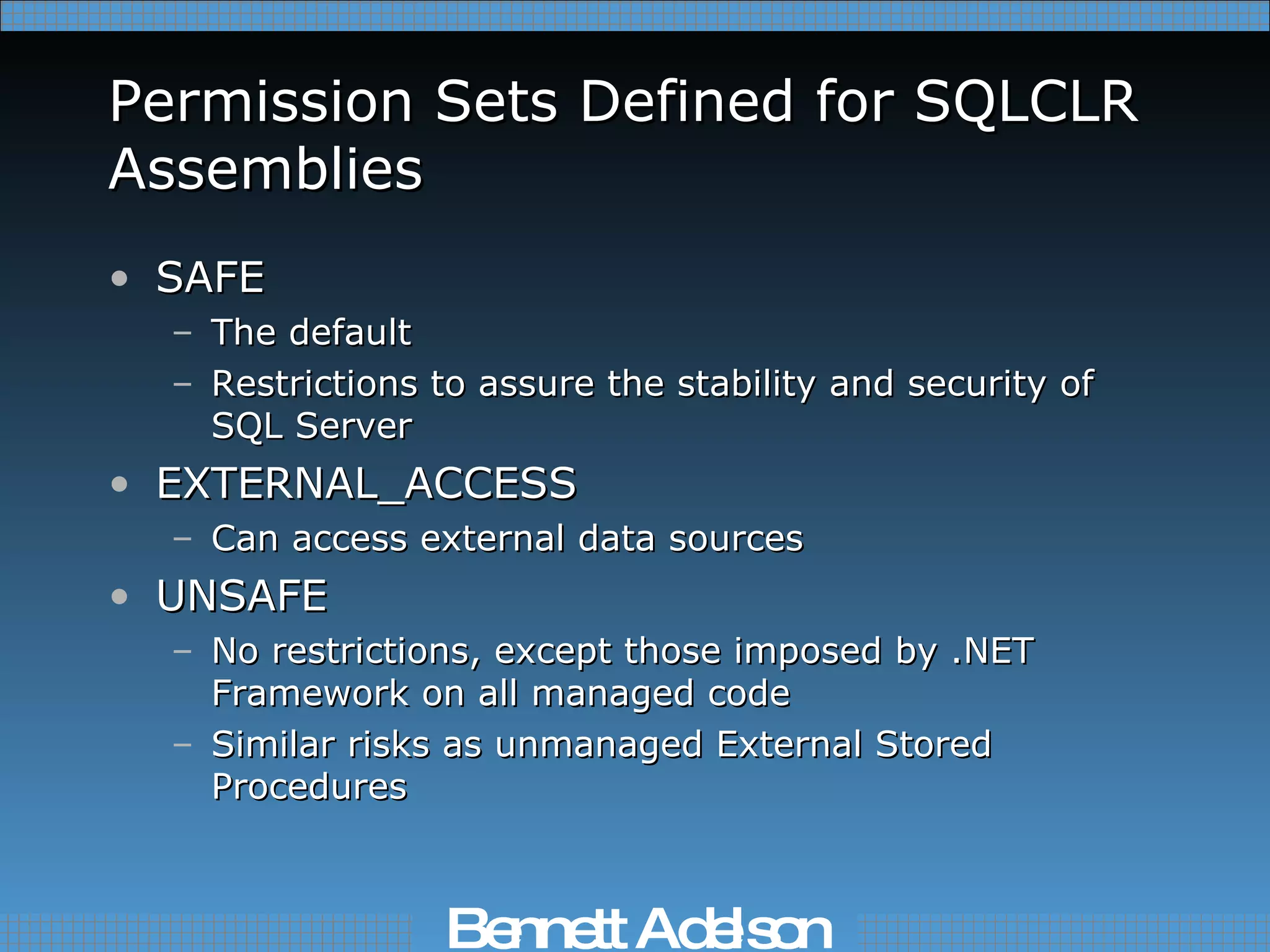
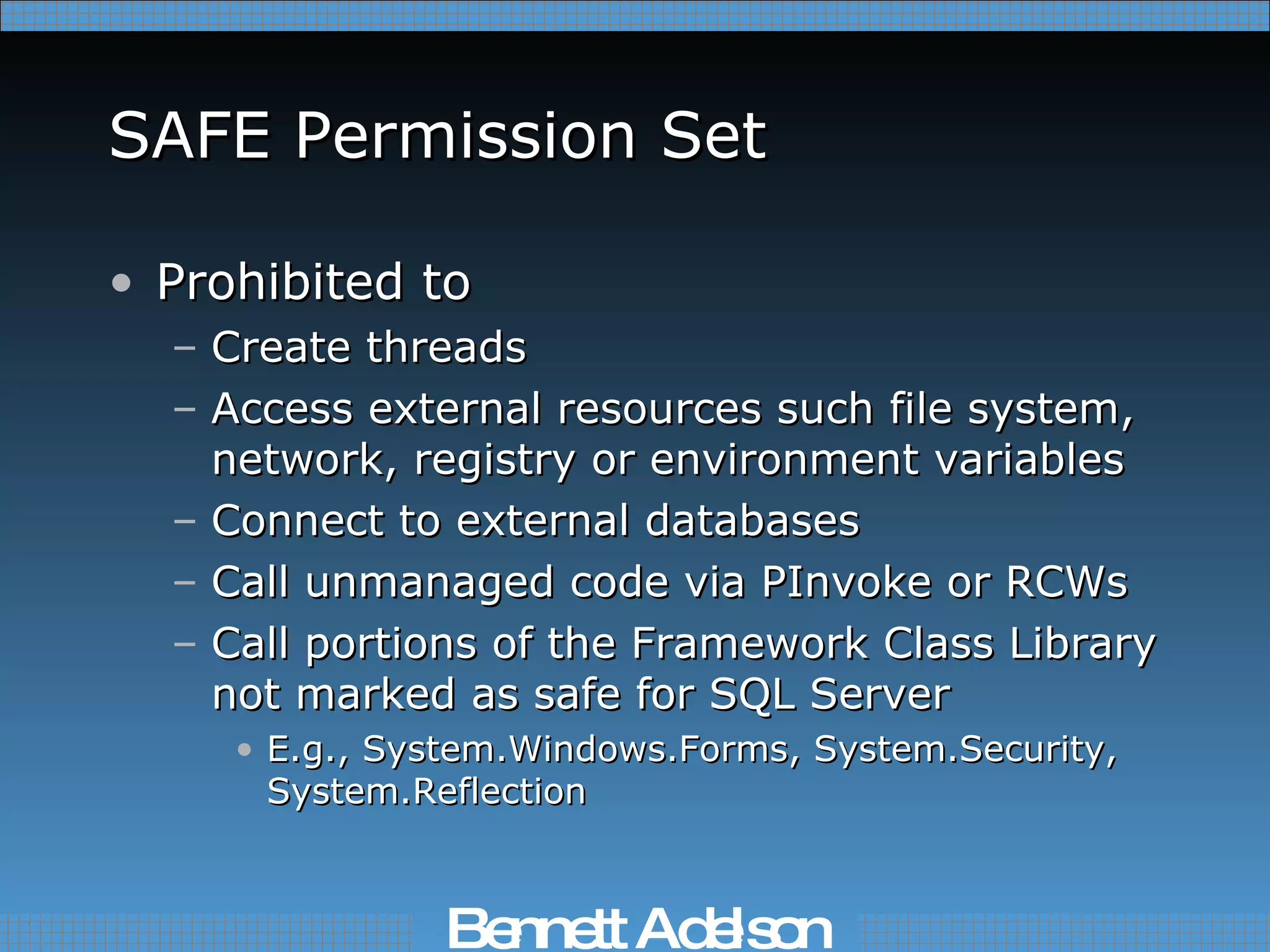
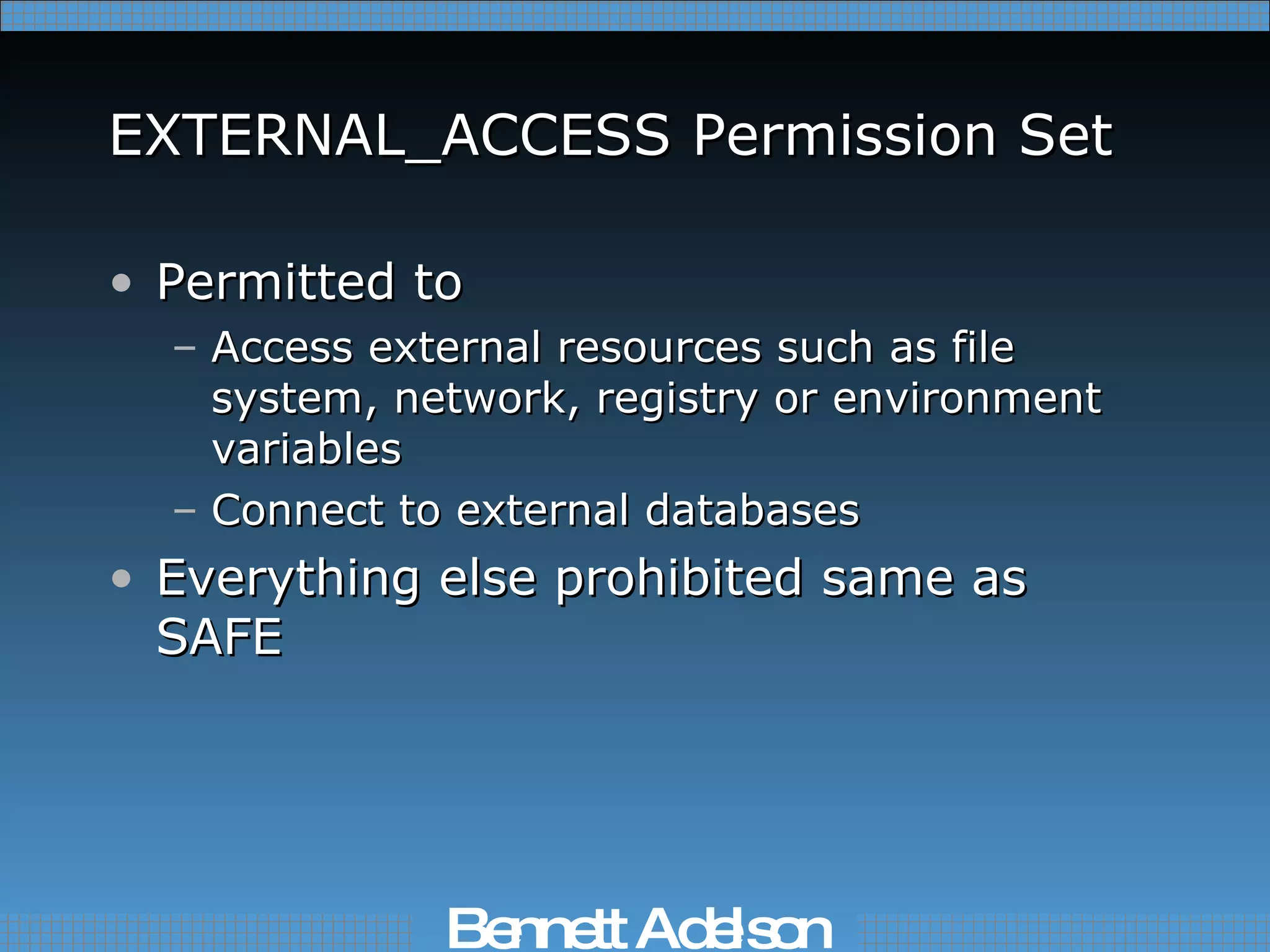
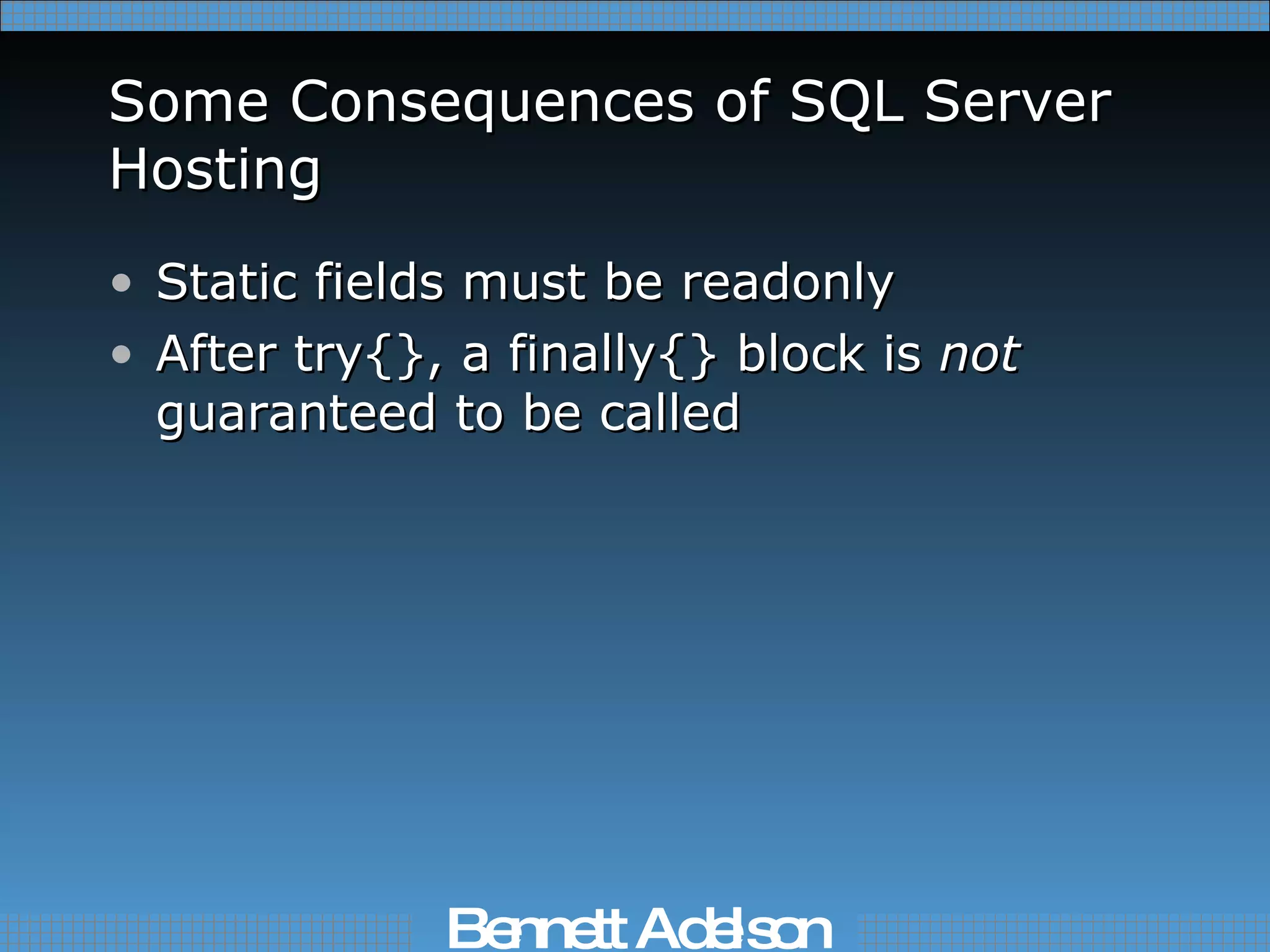
![How to Install an Assembly in SQLCLR Create the Assembly outside SQL Server SQL Server itself comes with no tools to write or compile assemblies. Can use Visual Studio, Framework SDK, or other tools SQL Server doesn’t need a Strong Name Enable SQLCLR on the server Install Assembly in SQL Server with CREATE ASSEMBLY Declare a procedure, function or trigger with CREATE [PROCEDURE|FUNCTION|TRIGGER] … EXTERNAL NAME …](https://image.slidesharecdn.com/introduction-to-threading-in-net693/75/Introduction-to-Threading-in-Net-33-2048.jpg)
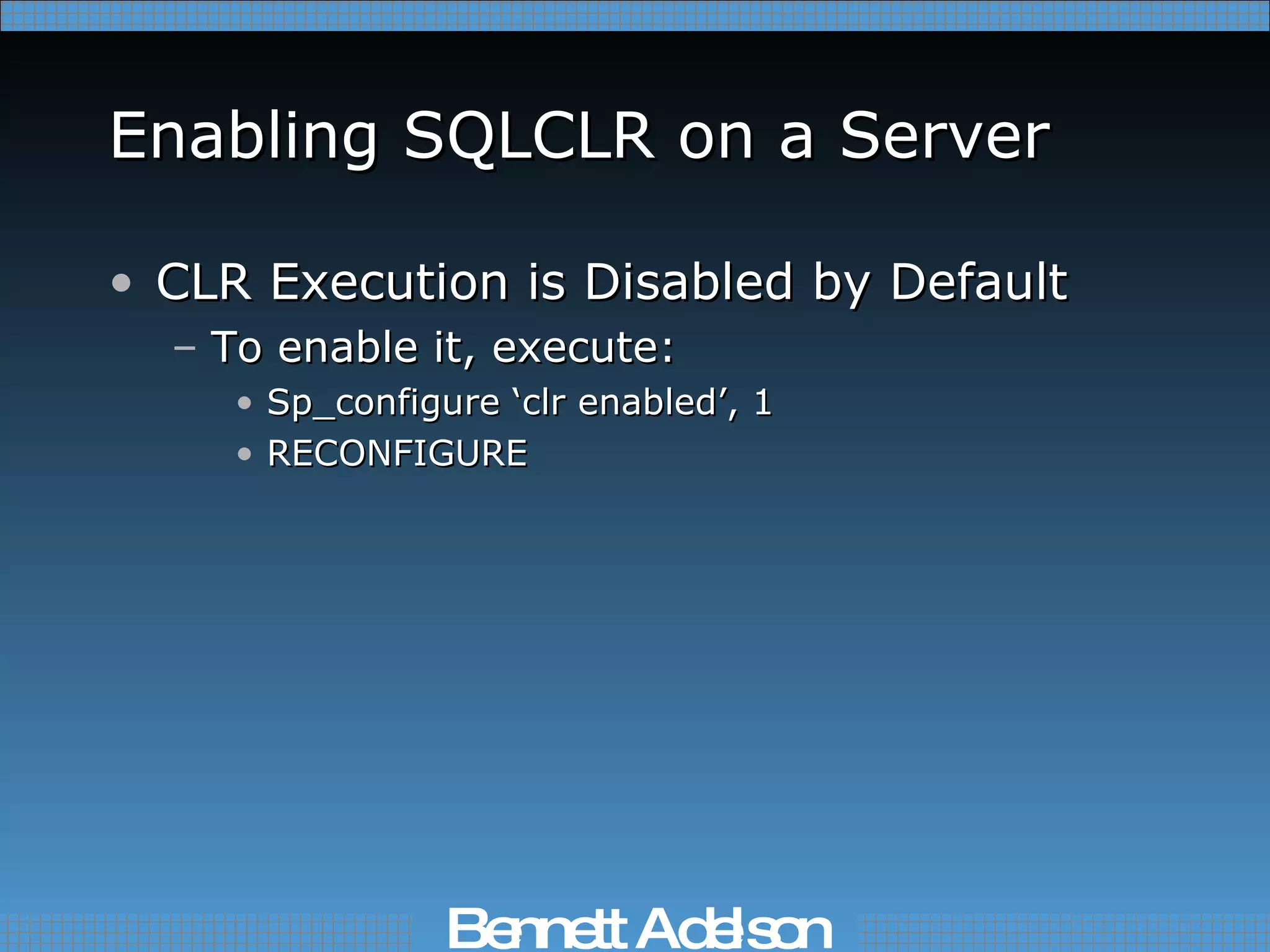
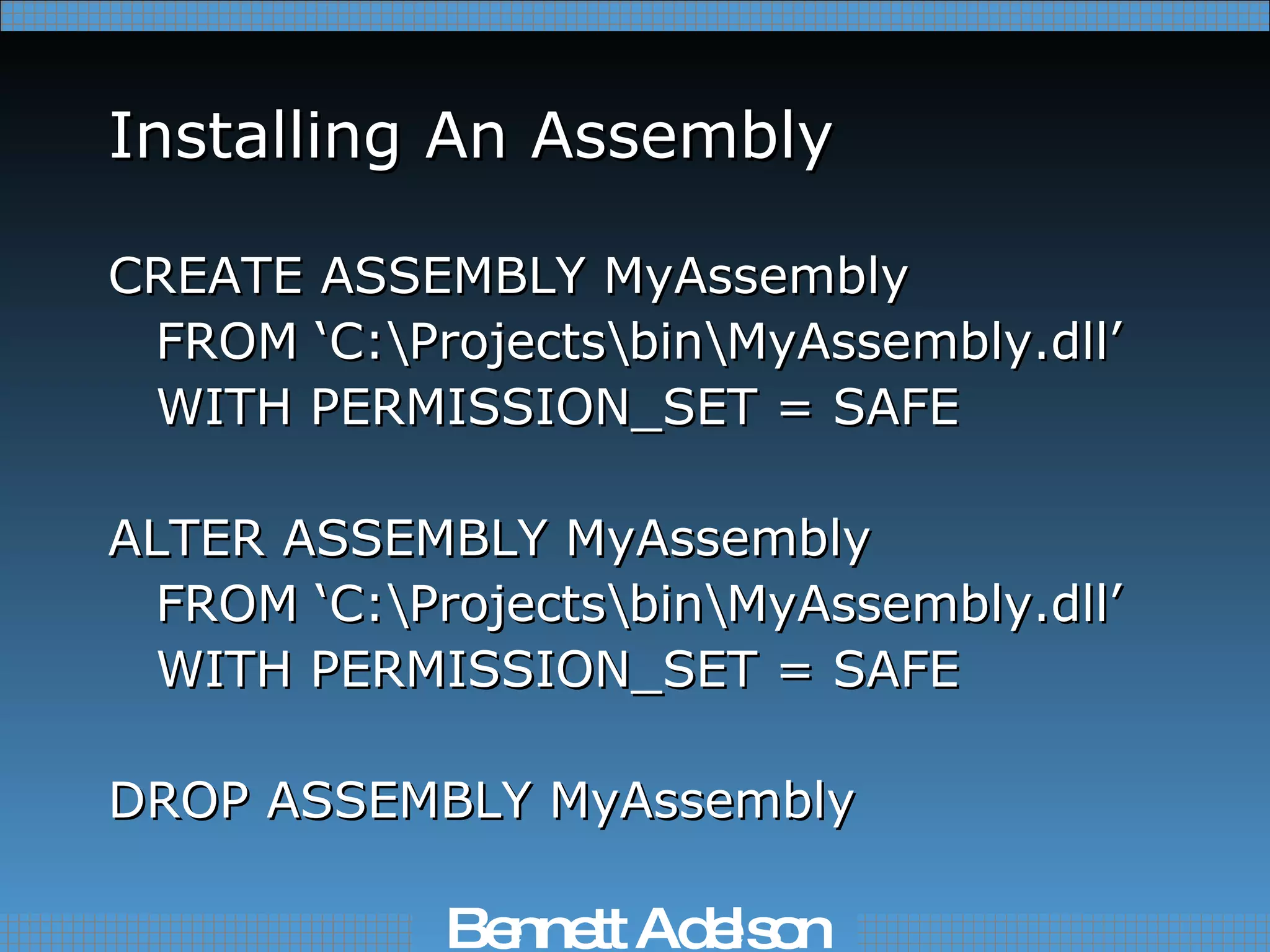
![Making the Assembly Usable from T-SQL CREATE PROCEDURE MyProcedure (@arg1 int, @arg2 varchar(20)) EXTERNAL NAME MyAssembly.[MyNameSpace.MyClass]. MyProcedure CREATE FUNCTION MyFunction (arg1 int) RETURNS int EXTERNAL NAME MyAssembly.[MyNameSpace.MyClass]. MyFunction](https://image.slidesharecdn.com/introduction-to-threading-in-net693/75/Introduction-to-Threading-in-Net-36-2048.jpg)
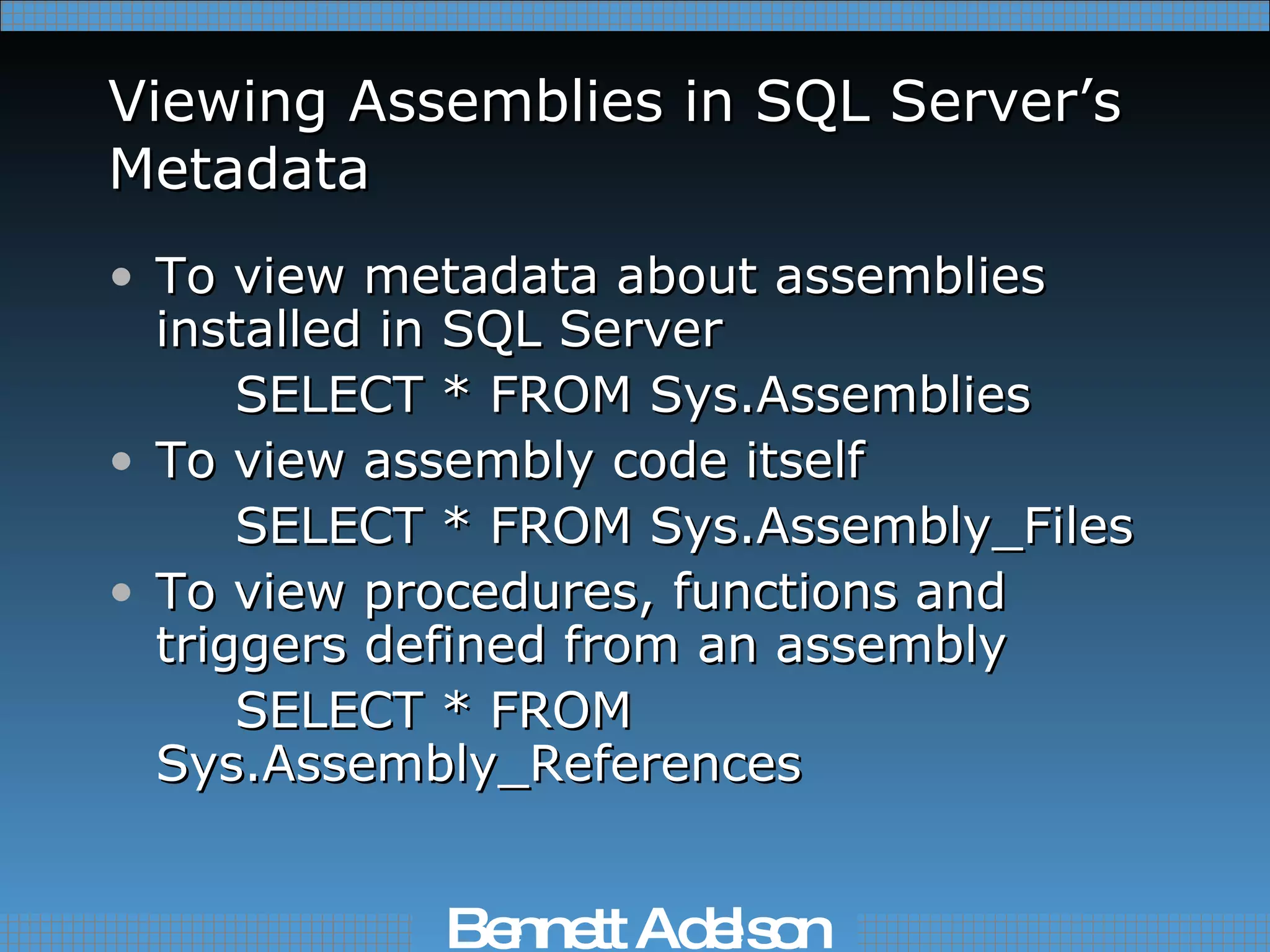
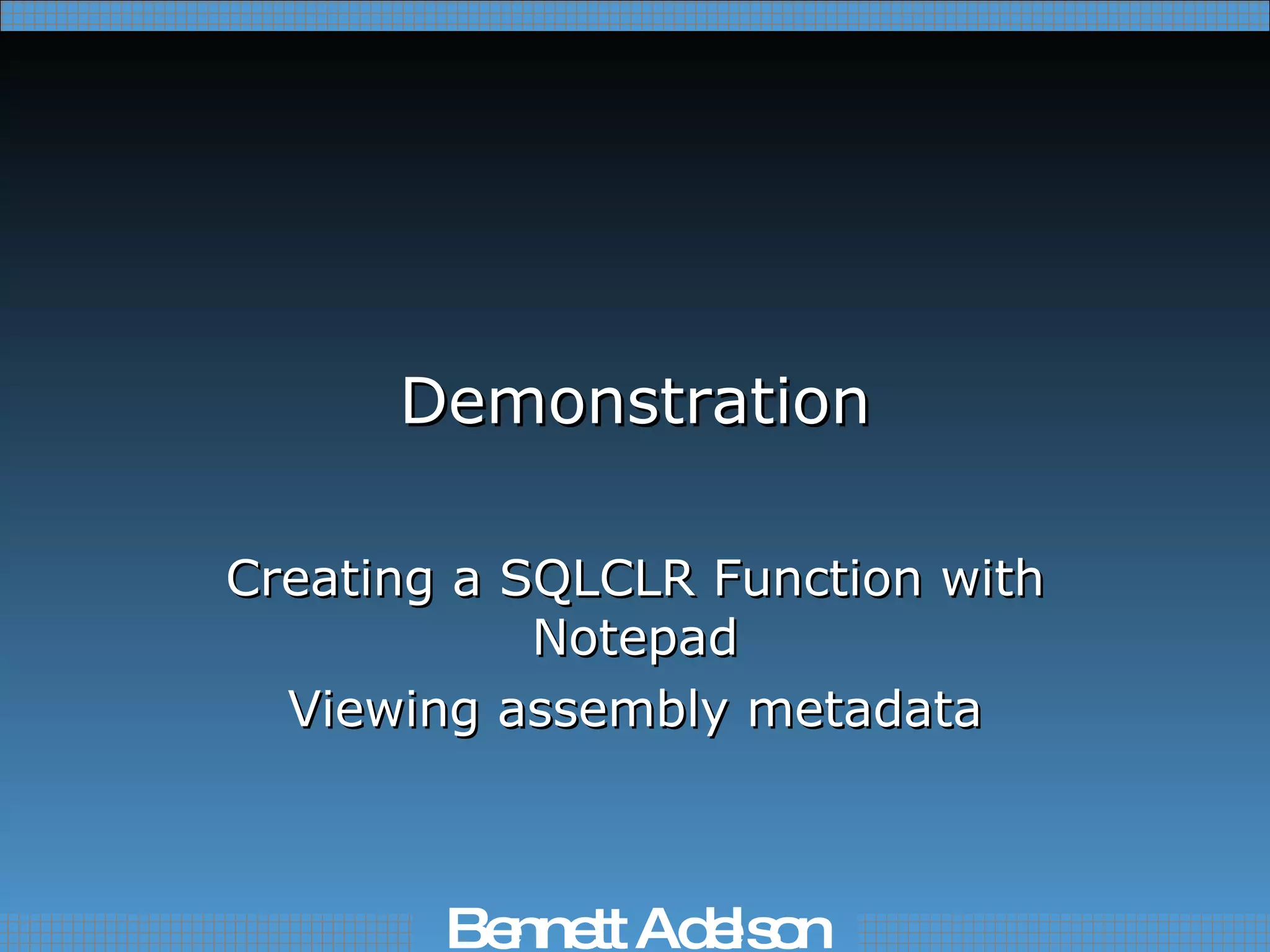
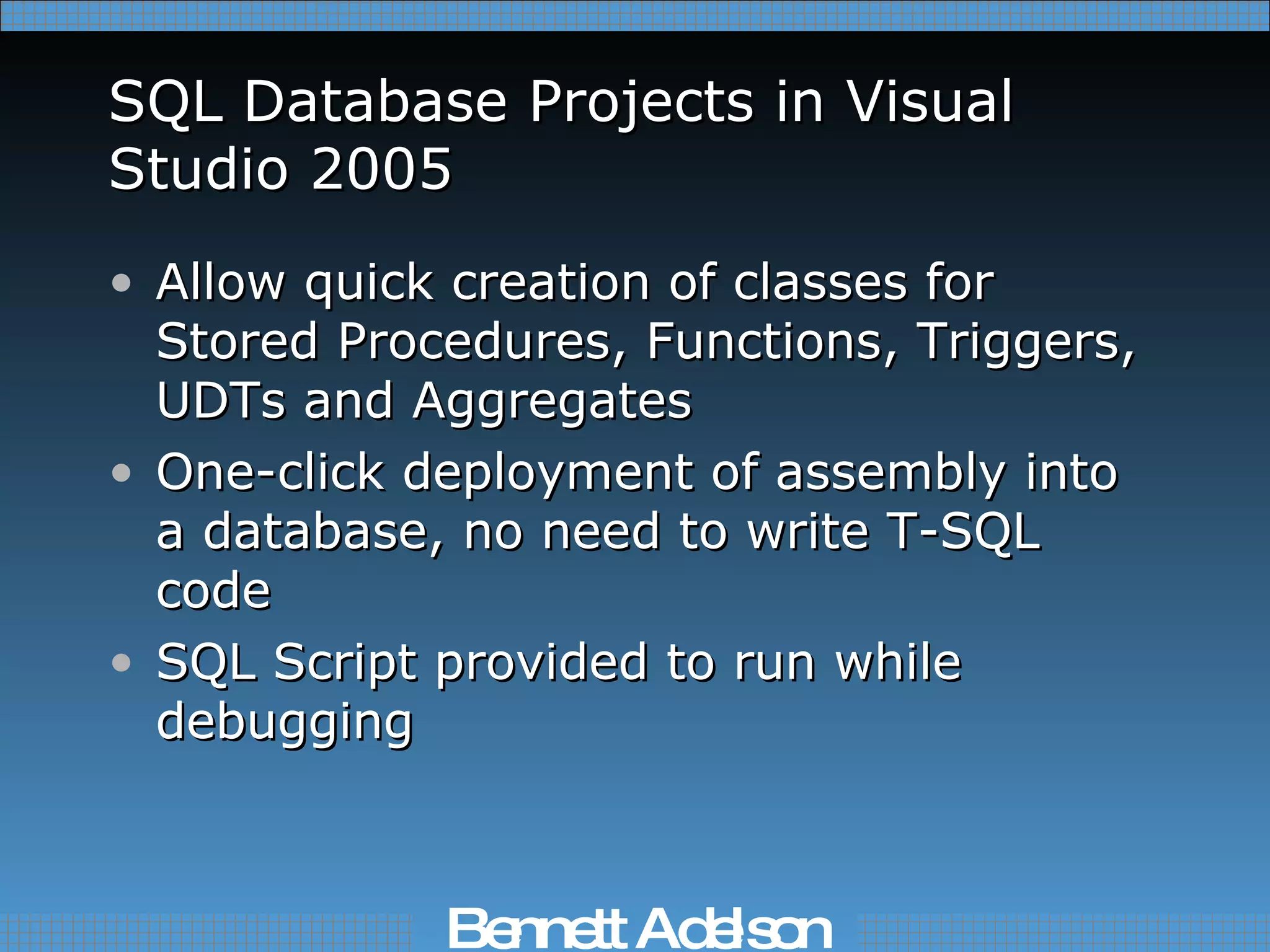
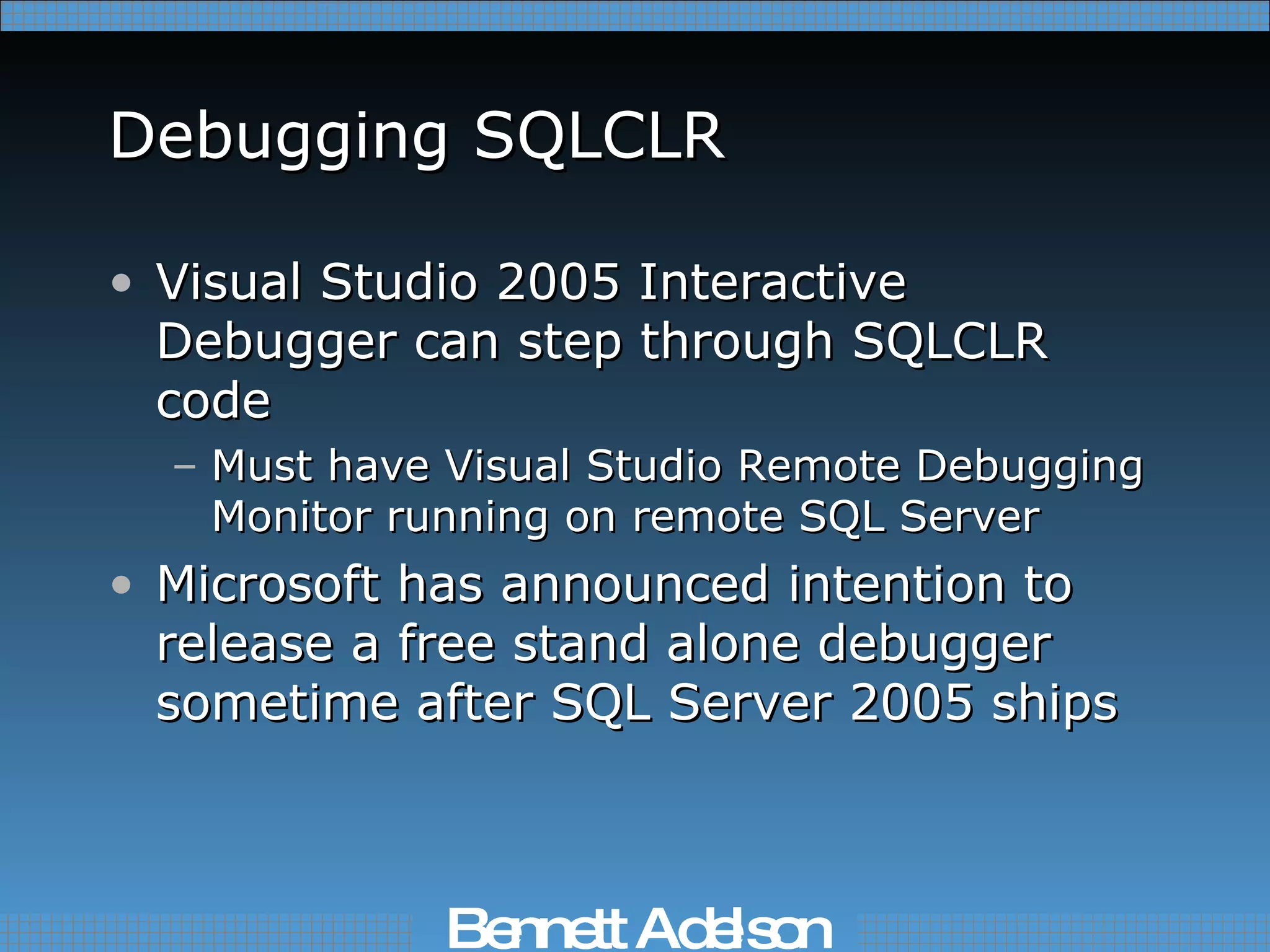
![Creating SQLCLR Functions, Procedures and Triggers Must be a static method with one of [SqlFunctionAttribute] [SqlProcedureAttribute] [SqlTriggerAttribute] Can belong to a class or struct, whose name isn’t important SQL doesn’t support overloading, so avoid overloaded method names](https://image.slidesharecdn.com/introduction-to-threading-in-net693/75/Introduction-to-Threading-in-Net-41-2048.jpg)
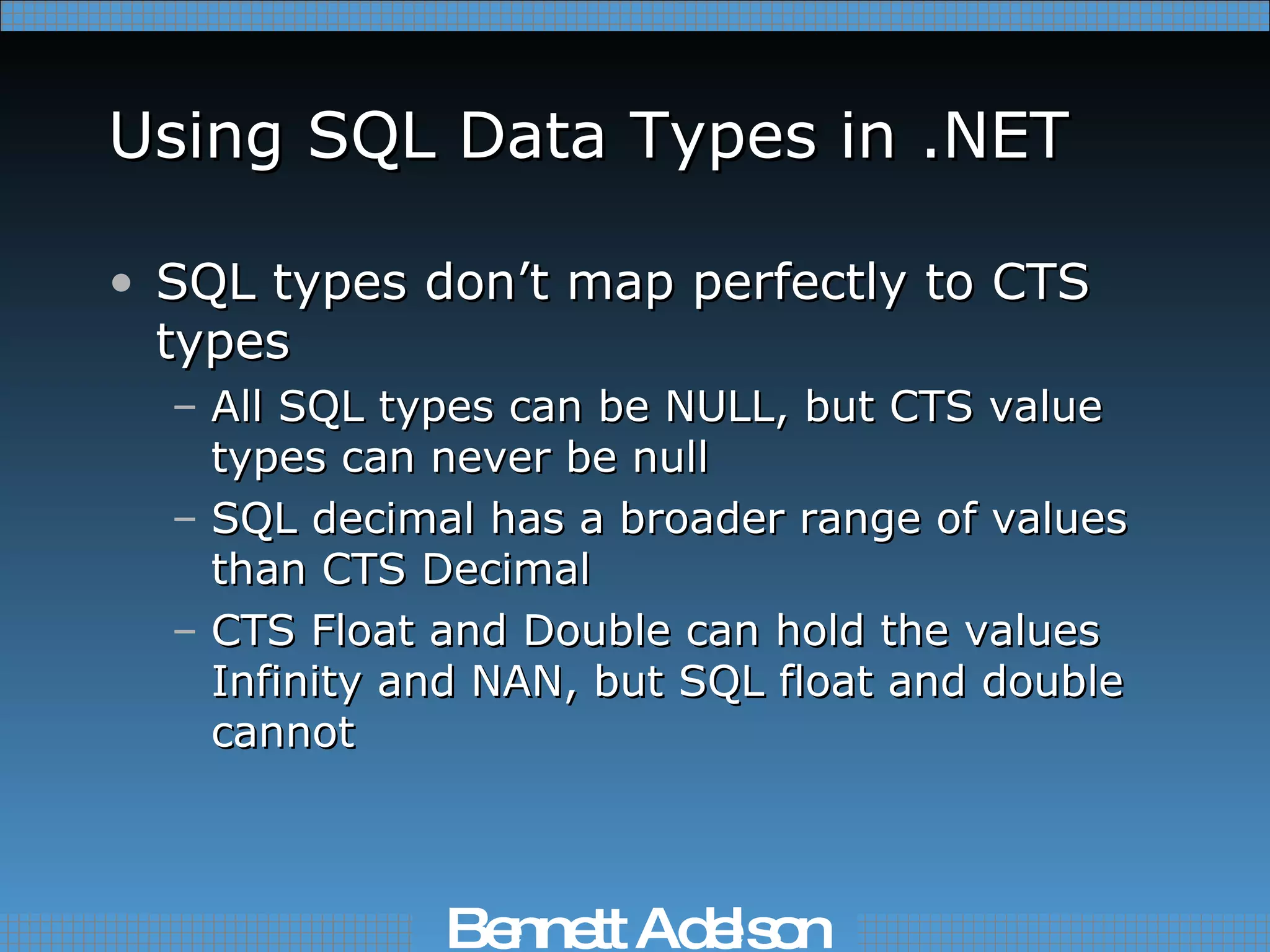
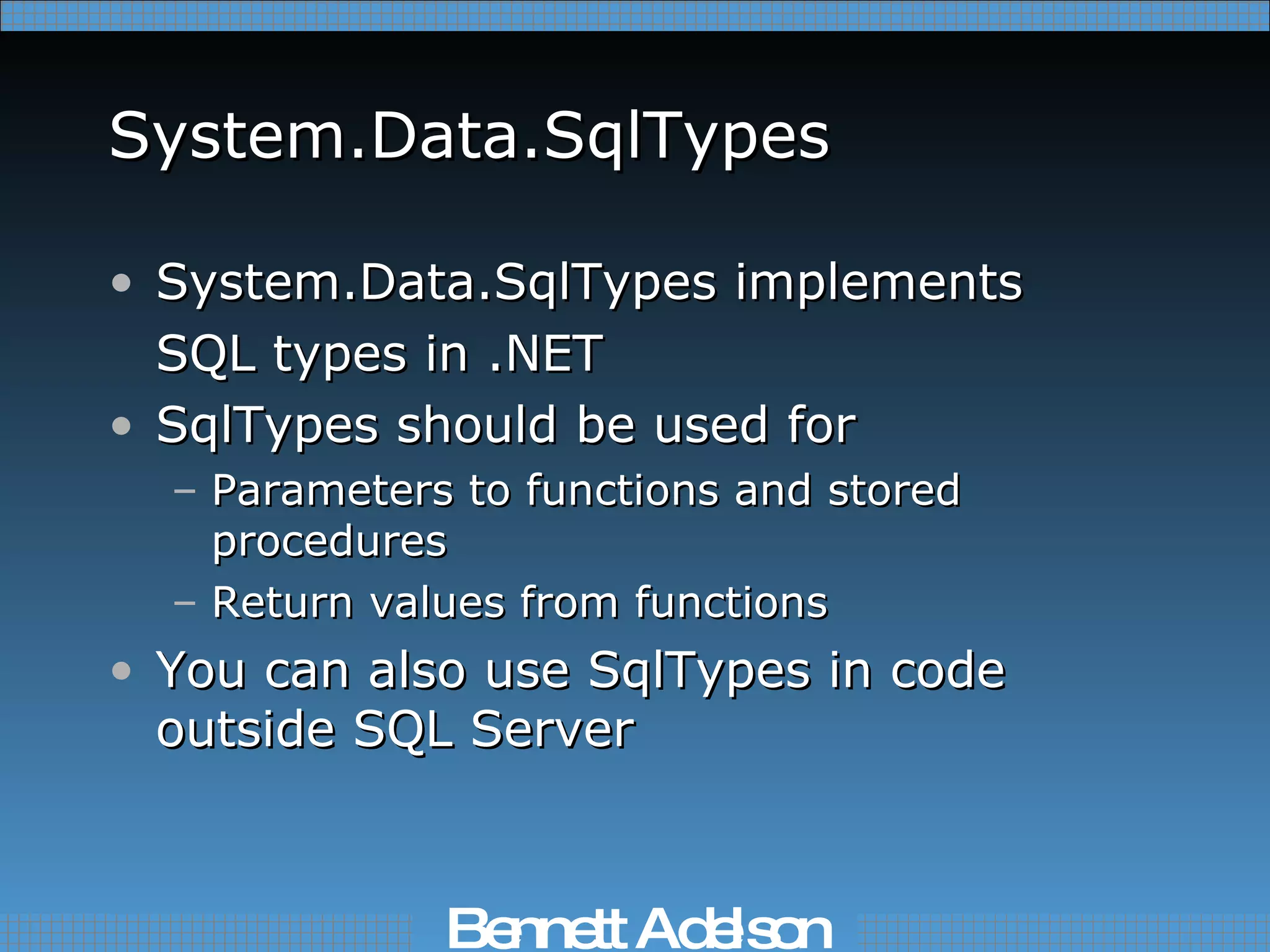
![SqlType Examples CLR SQLType SQL String SqlString (n)(var)char, (n)text Int32 SqlInt32 int Double SqlDouble float Boolean SqlBoolean bit Byte[] SqlBinary (var)binary, image, timestamp DateTime SqlDateTime datetime Guid SqlGuid uniqueidentifier](https://image.slidesharecdn.com/introduction-to-threading-in-net693/75/Introduction-to-Threading-in-Net-44-2048.jpg)
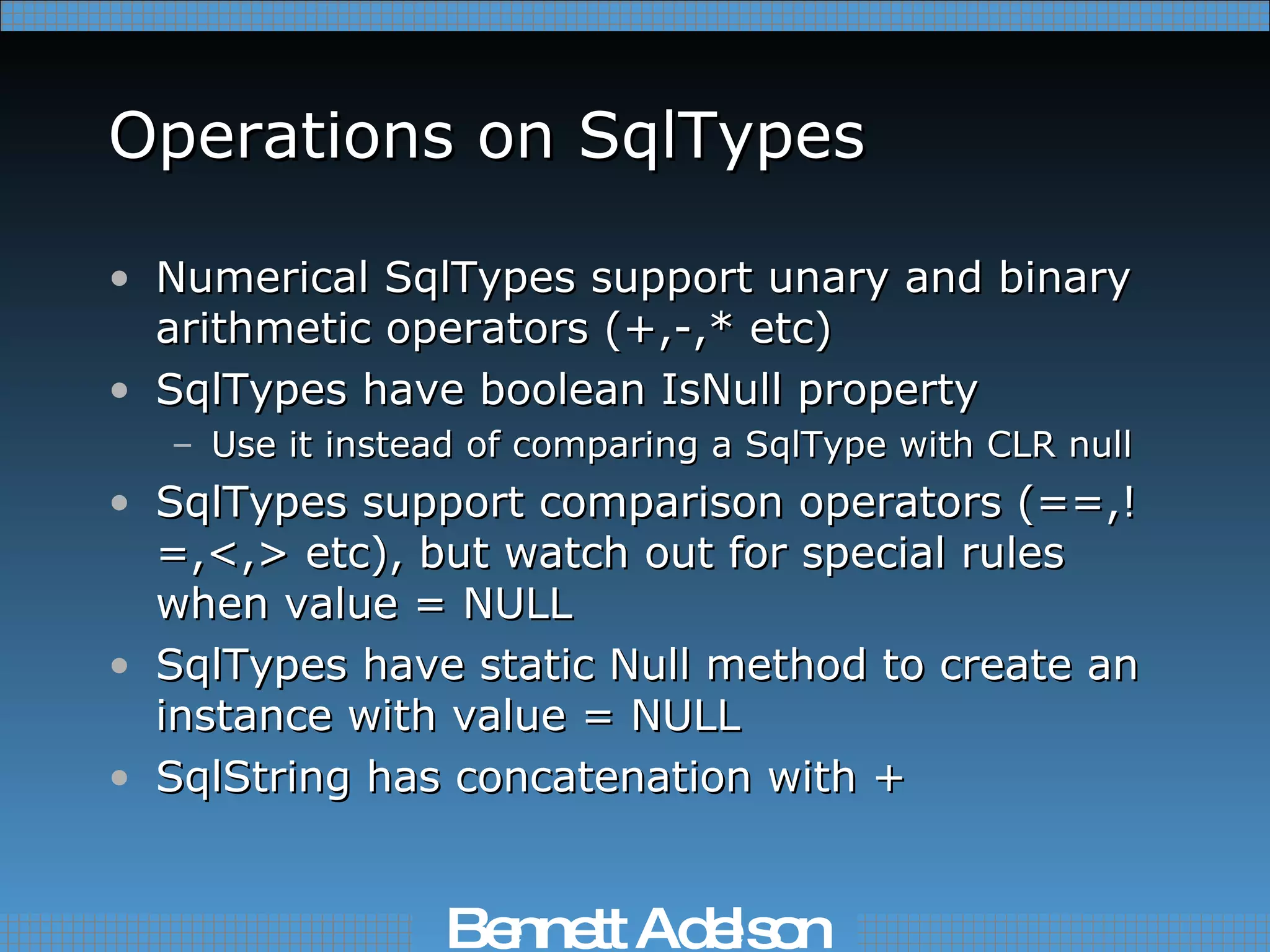
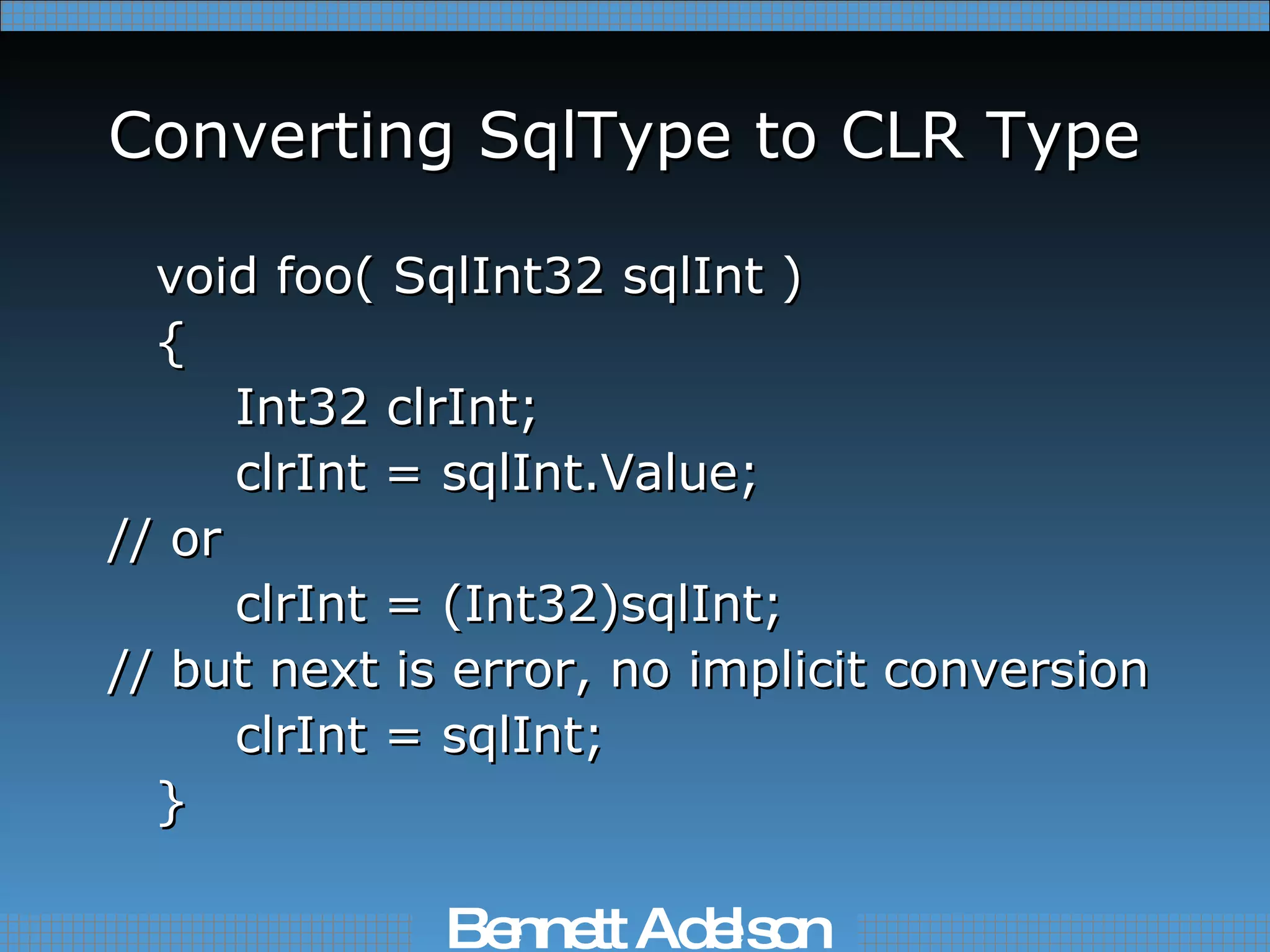
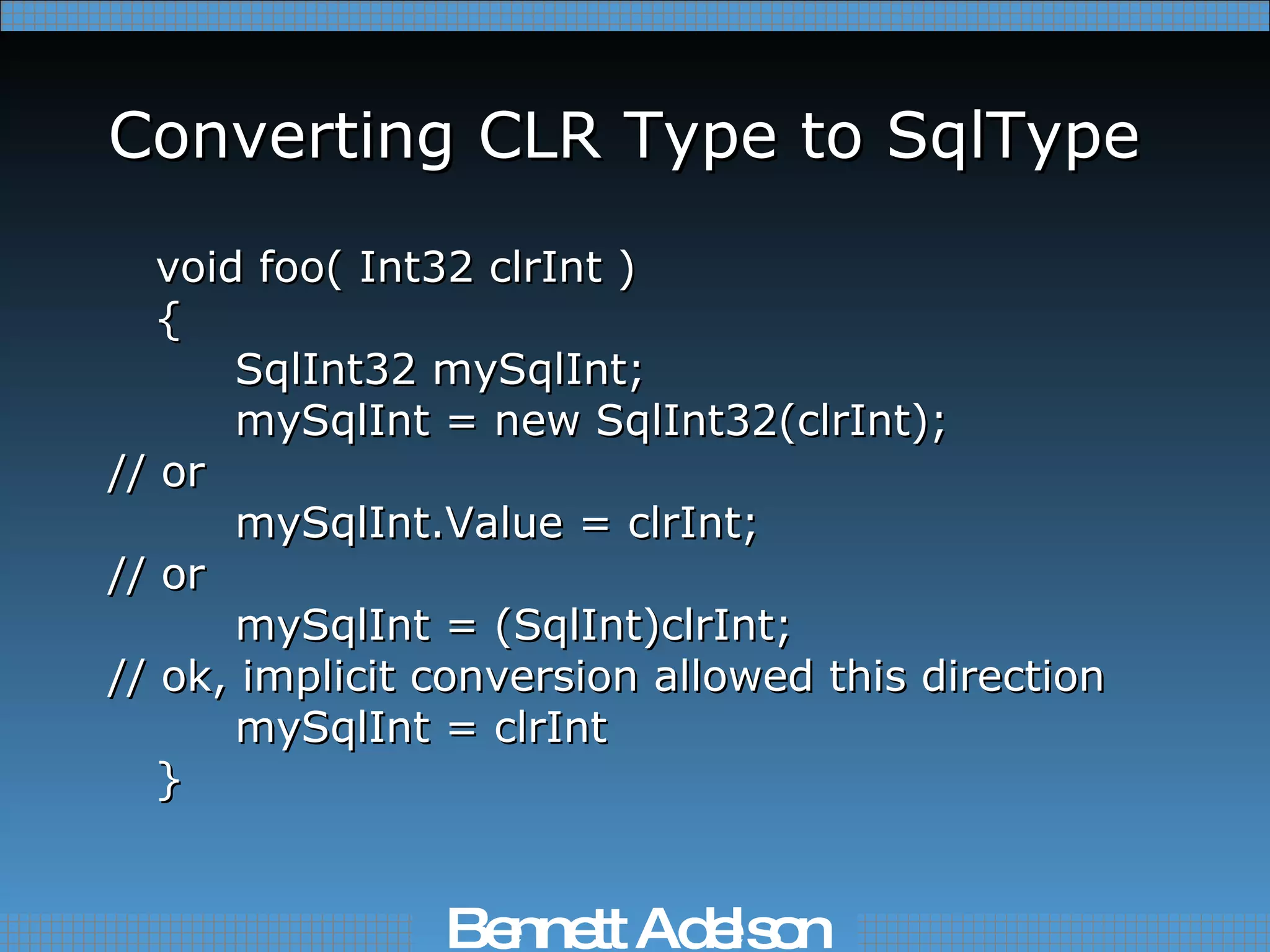
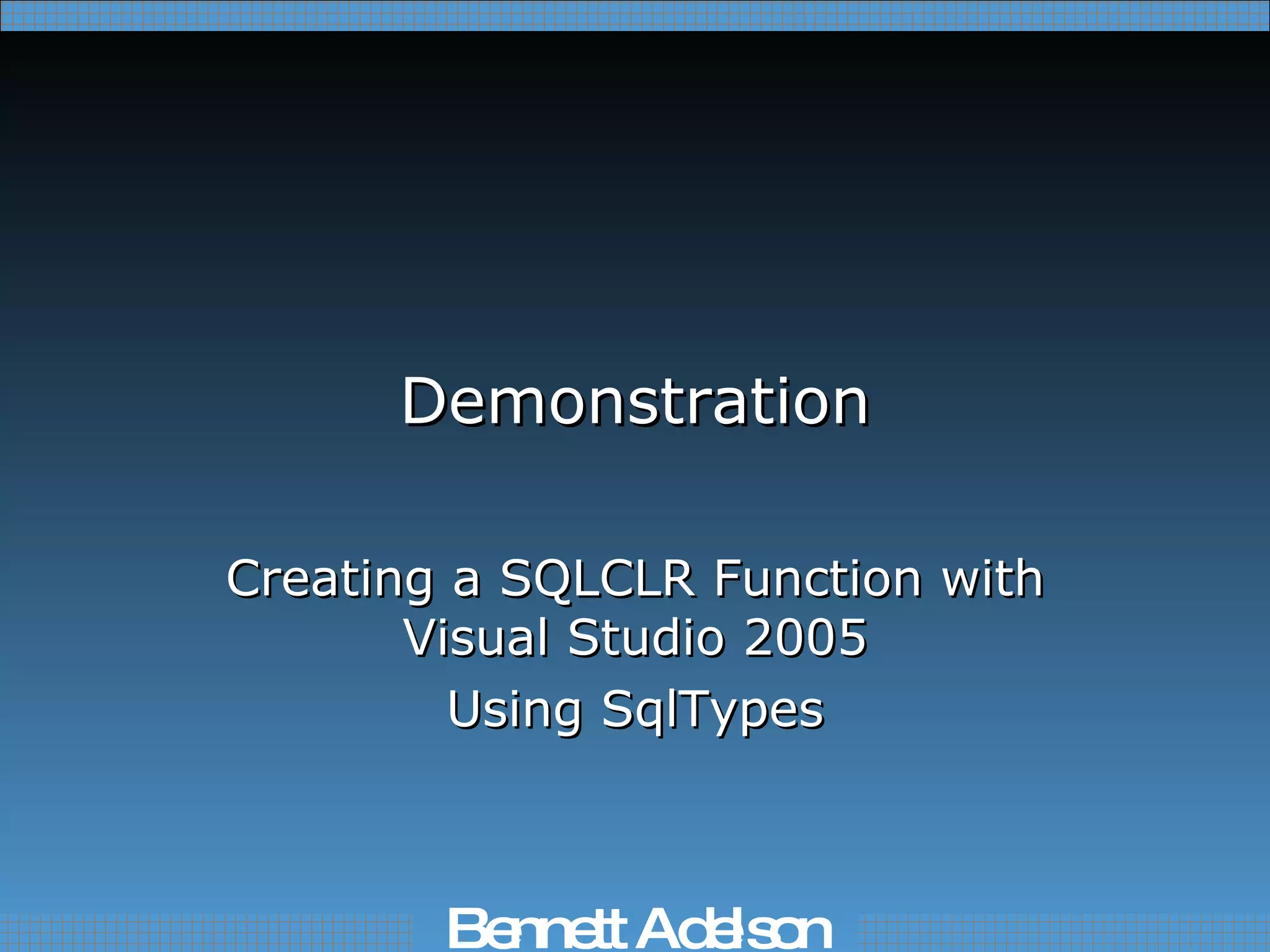
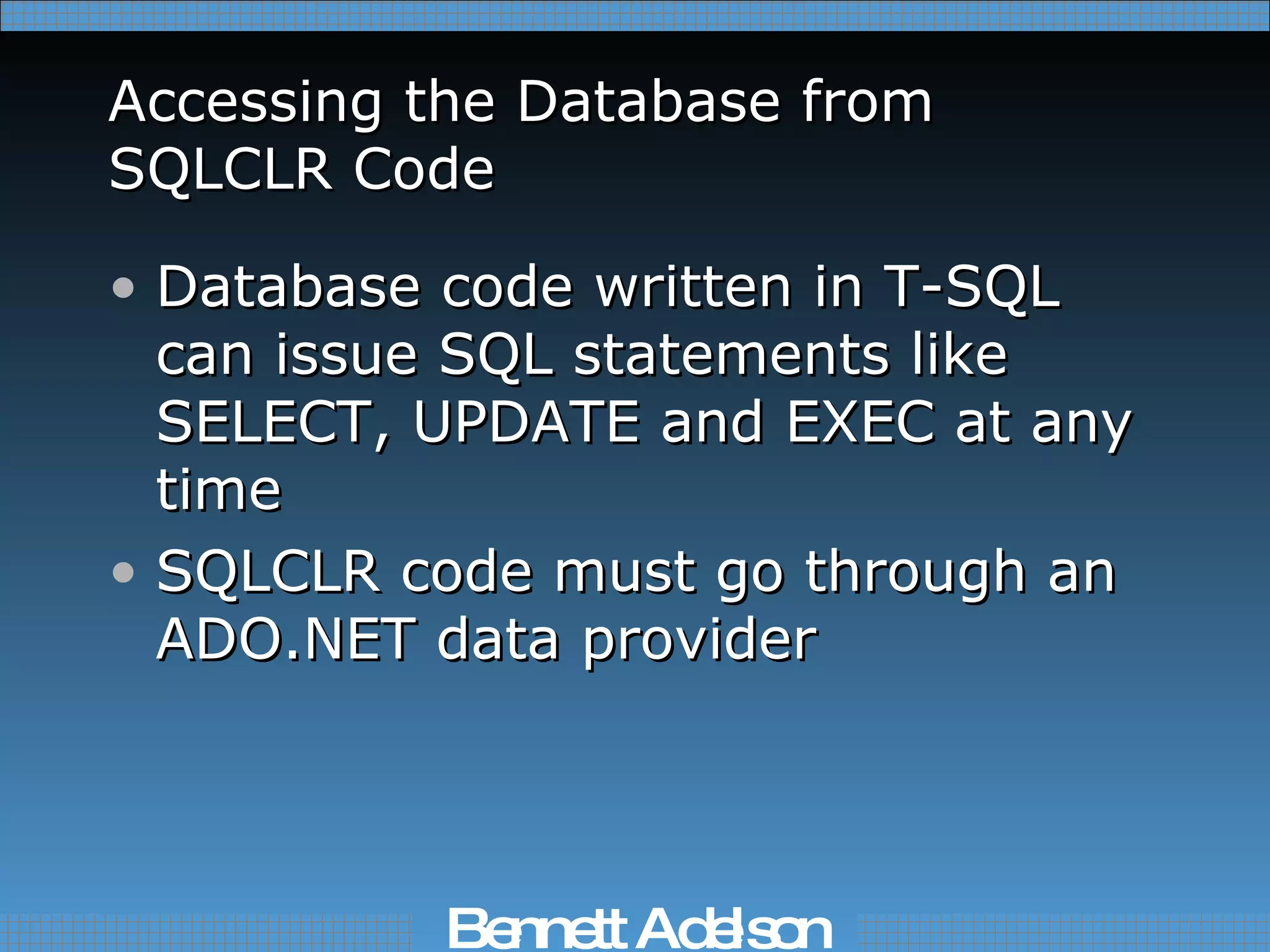
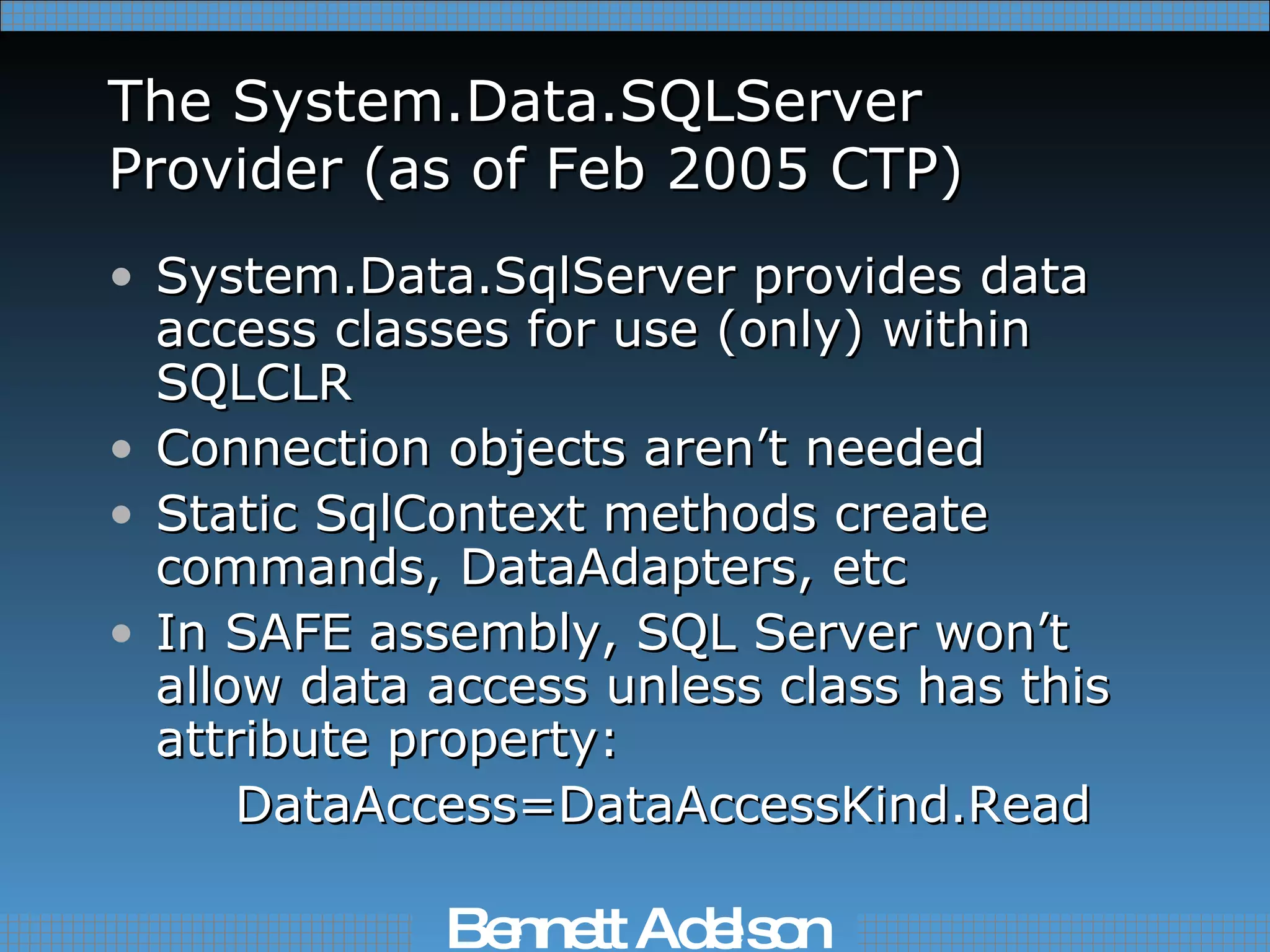
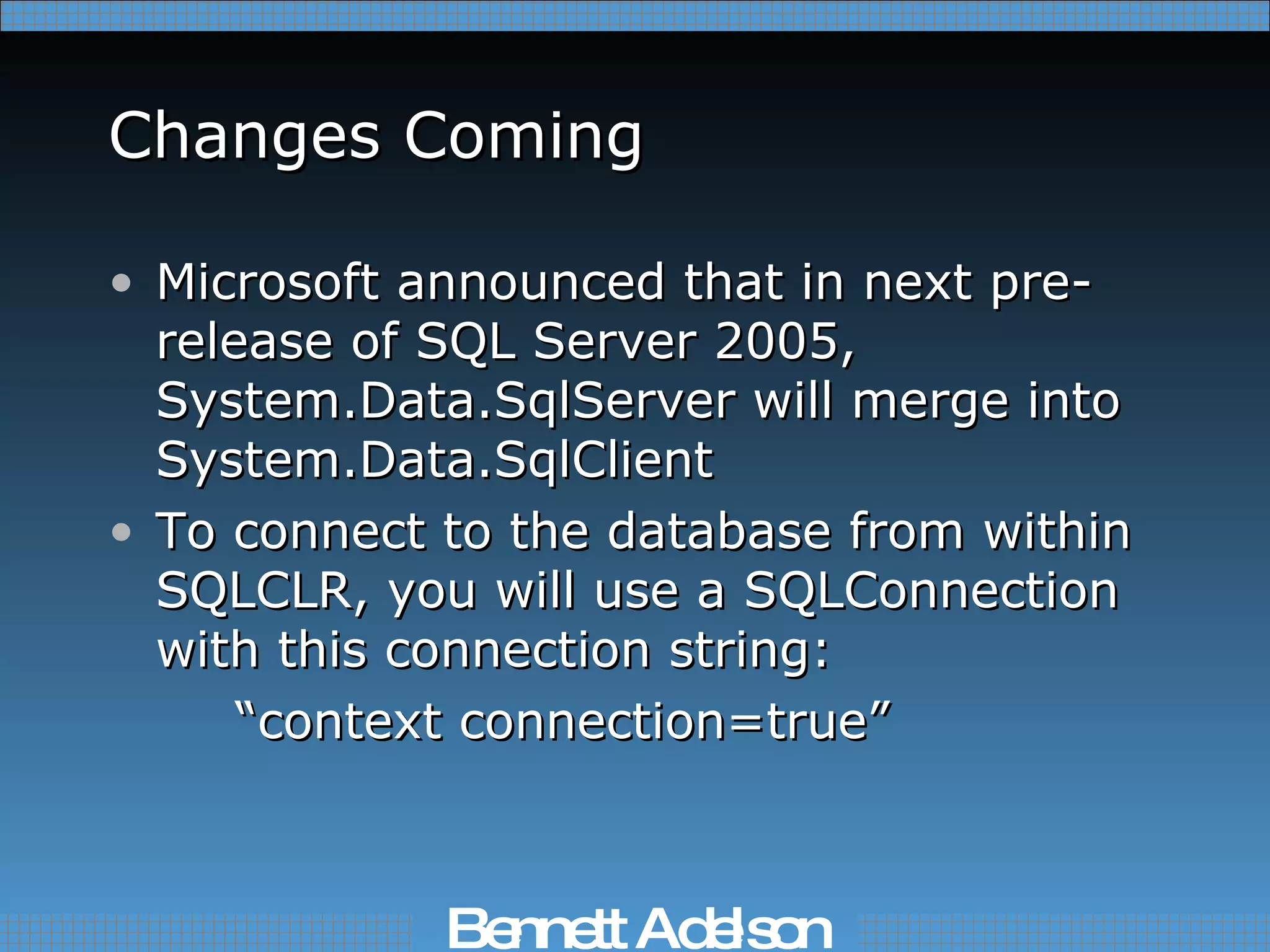
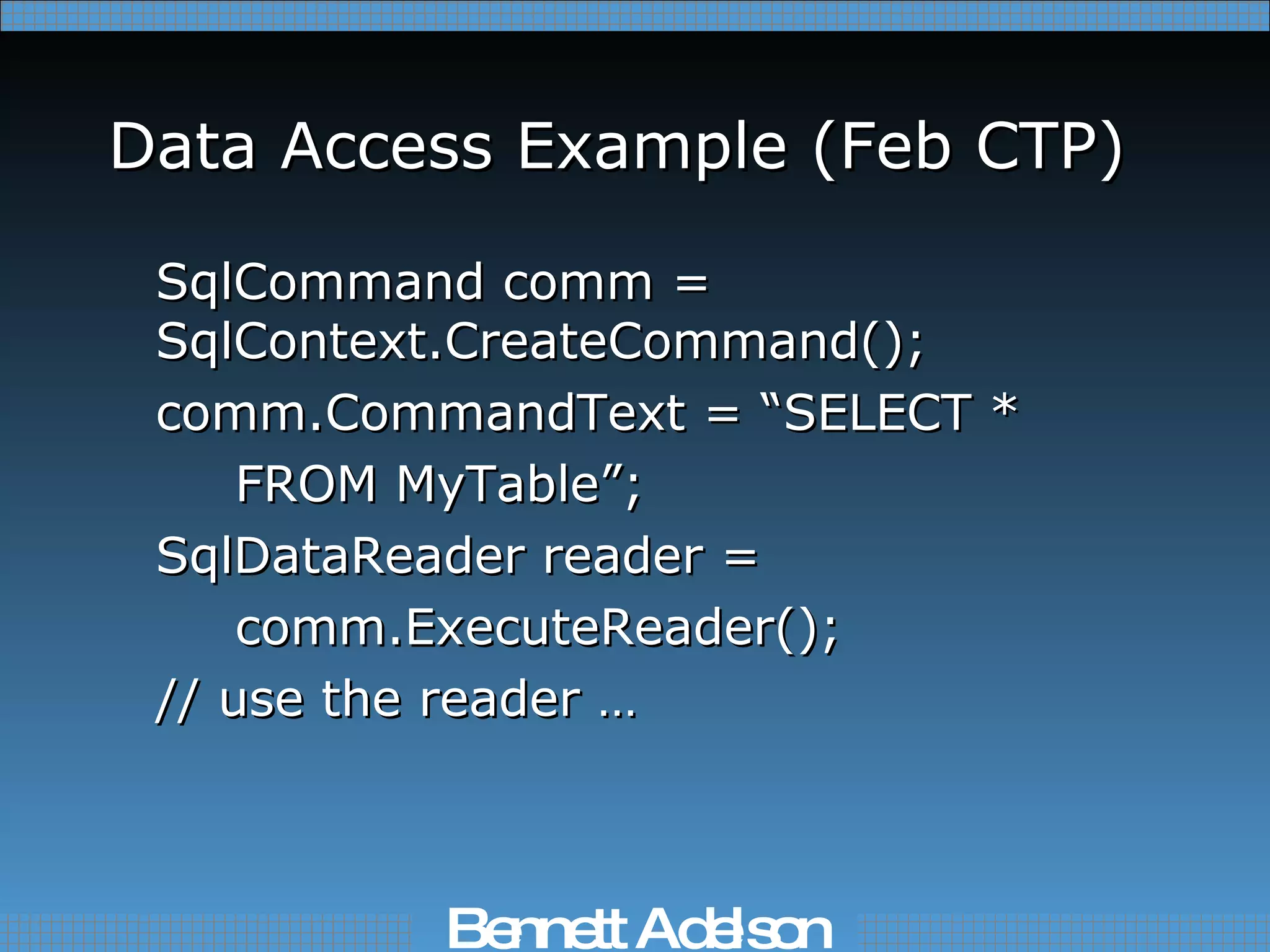
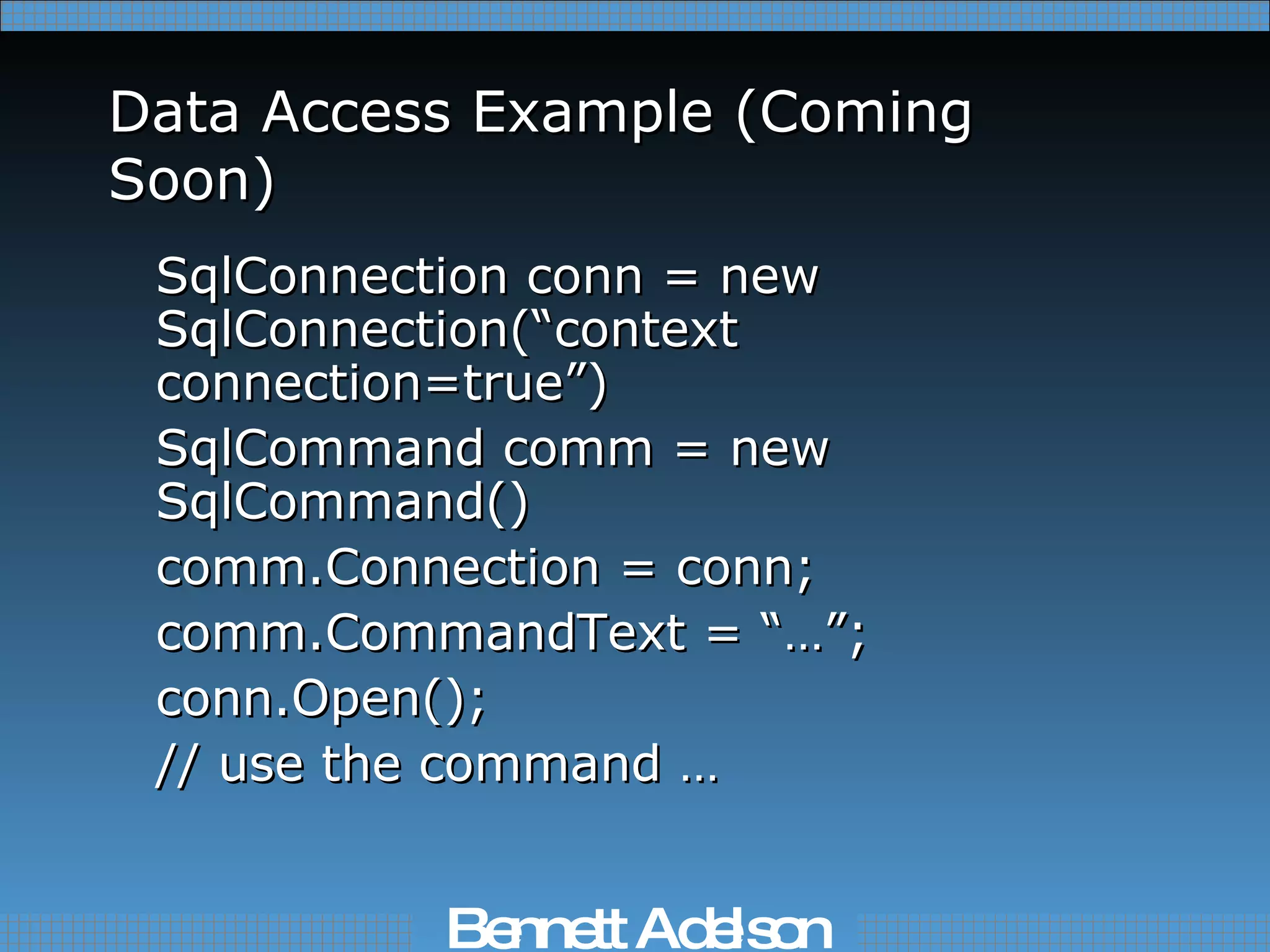
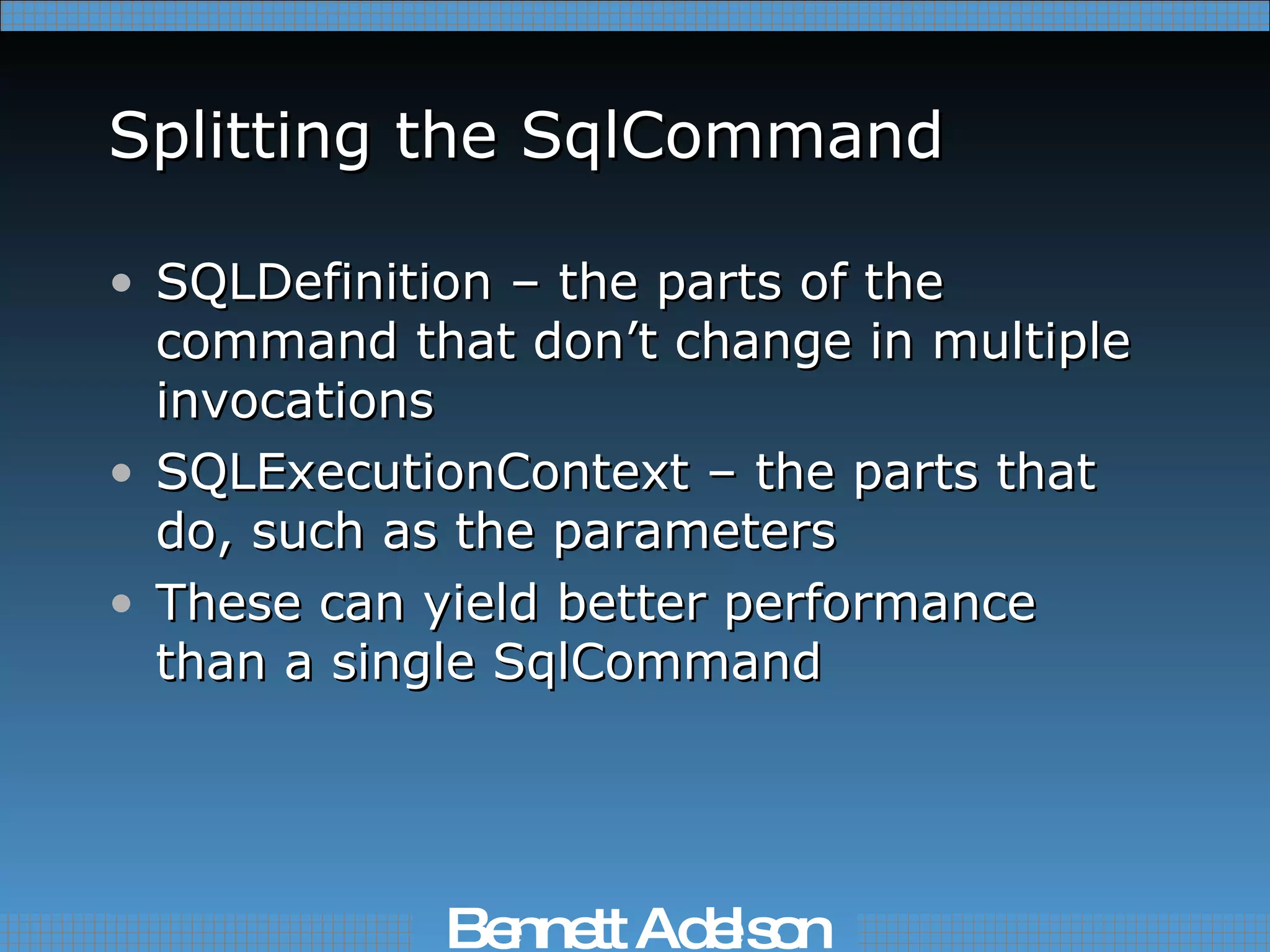
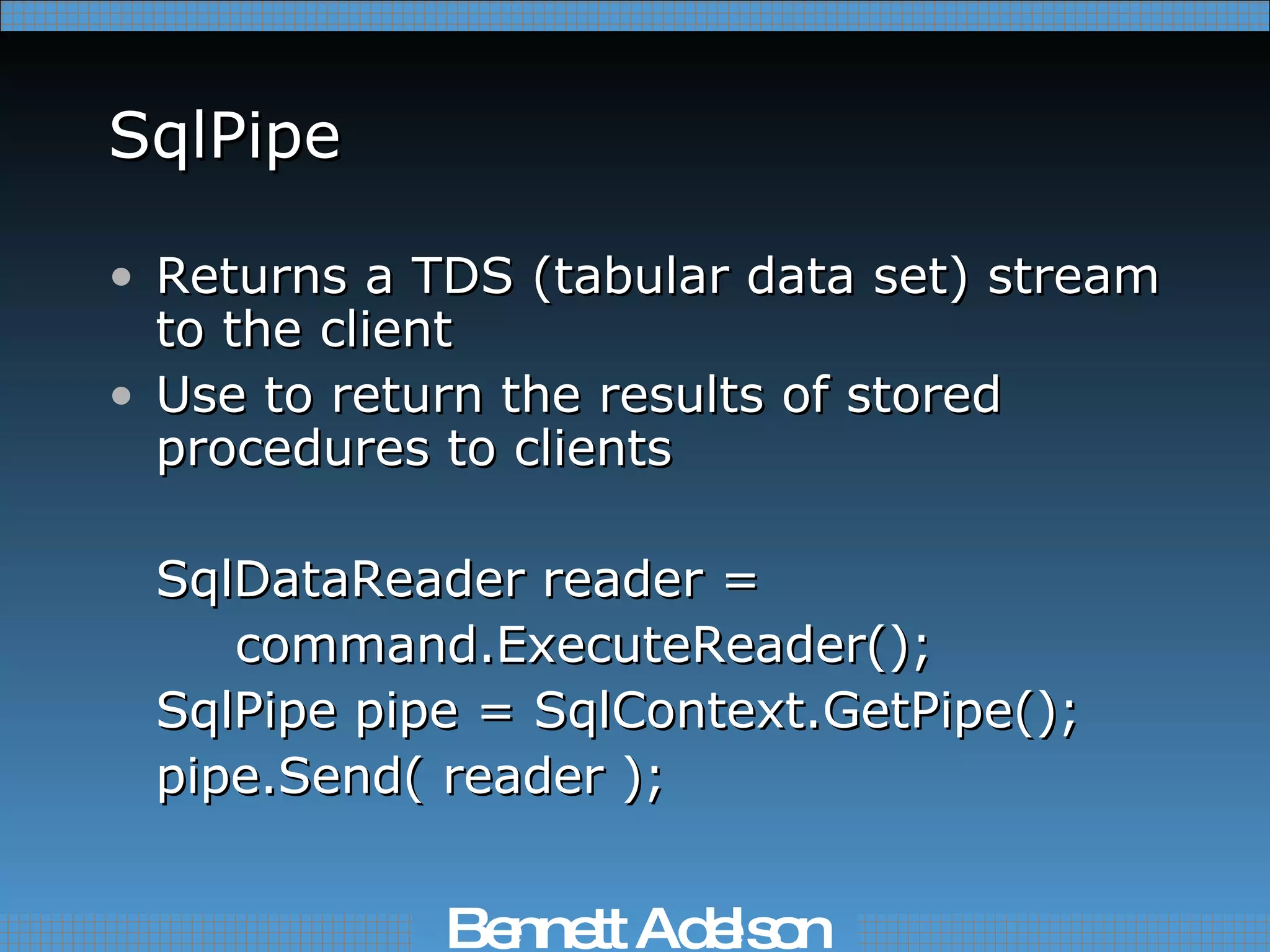
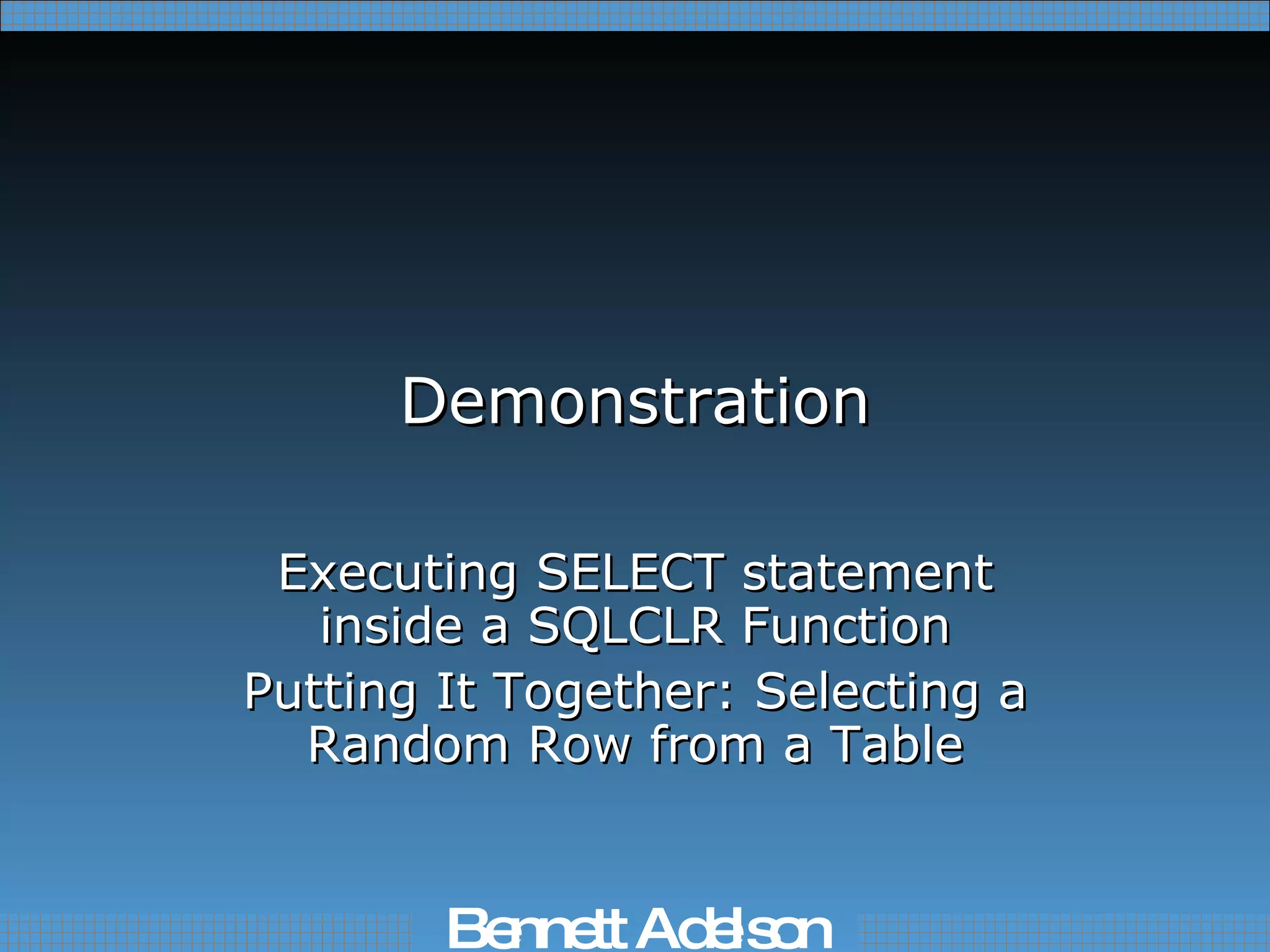
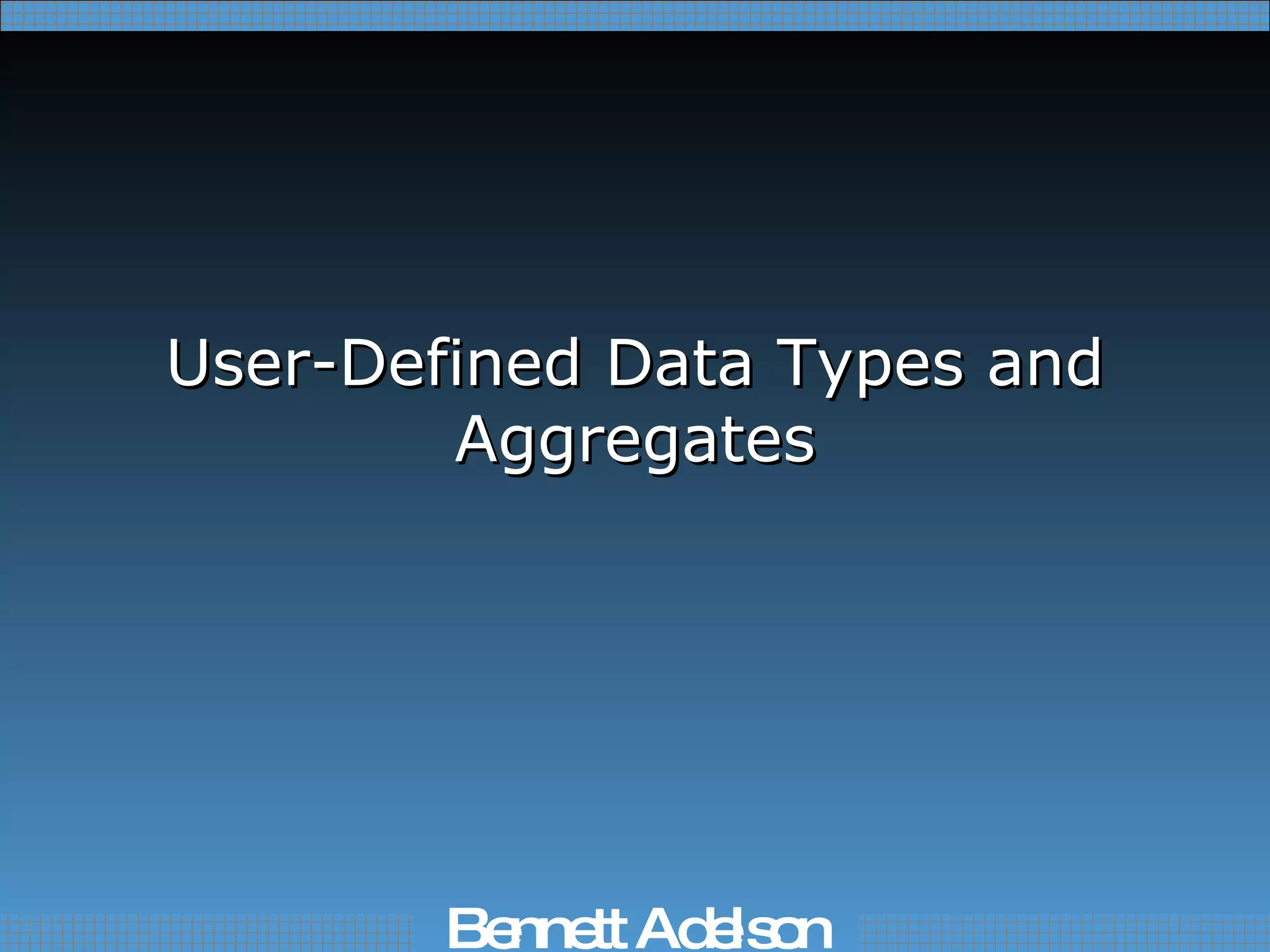
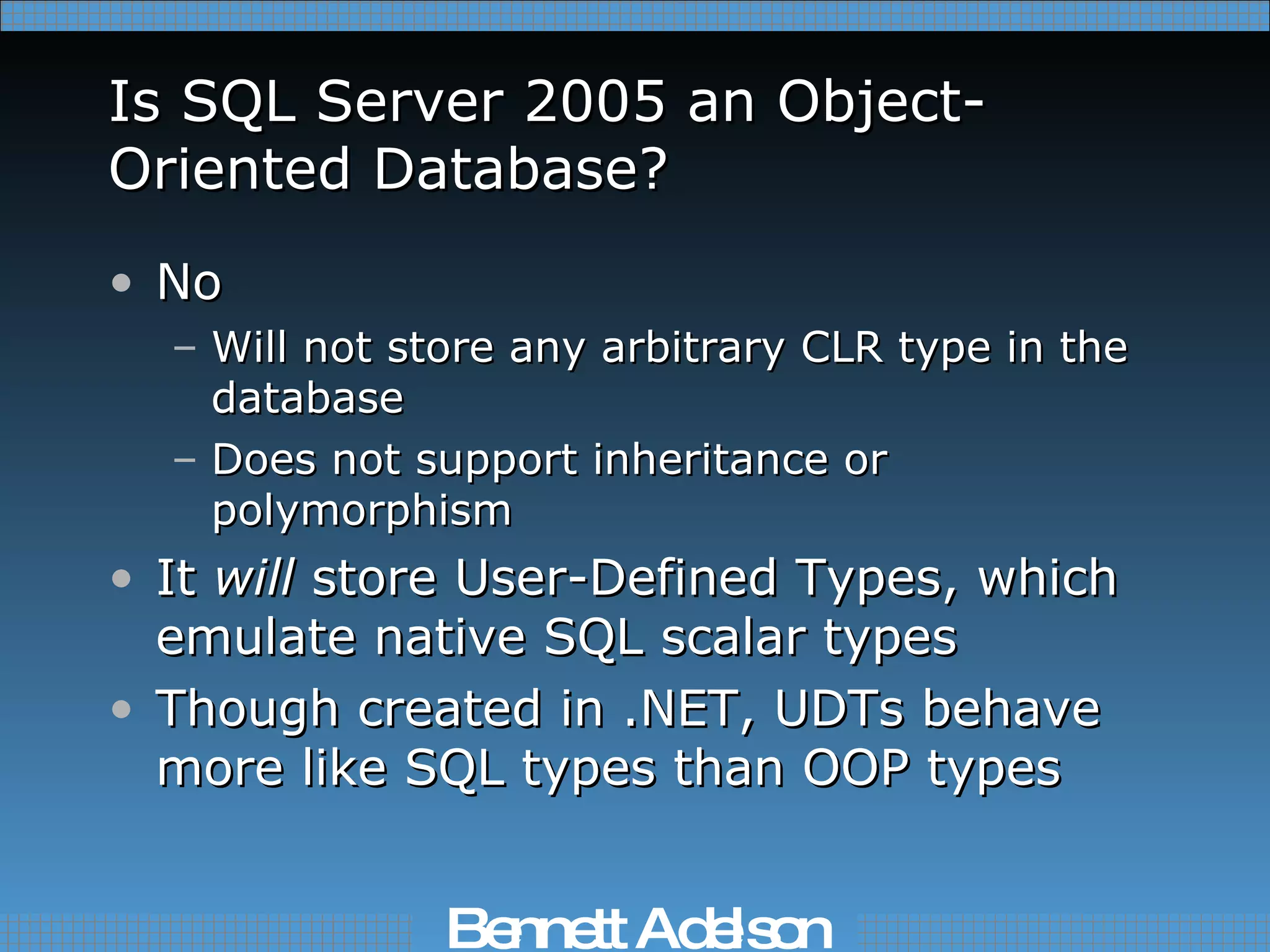
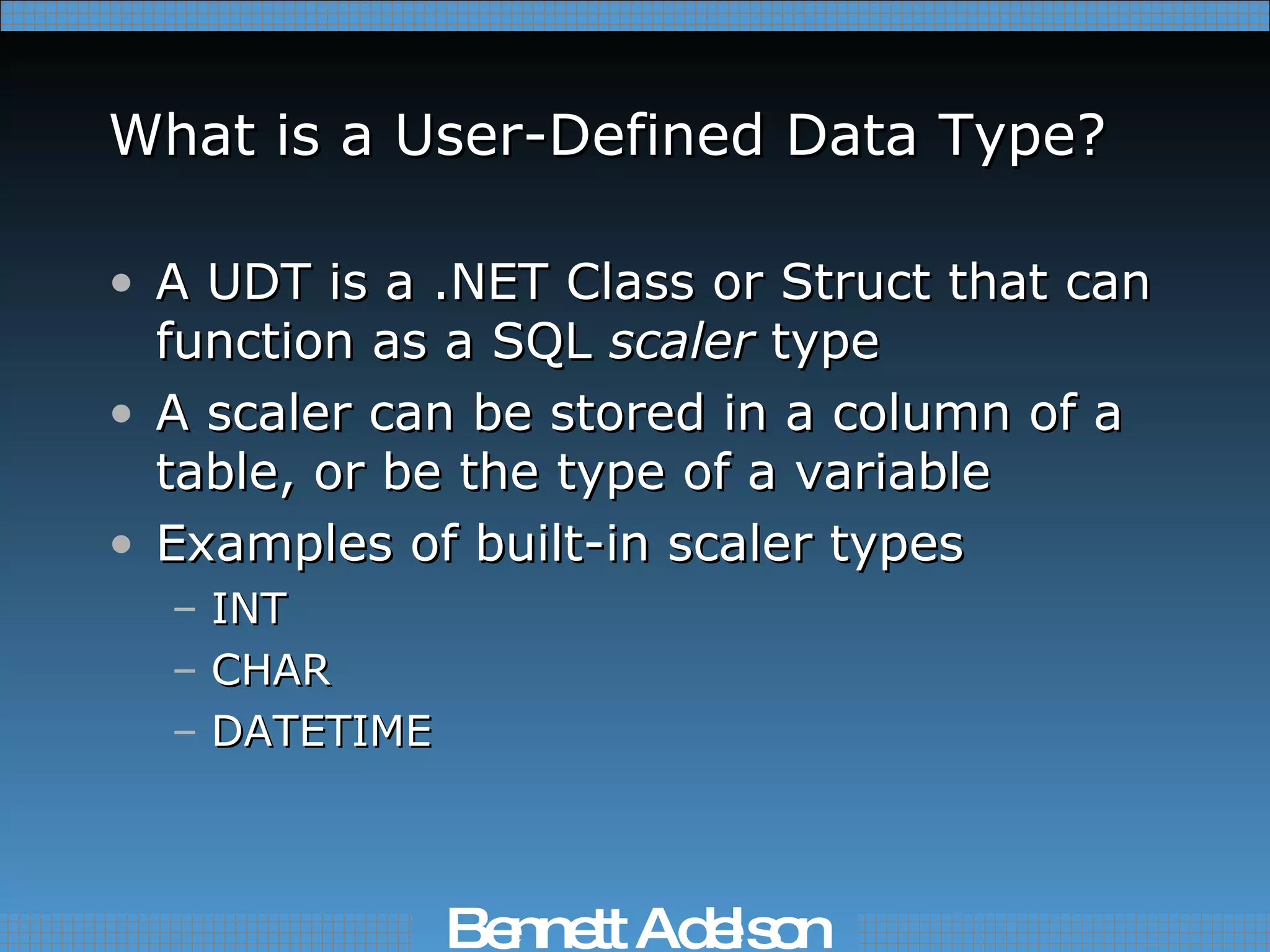
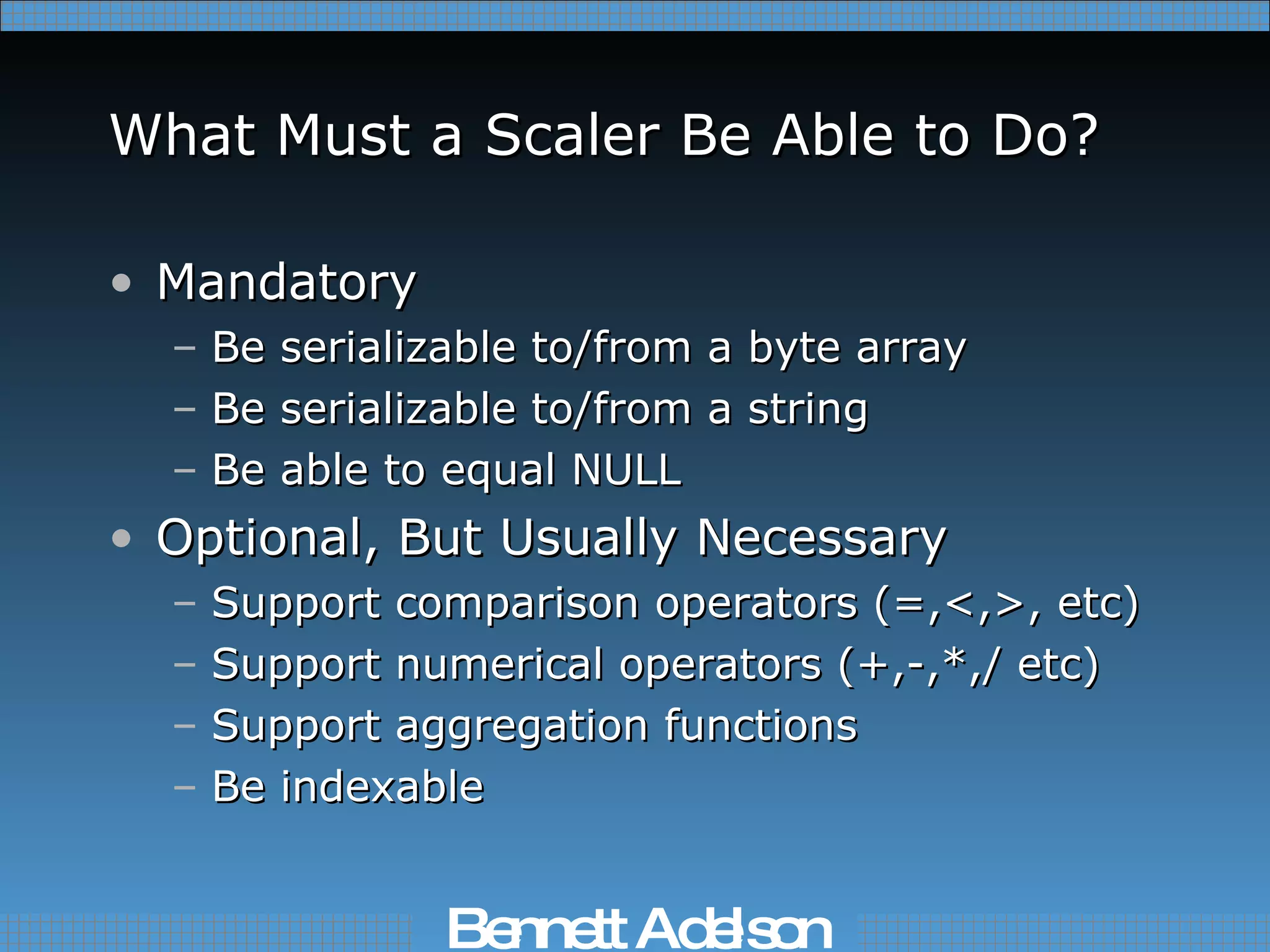
![Creating a UDT Can be a Class or Struct Must have [SqlUserDefinedAttribute] Must implement INullable Must override ToString() Must have a static Parse() that converts a string to an instance of the UDT](https://image.slidesharecdn.com/introduction-to-threading-in-net693/75/Introduction-to-Threading-in-Net-61-2048.jpg)
![Binary Serialization of UDTs Byte stream cannot exceed 8,000 bytes If [SqlUserDefinedAttribute] is set to Format.Native, SQL Server will handle serialization All UDT fields must be “blittable” I.e., fields that are simple value types Sort order must be based on order of the binary fields Use Format.Native whenever possible](https://image.slidesharecdn.com/introduction-to-threading-in-net693/75/Introduction-to-Threading-in-Net-62-2048.jpg)
![Format.Native Serialization [Serializable] [SqlUserDefinedType (Format = Format.Native, IsByteOrdered = true)] [StructLayout(LayoutKind = Sequential)] struct MyUDT { … }](https://image.slidesharecdn.com/introduction-to-threading-in-net693/75/Introduction-to-Threading-in-Net-63-2048.jpg)
![User-Defined Binary Serialization [Serializable] [SqlUserDefinedType( Format = Format.UserDefined, IsByteOrdered = true, IsFixedLength = true, MaxByteSize = 17)] struct MyUDT { … }](https://image.slidesharecdn.com/introduction-to-threading-in-net693/75/Introduction-to-Threading-in-Net-64-2048.jpg)
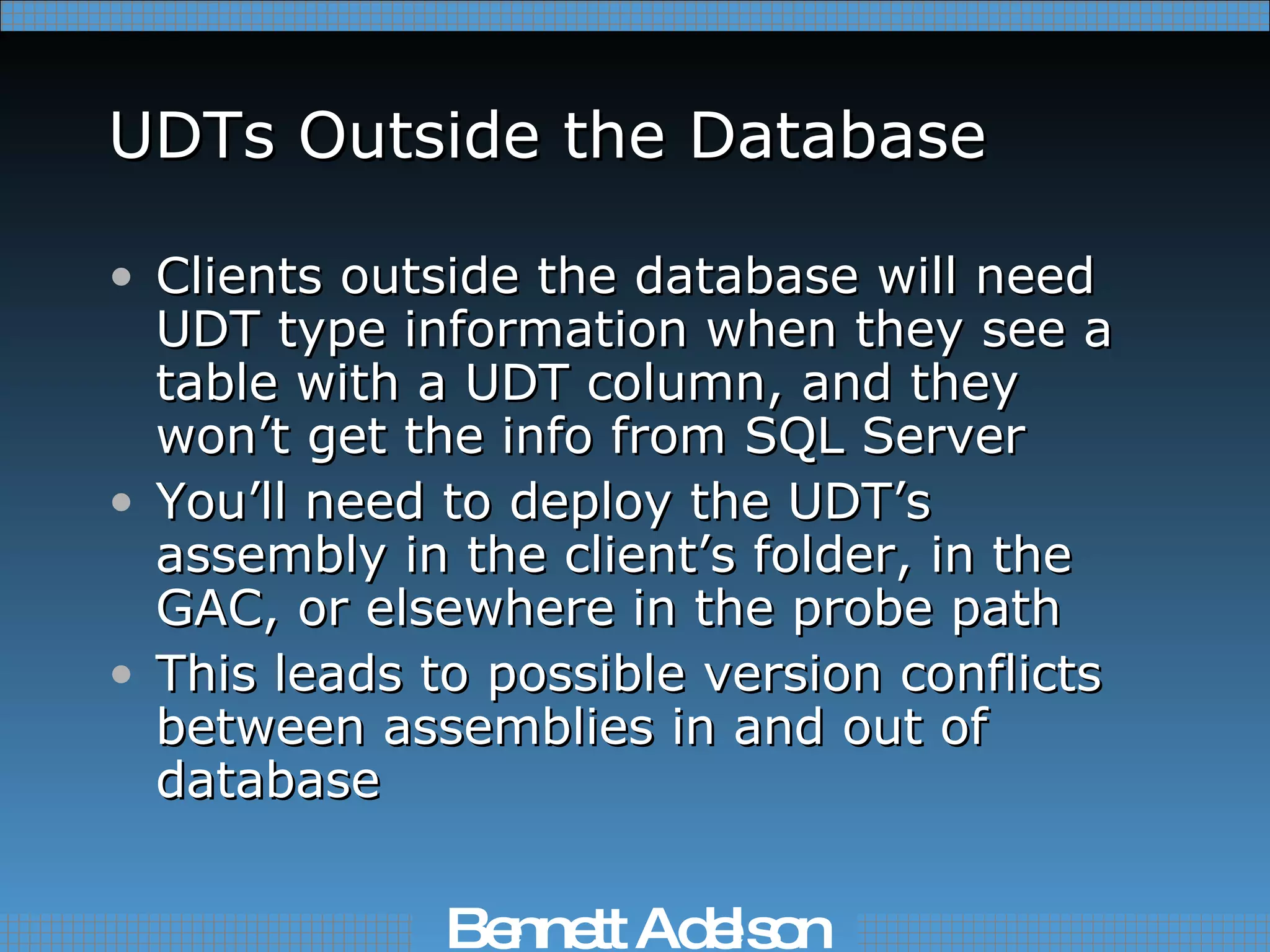
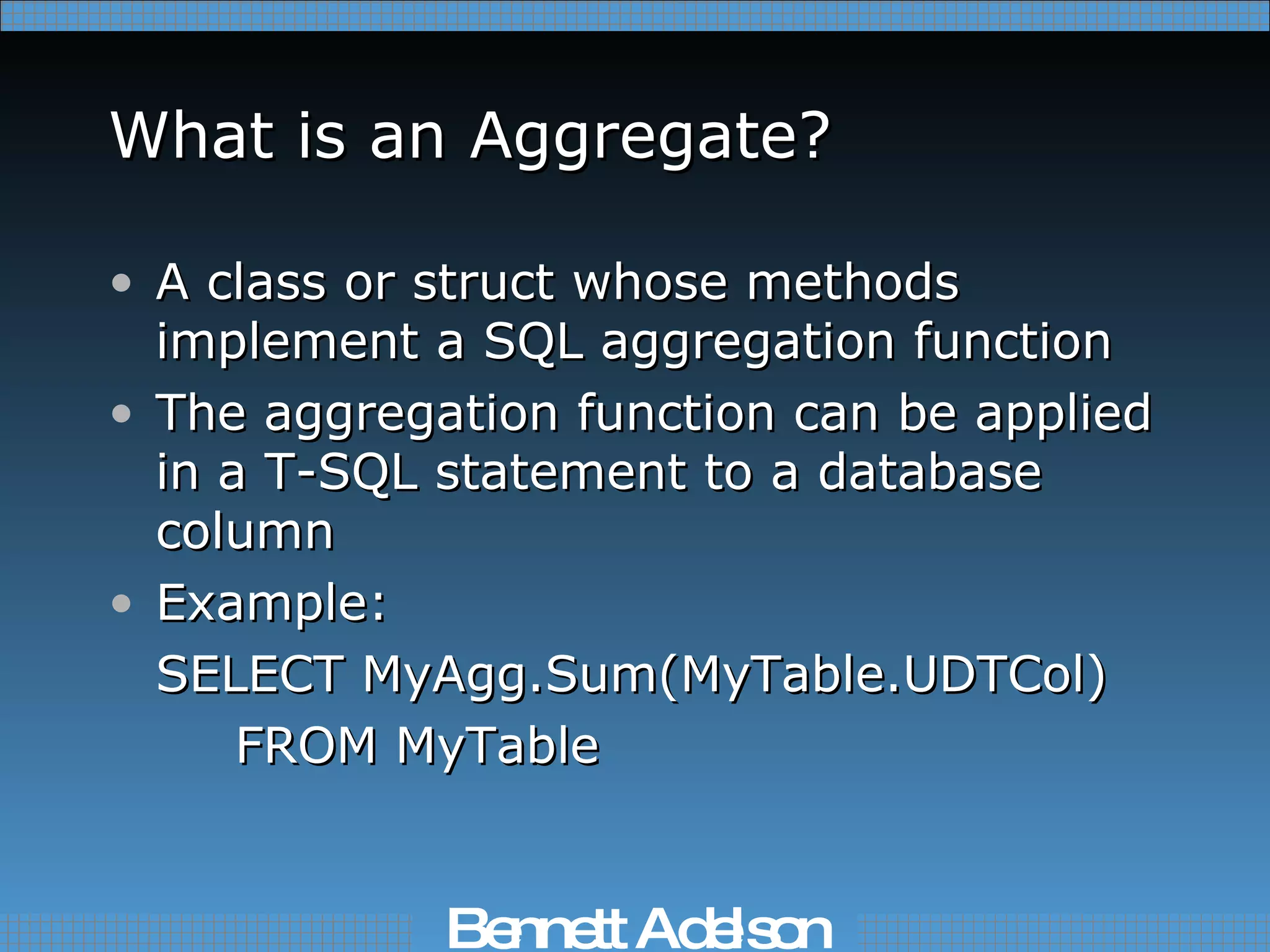
![Creating an Aggregate Class or struct must have [SerializableAttribute] Class or struct must have [SqlUserDefinedAggregateAttribute] Must provide four public methods: Init Accumulate Merge Terminate](https://image.slidesharecdn.com/introduction-to-threading-in-net693/75/Introduction-to-Threading-in-Net-67-2048.jpg)
